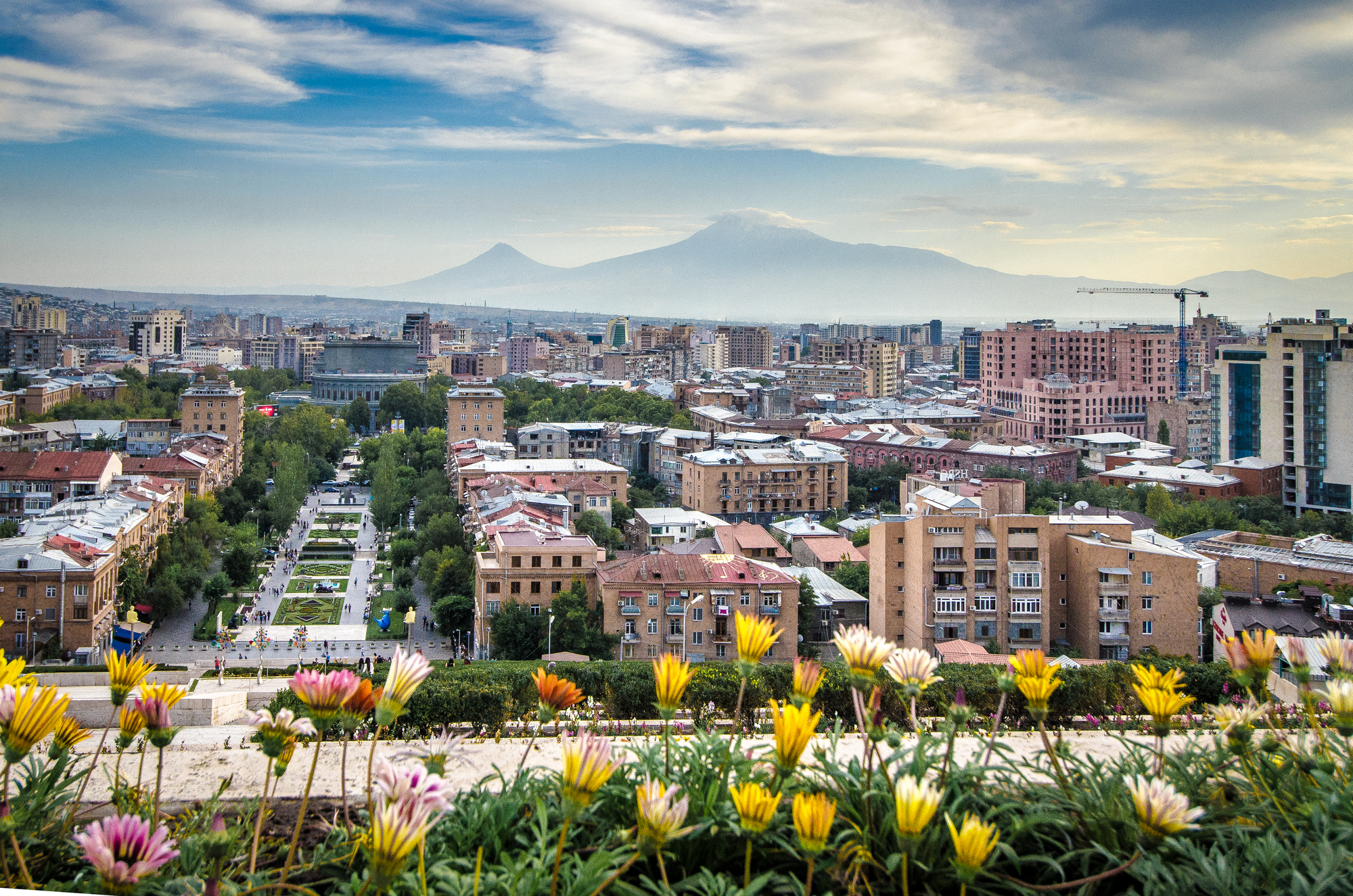
Yerevan is the capital of Armenia. In 782 B.C. Urartu king Argistis founded the fortress and the town of Yerebuni. Now Yerebuni, historical center of Yerevan, its Old Town, actual open-air museum famous for numerous palaces, temples and other hisorical monuments, actual open-air museum. Not with standing dramatic history of Armenian people Yerevan is a modern city with a blend of contemporary and ancient architecture, major economic and cultural center of Armenia.
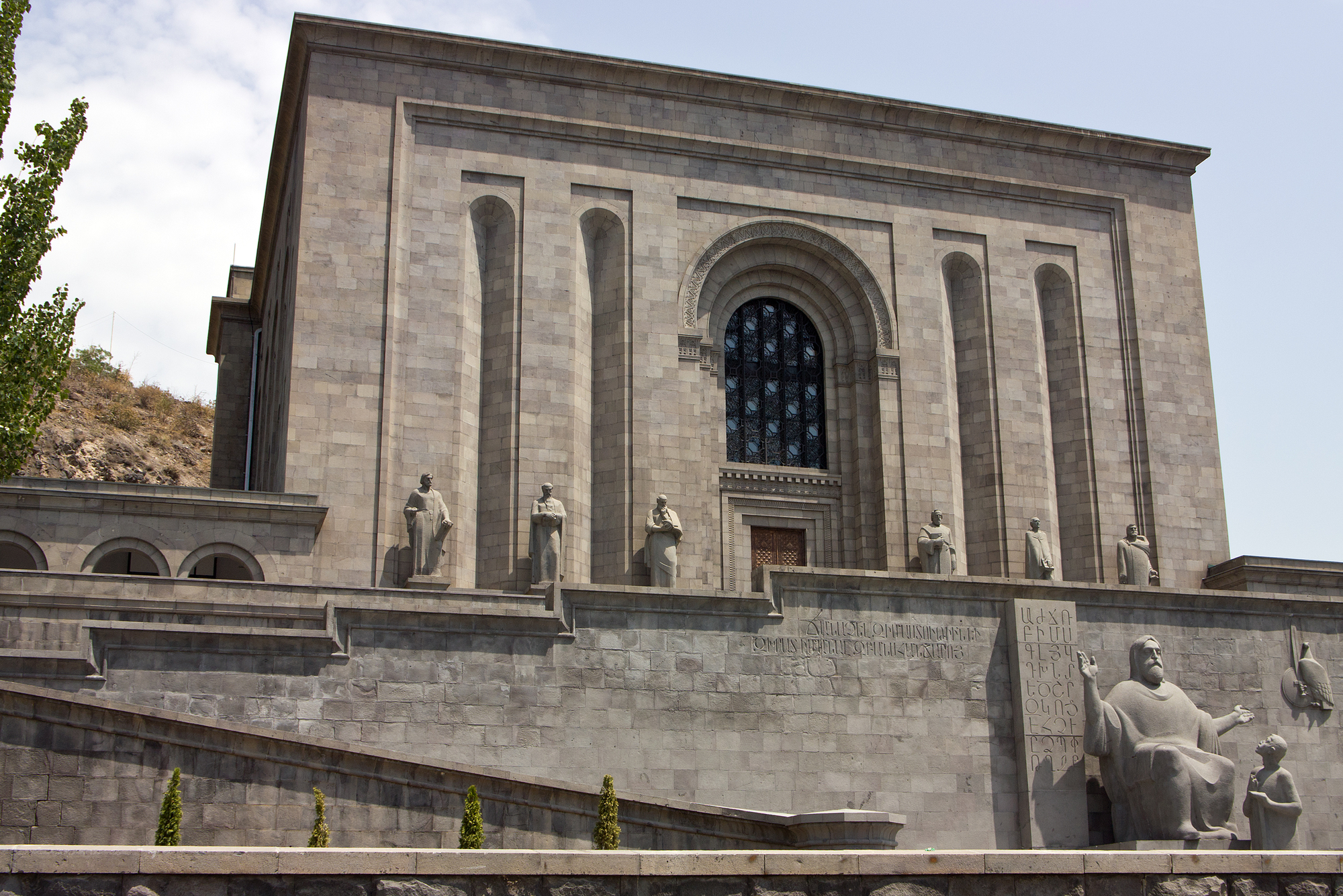
We recommend you to visit some local museums both within and outside Yerevan. The Yerevan City Hisory Museum presents more than 94 thousand archaeological, ethnographic, numismatic, paintings, sculptures, letters, books, photographs, appliances and household items illustrating the life of the city and its inhabitants since ancient times to the present day. The National Gallery of Armenia, one of the largest fine arts museum in the former USSR, exhibits the great collection of Armenian, West European and Russian pictures. Matenadaran Museum is treasure of ancient manuscripts and books established in 1959 on the basis of the nationalized collection of the Armenian Church formerly held at Etchmiadzin. The Martiros Saryan Museum displaying dozens of works of the famous Armenian XX century painters.
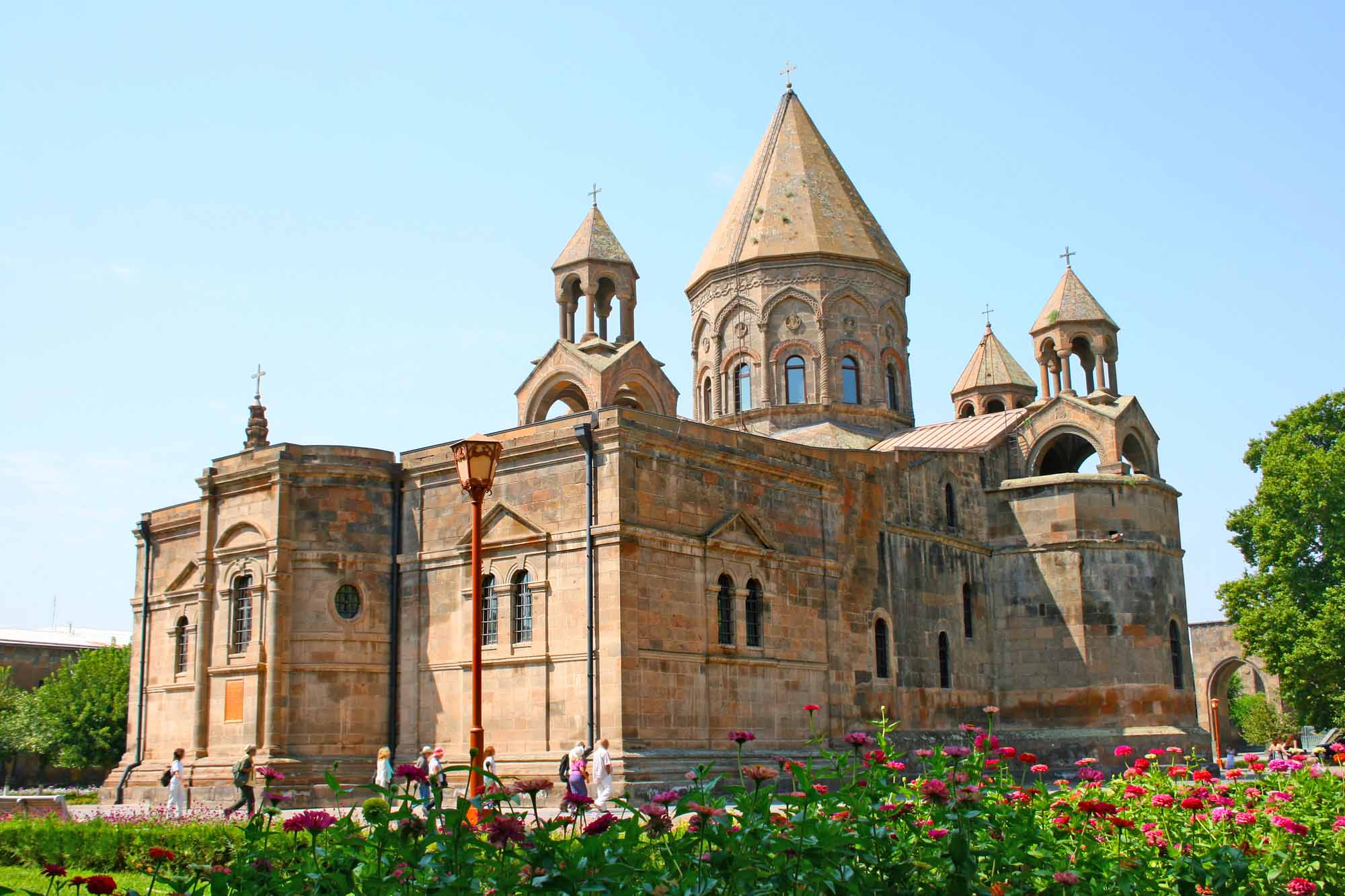
In town of Etchmiadzin (22 km of Yerevan) you can visit the Etchmiadzin Cathedral. It is considered to be the first cathedral built in ancient Armenia and counts to one of the world’s oldest (the IV century) Cristian churches. The cathedral complex has been called «Armenian Vatican» or «Armenian Mecca» as it is a major pilgrimage site for religious Armenians worldwide. The cathedral is listed by UNESCO as a World Heritage Site.
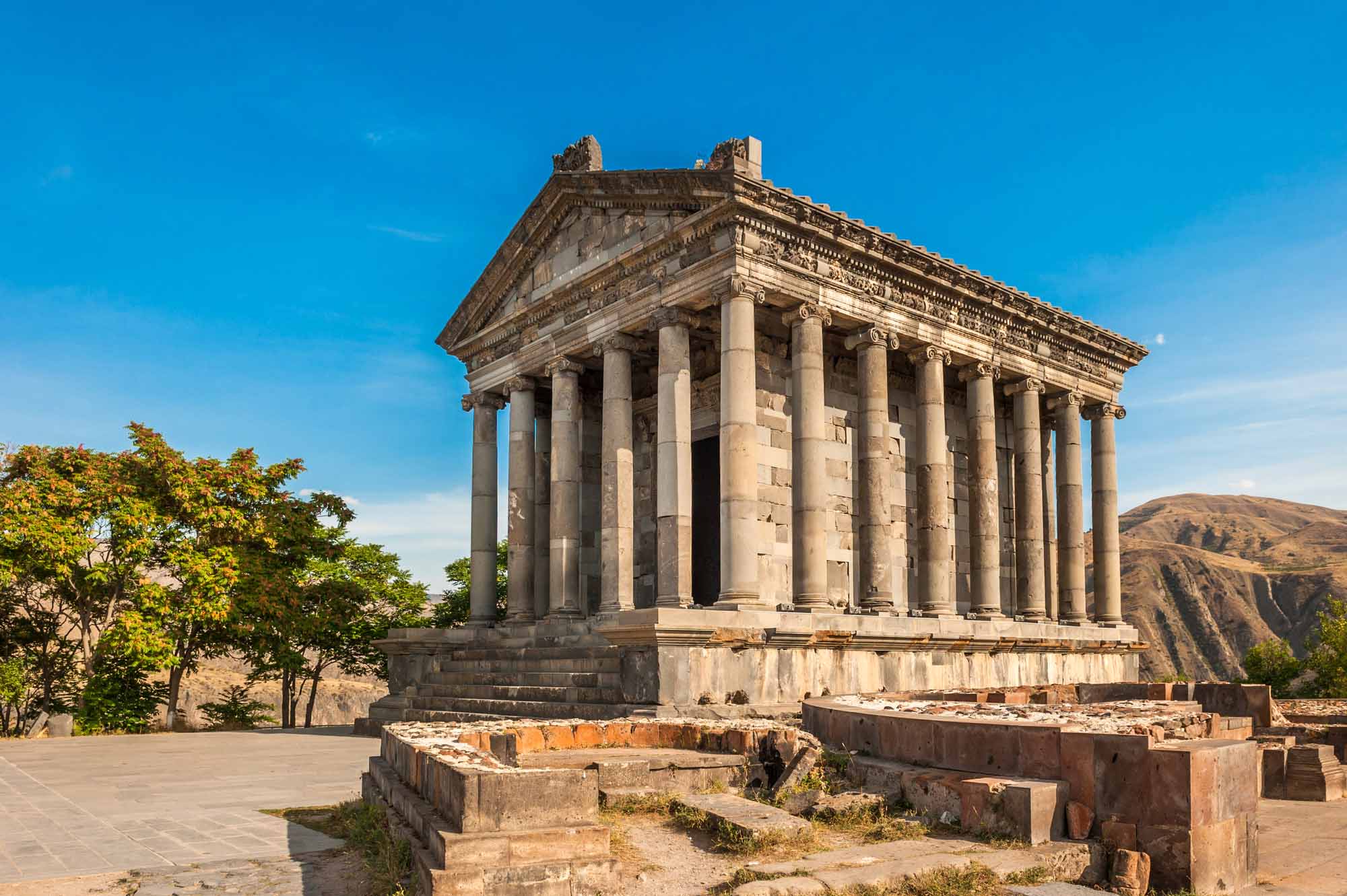
The Temple of Garni (28 km of Yerevan) founded in the I century is the only standing Greco-Roman colonnaded building in Armenia. Built in the Ionic order it is the best-known symbol of pre-Christian Armenia. It is one of the main tourist attractions in Armenia and the central shrine of Hetanism.
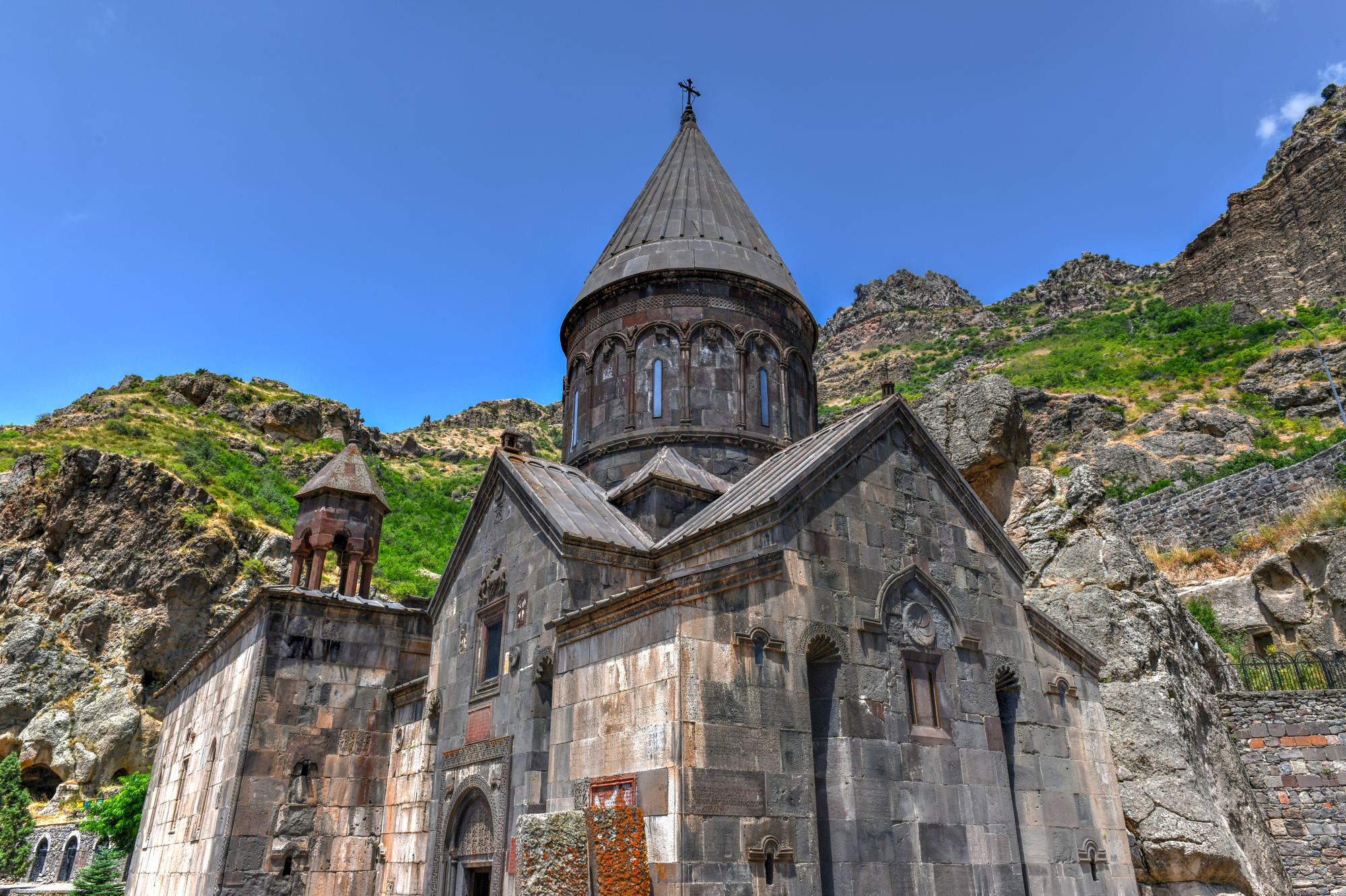
Geghard (7 km of Yerevan) is a catacomb monastery of the XII-XIII centuries being partially carved out of the adjacent mountain, surrounded by cliffs. It is listed as the UNESCO World Heritage Site with enhanced protection status.

Full day the Lake Sevan tour (30 km of Yerevan) will get you to be completely acquainted with fantastic nature of the Caucasus. The Lake Sevan is the largest body of water in Armenia and has significant economic, cultural, and recreational value for the country. At the bank of the lake there is a medieval monastery.
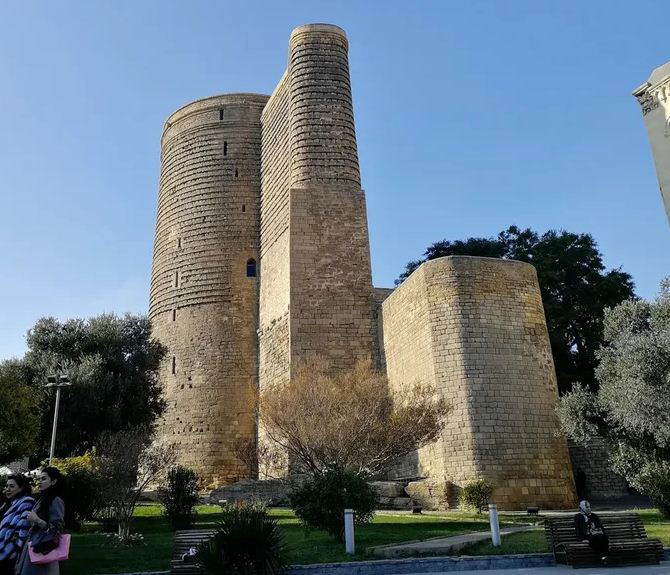
The capital of Azerbaijan is located on the Caspean Sea coast in the southern part of the Apsheron Peninsula. The first records of the city date back to the IX century. Some historians believe it was founded in the V-VI centturies. The word “Baku” comes from Persian word “badcude” which means “a squall caused by mountain winds”. The Old Town (Fortress) is ancient residential area, historical and architectural open-air reserve in the capital of Azerbaijan. Surrounded by well-preserved fortress walls it is the most ancient part of the city. The Maiden Tower (XII century), the main architectural symbol of Baku, is located here. Another arichitectural pearl of the Azerbaijan capital is the Palace of Shirvanshahs (XIII-XVI century). Despite the fact that the main buildings of the ensemble were built at different times the Palace complex makes a complete artistic impression. We kindly recommend you to visit very intersting National Museum of History of Azerbaijan and fantastic Azerbaijan National Carpet Museum where you will get acquainted with one of the most ancient applied arts of Azerbaijan.
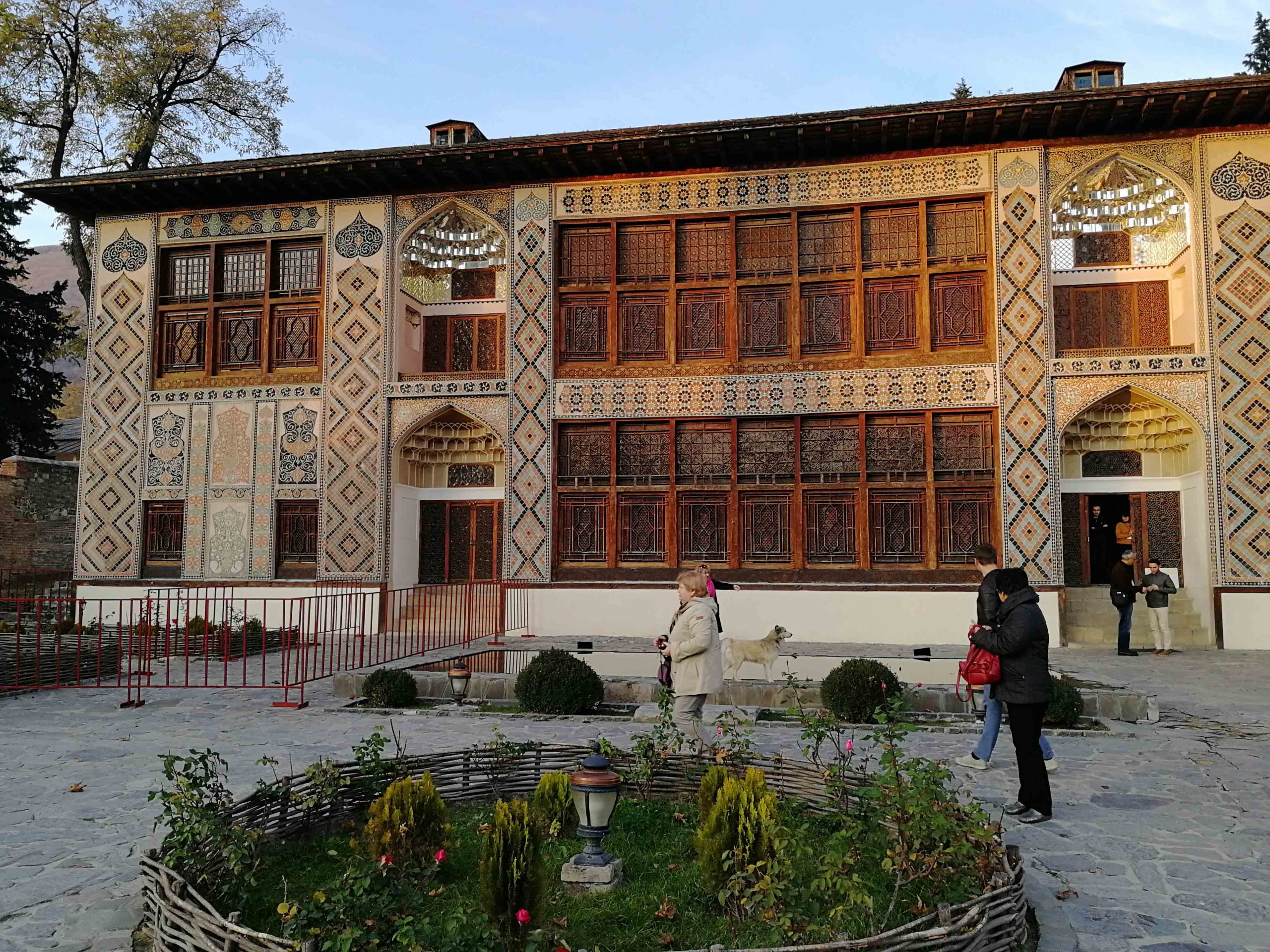
Palace of Shaki Khans located in the city of Shaki (about 300 km to the west of Baku) built in the XVIII century in the Persian style is monument of history and culture of world significance is located in the elevated North-Eastern part of the city on the territory enclosed by fortress walls.
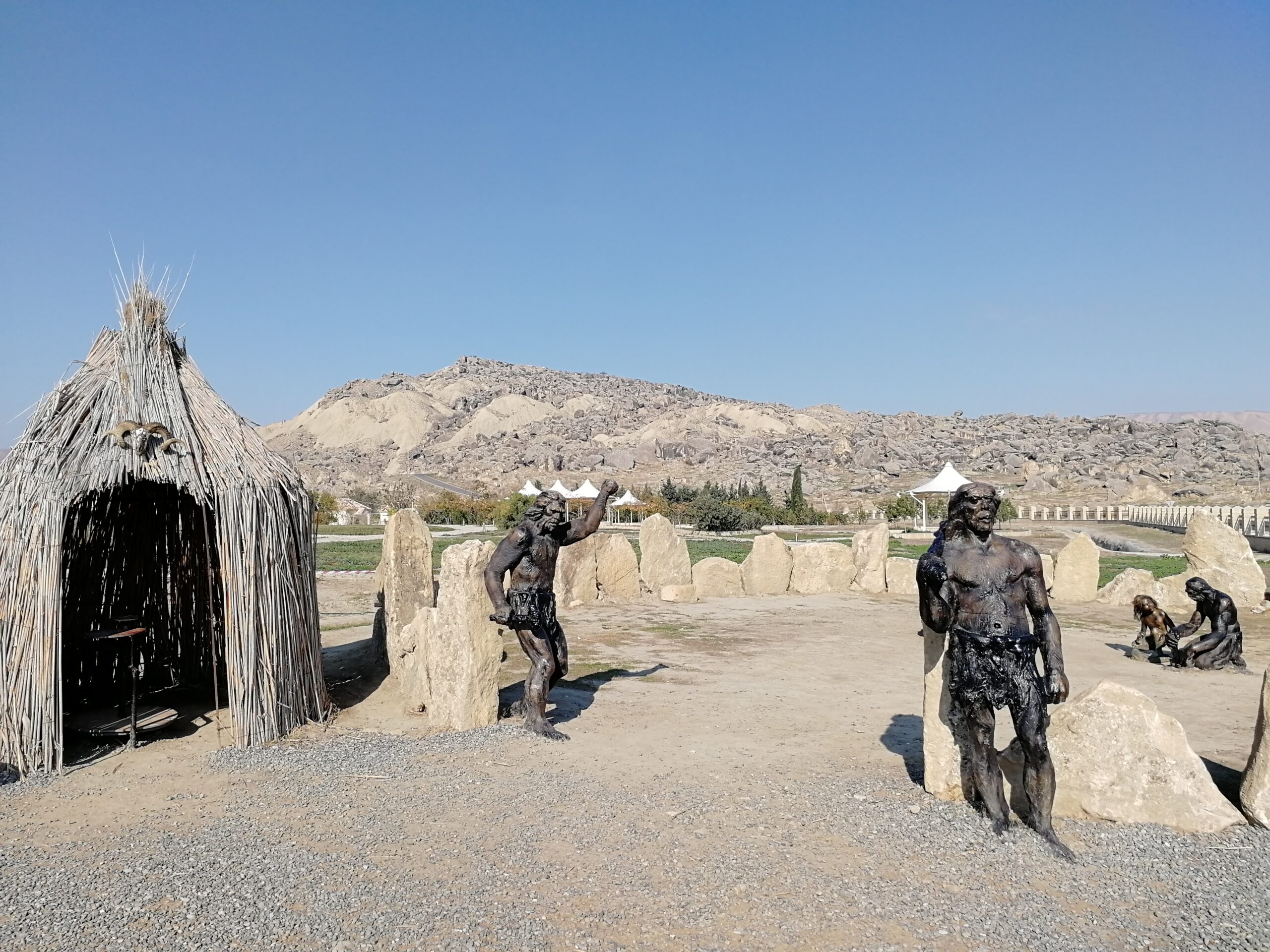
Gobustan State Reserve (64 km southwest of the centre of Baku) was established in 1966 when this area was declared as a national historical landmark of Azerbaijan in an attempt to preserve the ancient archeological monuments, carvings, mud volcanoes and gas-stones.
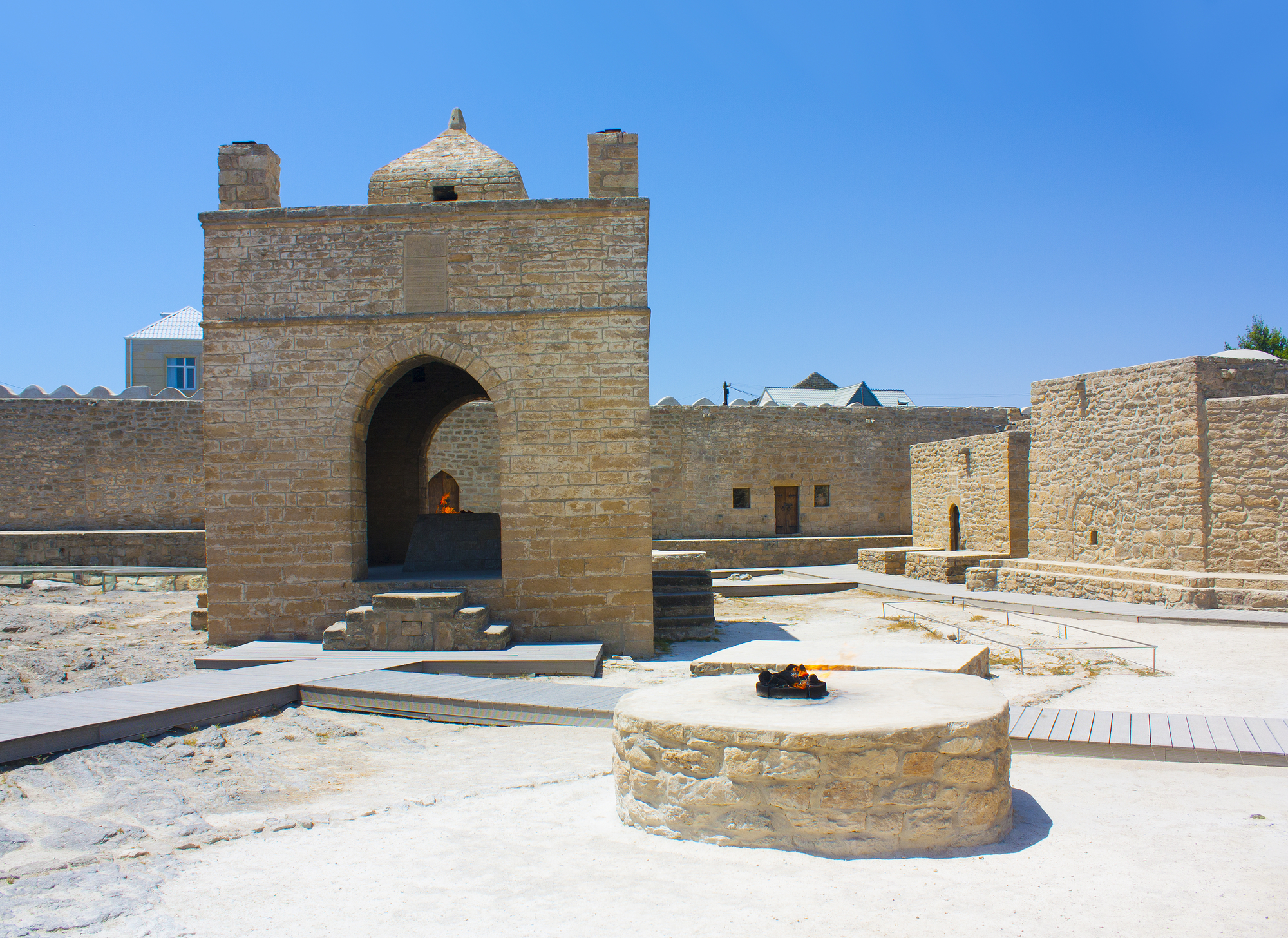
The Baku Ateshgah (Fire Temple) is a castle-like religious temple in Baku suburb at various times revered by Zoroastrians, Hindus and Sikhs. It appeared in the XVII—XVIII centuries on the site of «eternal» unquenchable fires-burning outlets of natural gas. That’s why the temple is called «Ateshgah» which means «House of Fire», «Place of Fire».
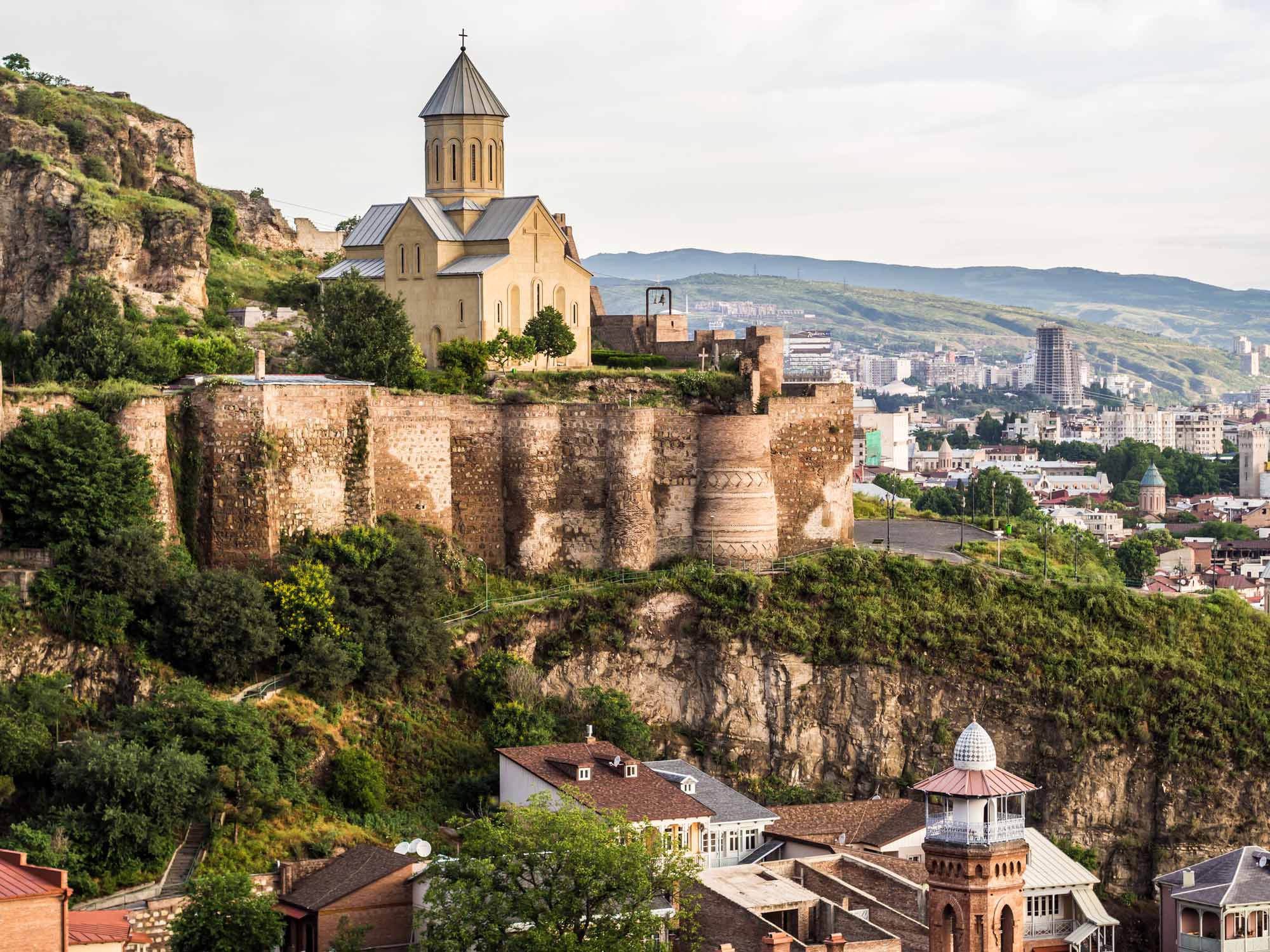
Tbilisi, the capital of Georgia was founded over 1,500 years ago. Since that time it has suffered devastating invasions forty times. Yet each time hard work and devotion raised the city from ruins. Many hisorical monuments have been preserved to our times, among them grizzled time-honoured walls and decoartions in the Old Town. Here you will immerse yourself in the unique world of narrow streets, galleries, two-storey and three-storey stone and brick buildings with carved wooden balconies. On the high bank of the Kura River squeezed between the mountain rocks you can see the fortress of Narikala. Its first bastions were constructed in the IV century. On the opposite bank there is Metekhi temple dation from the V century. These strongholds shielded an important East-West trade route along the Kura. Close by there is Sioni Monastery (VI-VII centuries), a residence of the Catholicos of All Georgia now. The next very popular both among residents and tourists area of old Tbilisi is Abanotubani known with its bath-houses (XVII-XIX centuries) standing on the natural sulfur springs.
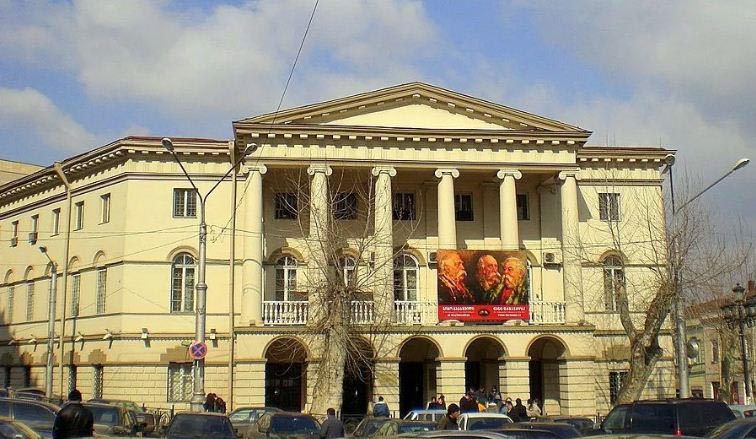
The most important and large part of the Art Museum of Georgia (Shalva Amiranashvili Museum of Fine Arts) exposition is the collection of Georgian art illustrating the development of national artistic culture from ancient times to the present day. The second largest collection is the Oriental one. The most significant part of it is the collection of the Persian artistic works of the Qajar Dynasty period. It includes several miniatures of Persian court artists — portraits of beauties, shahs and nobles.
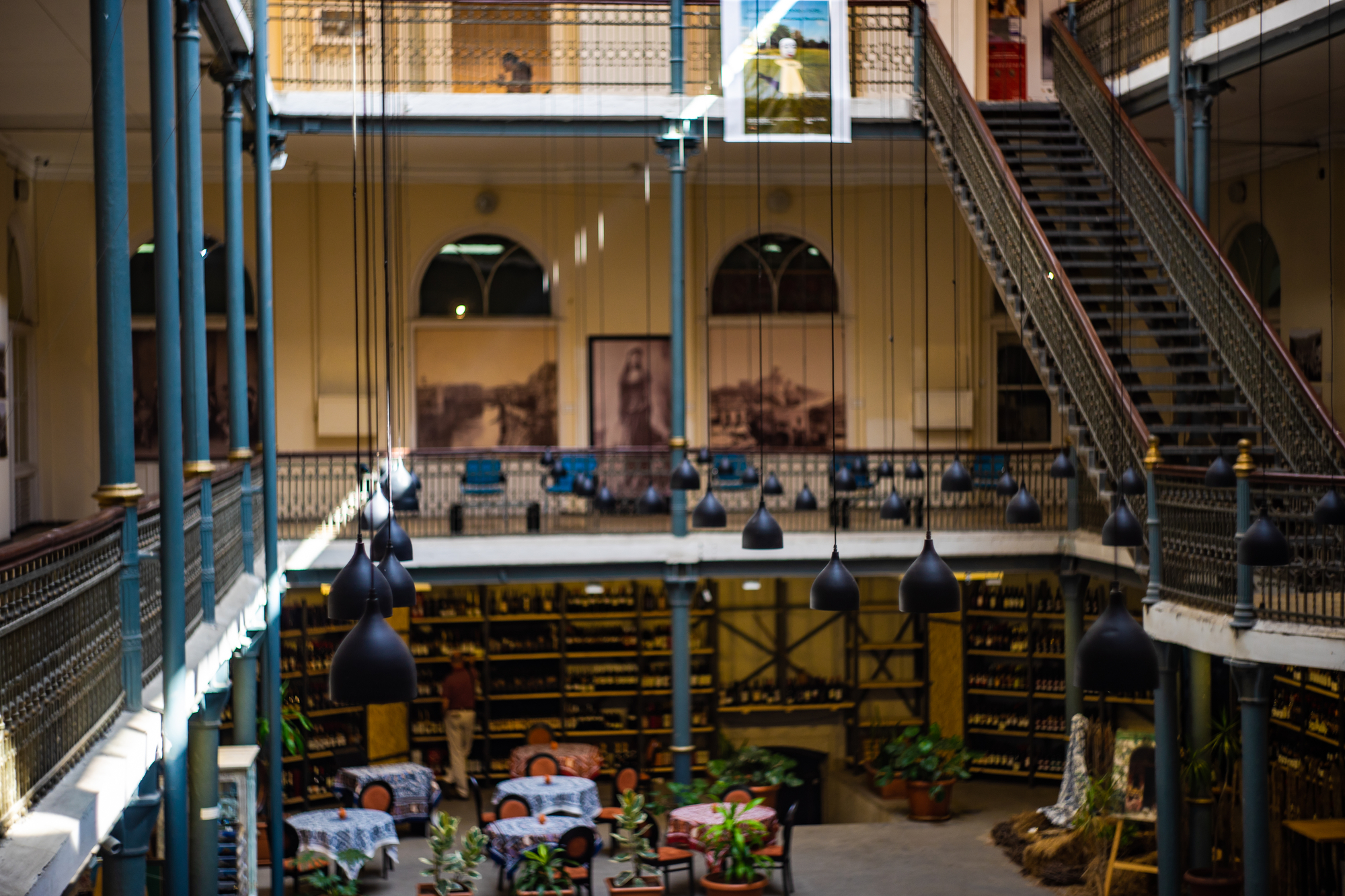
Funded on 1910 The Tbilisi City Hisory Museum is located at the building of the former caravanserai built in 1818, one of the significant shopping centers of the city at that time. The Museum exhibition tells mainly about Tbilisi of the XIX century. There is a collection of old Tbilisi houses models, samples of that time clothing, furniture and utensils.
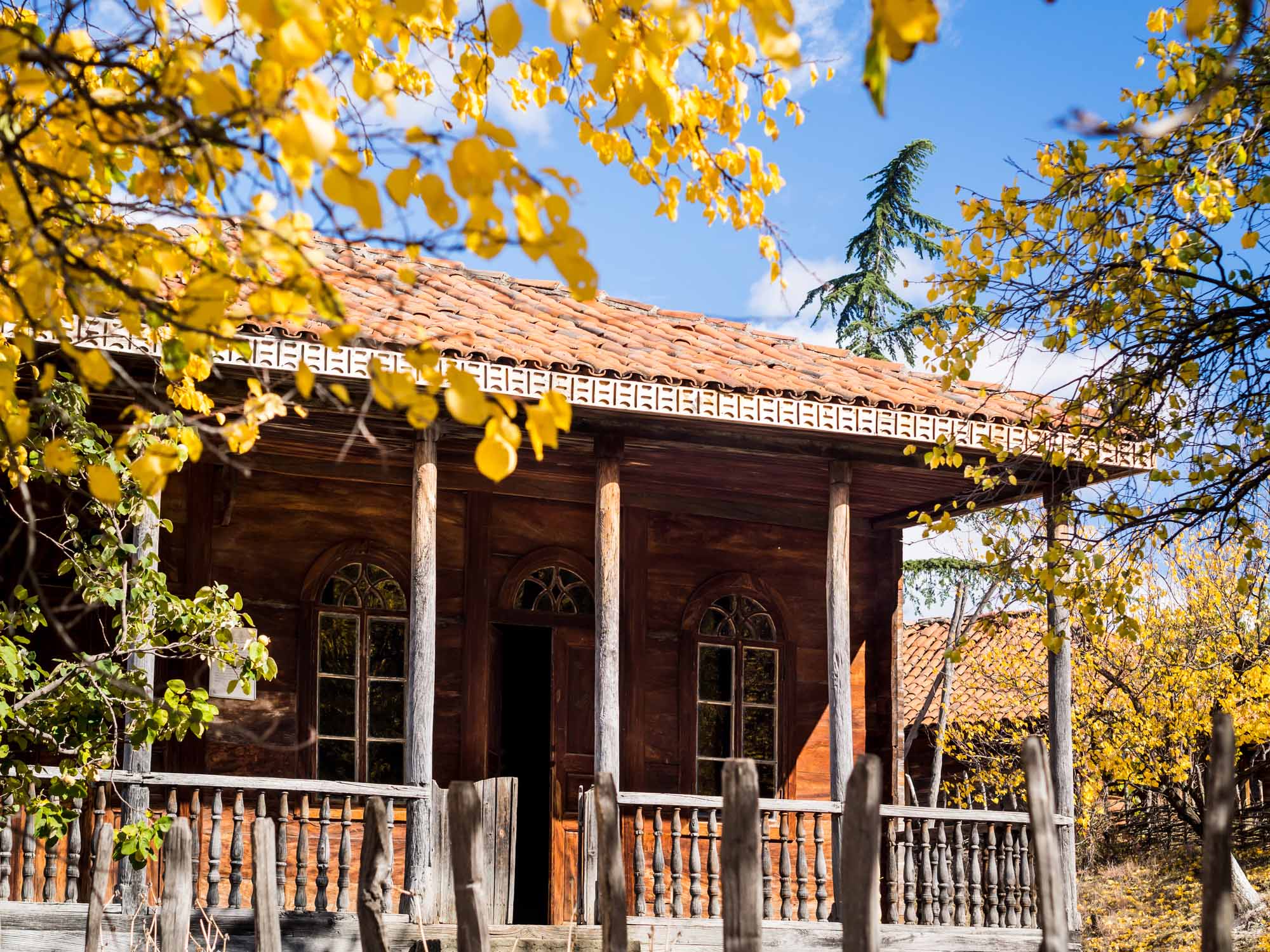
Tbilisi Open Air Museum of Ethnography occupies 52 hectares. It is devided for 11 zones presenting traditional buildings of different provinces of Georgia, early Christian Basilica and a family tomb with a sarcophagus of the VI—VII centuries, as well as a collection of traditional household items — spinning wheels, knitting frames, clothing, carpets, ceramics, and furniture.
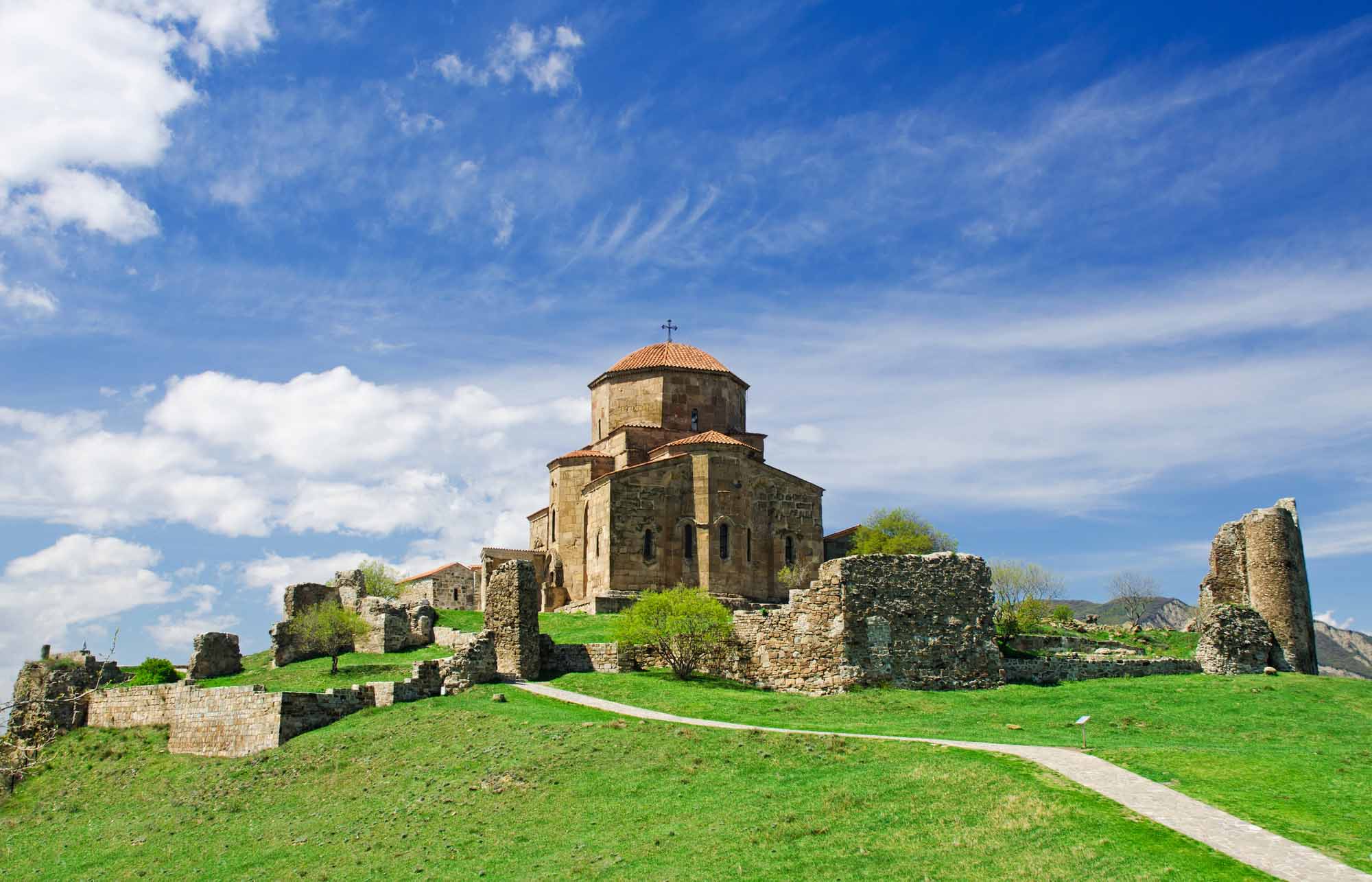
Small town of Mtskheta (70 km to the north of Tbilisi) is the former capital Georgia founded in the V century B.C.. Local historical monuments are included to the UNESCO World Heritage list. Among them are the Svetitskhoveli Cathedral (XI century), the main temple of Georgia and the Djvari Monastery (VII century) founded at legendary place connected with christening of Georgia in the IV century.

Gori (Joseph Stalin Museum). City of Gori (118 km to the west of Tbilisi) is known as Joseph Stalin’s native land. Inside local Stalin Museum located in a pretentious late Stalinist building stylized as an Italian Palazzo you can see small wooden hut where his father, shoemaker Vissarion Jughashvili, rented a room. Here Joseph Stalin was born in 1878 and spent his first four years. The main block of the museum presents Stalin’s office furniture, his personal effects and gifts presented him over the years, photographs, paintings and newspaper articles, one of twelve copies of the death mask of Stalin taken shortly after his death in 1953. In the yard of museum you can see Stalin’s personal railway carriage used by him since 1941 including his attendances at the Yalta and the Tehran Conferences.

Uplistsikhe located on the left bank of the Kura River not far from Gori is an ancient cave city, one of the first cities on the territory of Georgia. It was built about the II — early I Millennium B.C. and finally abandoned by its inhabitantsin in the XIX century. This unique multi-layered archaeological monument kept remains of architectural and religious structures built over several millennia preserved. In period of its heyday Uplistsikhe included more than 700 caves and cave structures and 150 of them had been preserved to date.
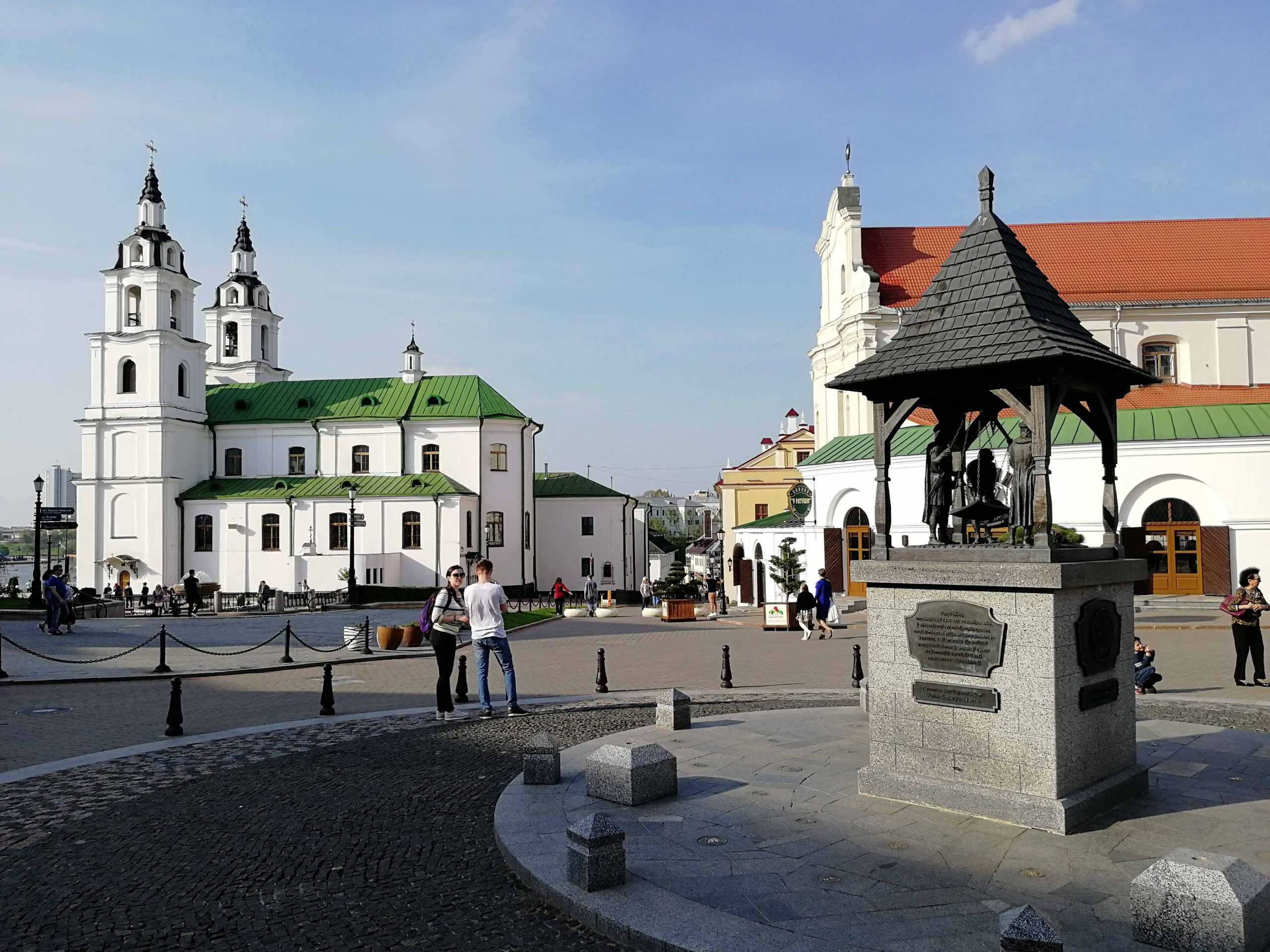
Minsk, the capital of Republic of Belarus, located on the Svisloch River is one of the most ancient cities in the post-Soviet space.The first written reference to this city located on the ancient watershed connected the Baltic and the Black Seas was made in 1076. During the WW II Minsk was completely destroyed but soon after the end of war Minsk was rebuilt. Now it is twice as big as before invasion. Today Minsk is a large railway junction connecting with Warsaw, Moscow, Vilnius and Kiev. In the capital of Belarus you can see many numerous places of interest of different epochs: the Independence Square with the House of Government; the Roman Catholic red-brick Church of Saints Simon and Helena (the Red Church, 1909); Victory Square with its 38 meters gray obelisk and eternal flame honoring the heroes of the World War II; The Trinity Suburb with XIX century downtown buildings restored; Orthodox Holy Spirit Cathedral and St. Peter and Paul’s Church (XVII century).
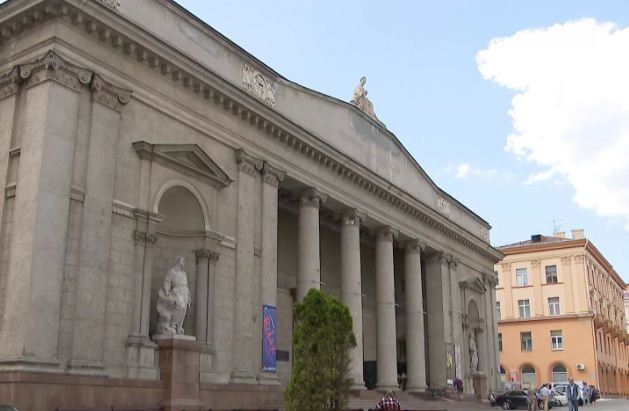
Following museums in Minsk are recommended: The Belarusian Great Patriotic War Museum opened shortly after the liberation of Minsk from Nazi troops in 1944 is the world’s first museum of the history of the WW II with the world’s largest collection of WW II artifacts. The Belarusian National History and Culture Museum is the largest museum in Byelorussia. Currently the Museum contains about 370 thousand items dedicated to the archaeology, fine arts, iconography, ceramics, book printing, folk art and folk clothing, numismatic, weapons, written sources, sphragistics, porcelain and glass, photo documentary, ethnographies. The National Art Museum of the Republic of Belarus. In WW II period collection of the largest in Byelorussia Art Gallery was completely lost. The occupied Minsk was visited by the Dresden Gallery director Hans Posse authorized to create a personal Museum of Hitler in Linz, by Kajetan Mühlmann authorized to register cultural and artistic values in the occupied Eastern lands and by representatives of the Heritage company headed by Himmler. As the result of all these “scientific researches” about 170 of the best Russian and Western European art works were confiscated and sent to the Reich. After the end of the war the Museum’s collection was created anew from scratch. Some paintings were purchased, some were transferred to Minsk by other museums of the USSR. Now the Minsk Art Museum is great collection of Byelorussian, Russian and West European fine art again.
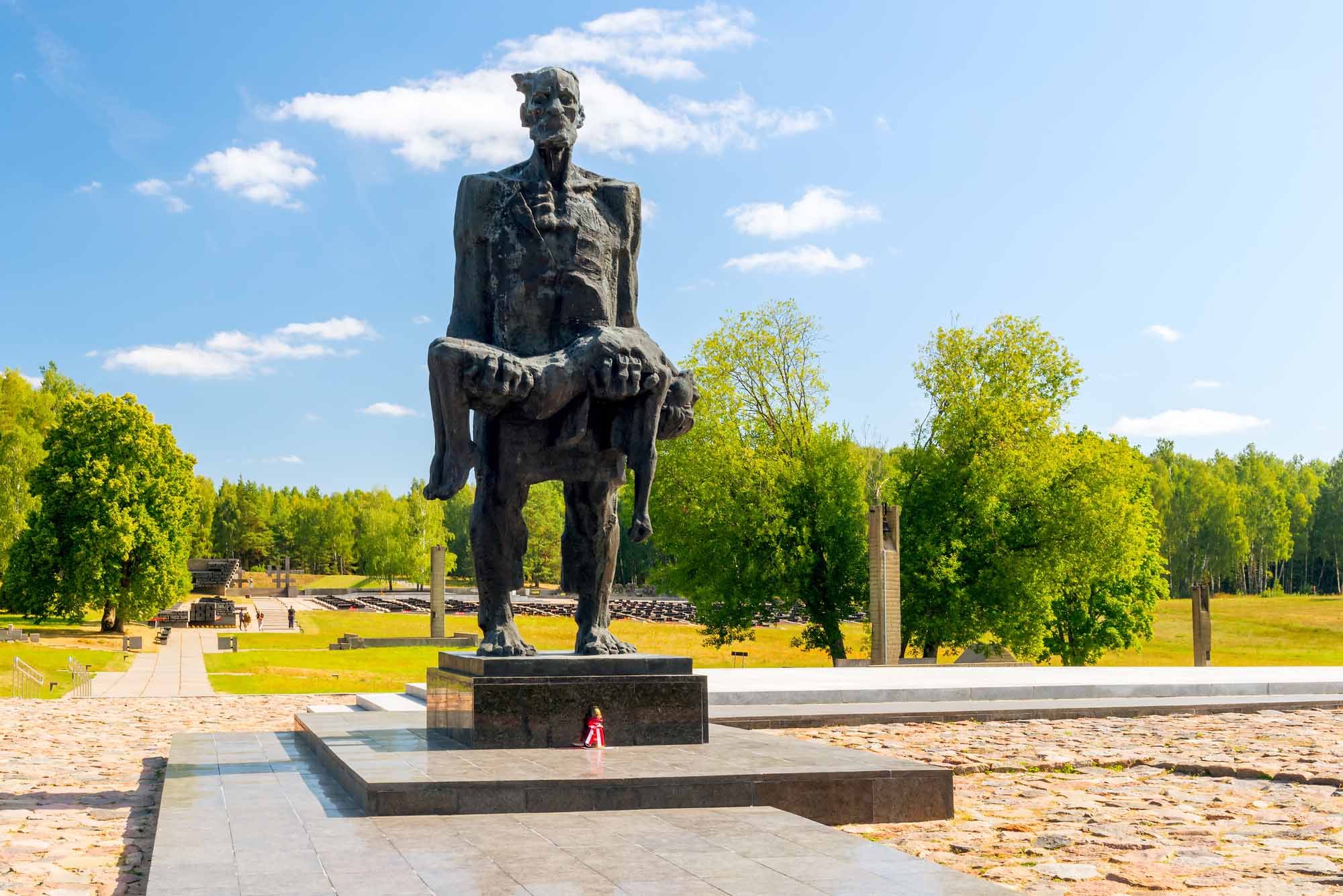
The small village of Khatyn located near Minsk was burnt down together with its 149 residents (75 children among them) on 22 March1943. The memorial opened in Khatyn in 1969 is dedicated to all Belarusian villages burnt down with their inhabitants by Nazis and their collaborators (186 villages in all) and as well as to all victims of the WW II in Belarus (about 25% of all Belarus residents was lost).
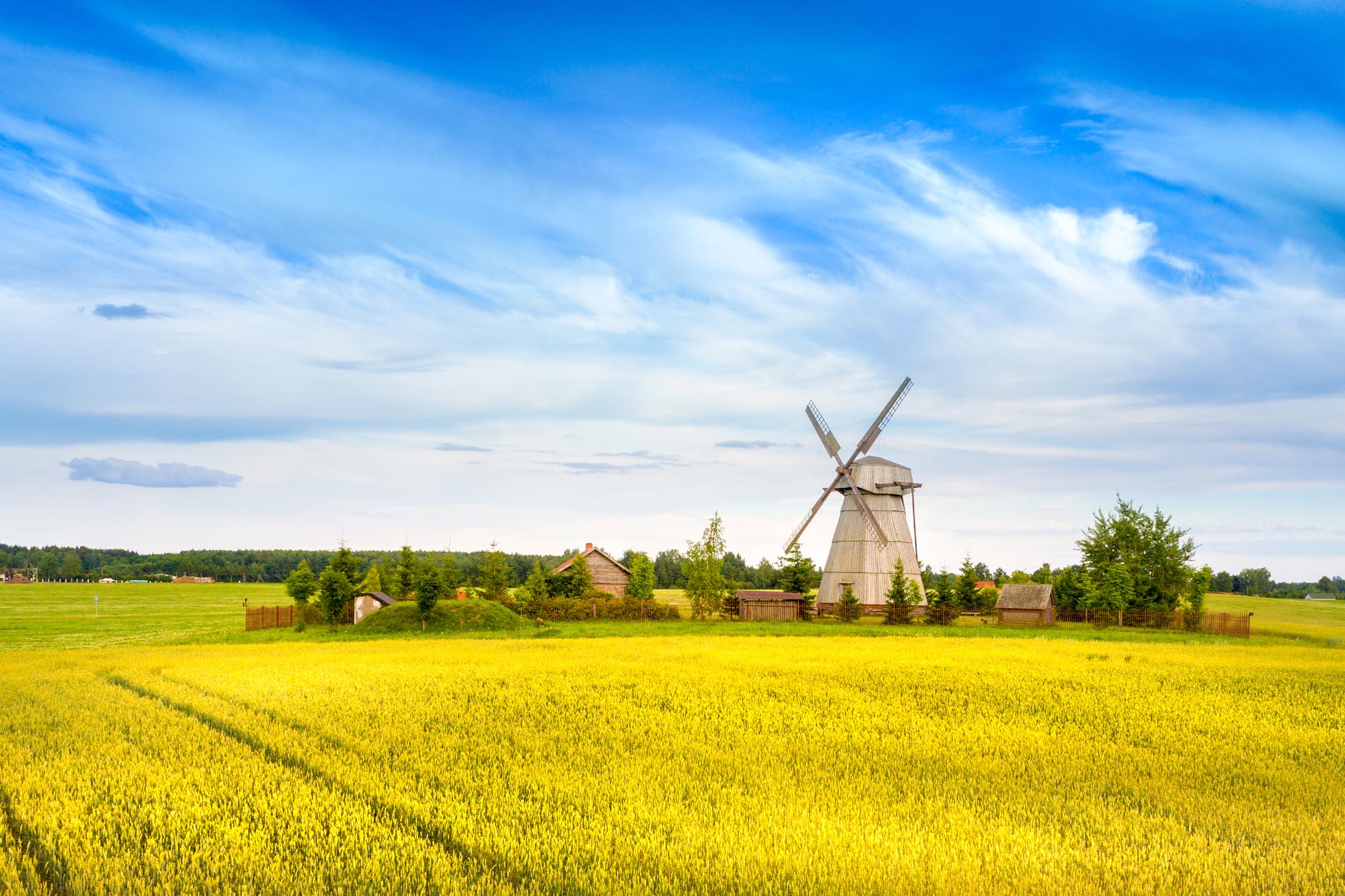
Dudutki open air ethnographic museum (45 km of Minsk). Here you will see the old and the only in Belarus functioning windmill, have opportunity to take for a few minutes the place of the master at the potter’s wheel, visit a rural smithy and the Belarusian traditional bakery, have a chance to purchase authentic souvenir.
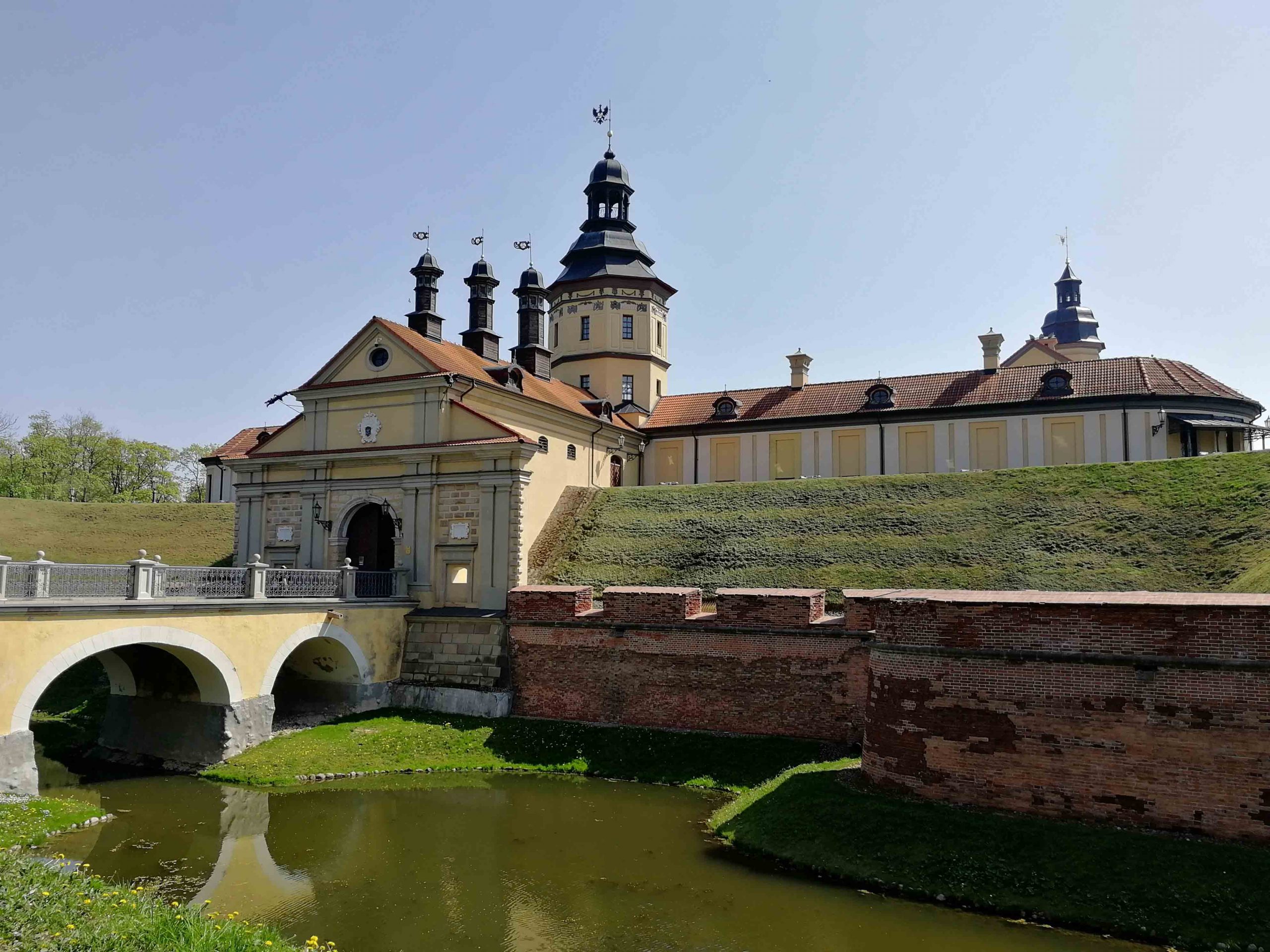
Nesvizh Castle located at the town of the same name (about 120 km to the south-west of Minsk) was constructed in XVI-XVIII. Till the XX century it was a residence of the Radziwiłł family, one of the most influential in the Grand Duchy of Lithuania and later in Poland. After several reconstructions the medieval feudal castle turned into the Palace and Park ensemble with a large courtyard surrounded by monumental buildings where many architectural styles were intertweaved. Decorated with slender towers and turrets the Castle has acquired a romantic appeal. The water in the ponds and the bright greenery of the landscape castle completed the formation of the Palace and Park complex, one of the best in Eastern Europe.
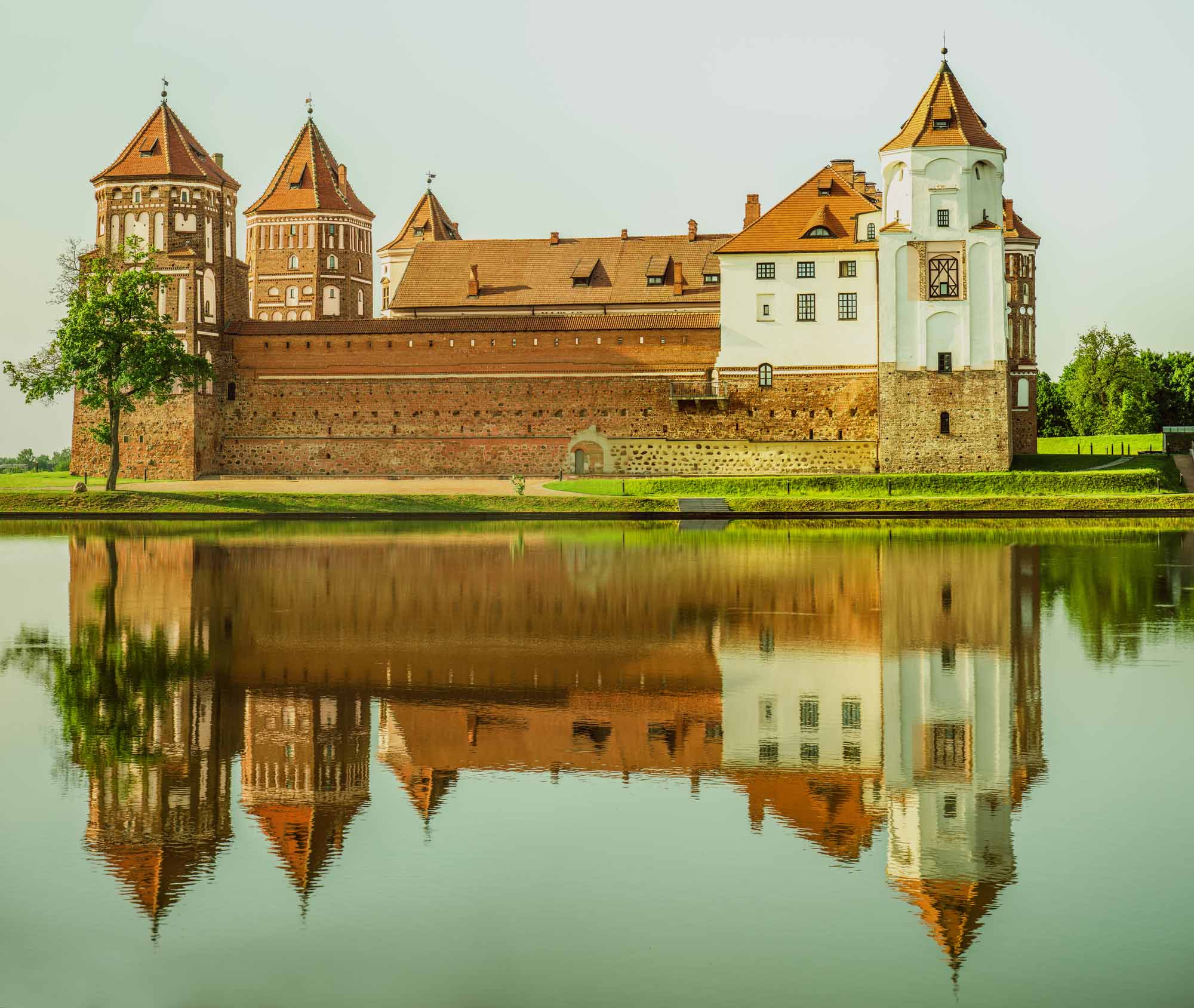
Mir Castle (about 100 km to the south-west of Minsk and 30 km from Nesvizh), another residence of the Radziwiłł family was founded in XVI. The last owners of the Castle, the princes Svyatopolk-Mirsky possessed it till the occupation of the East territories of Poland by the USSR in 1939. The castle complex has been restored and rebuilt several times but these processes have not made significant changes to its volume-planning and composition systems. The Mir Castle has preserved its original stylistic Gothic and Renaissance elements, while acquiring new unique elements of Baroque and Romanticism.
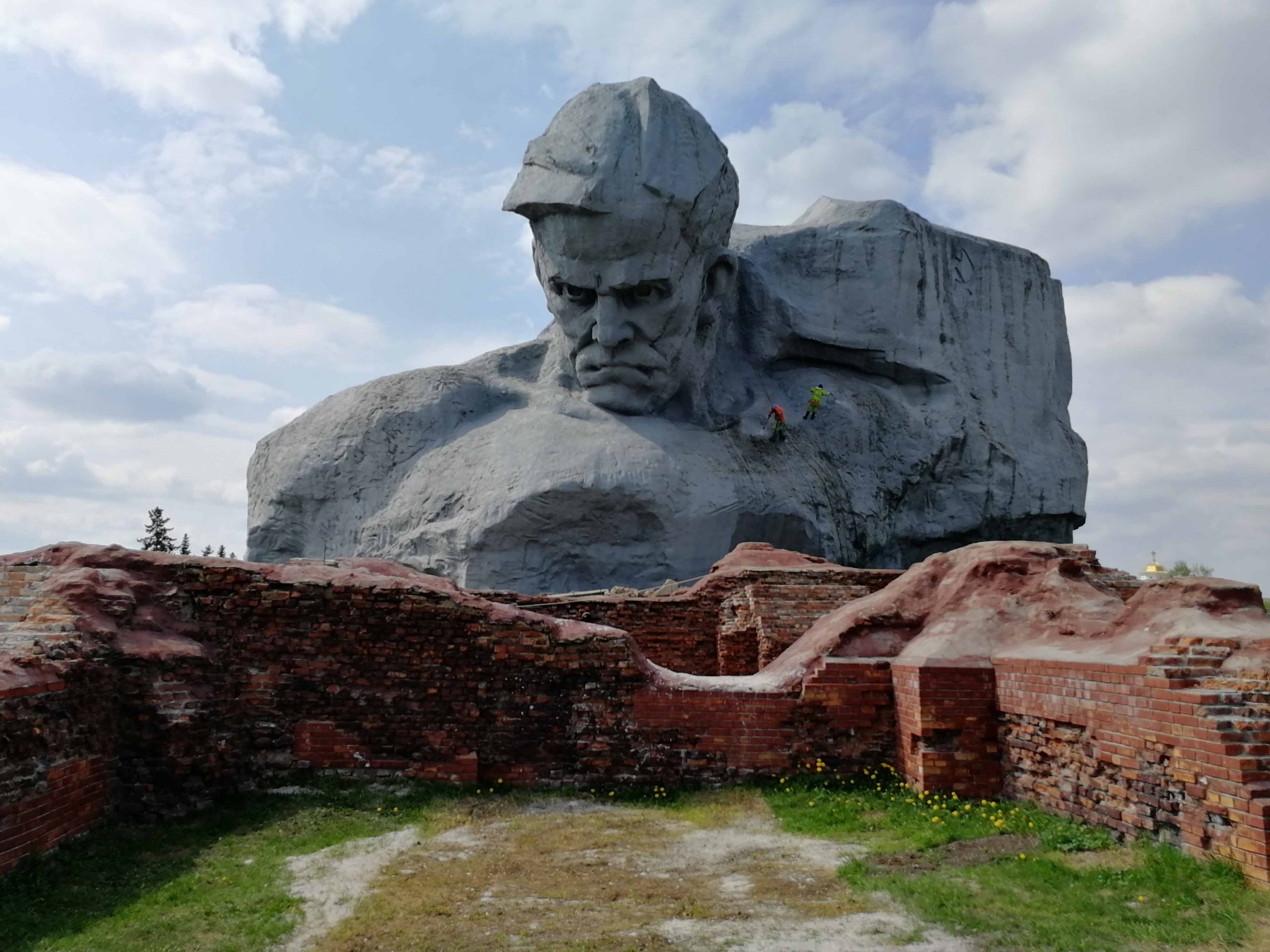
City of Brest, the top western city of Belarus located at the Polish-Belarus border is known as place where the unification of Catholic and Orthodox Christianity under supremacy of Catholic Church in the territory of Rzechpospolita was proclaimed in 1596 and also as a place where 3 March1918 the Treaty of Brest-Litovsk which fixed capitulation of Bolshevik government to Germany and its allies was signed. In the German invasion of the USSR period in summer 1941 Brest became one of the first points at the Nazi army line of strike. Currently it is known for the heroic deed of the Brest Citadel defenders who resisted the enemy for more than a month. The ruins of the fortress have preserved the same outlook as they had during the WW II years. At the Brest Citadel you can visit the Defense Museum and to see impressive samples of Soviet monumental propaganda: the Thirst and the Courage sculptural compositions (1971). In 1982 on the territory of the Volyn Fortification of the Brest Citadel the Berestye Archeological Museum was opened on the site of archaeological excavations conducted since 1960s. Here you can see the uncovered remains of the ancient Brest Detinets (central fortified part of a city) and the Posad (craft settlement) constructed in the XIII century on a promontory formed by the Bug River and the left branch of the Mukhavets River. The exhibition dedicated to the lifestyle of the Slavs who inhabited these places in ancient times presents 28 residential and commercial log buildings preserved with specially developed synthetic substances and archaeological finds made during the excavations: metal products, glass, wood, clay, bones, fabrics, numerous ornaments, dishes, and parts of looms. We also recommend you to visit unusual Museum of Saved Treasures located at small mason of the early XX century where you can see collection of fine and decorative arts works that were confiscated by the Brest Customs stopping their illegal export abroad. Part of the Museum exhibition is dedicated to technical means of customs control. It is possible to compare what devices were used by the Brest Customs officers in the 1970s-1980s, what they use now and to learn a lot of interesting things how and where the malefactors hid arts and Antiques.
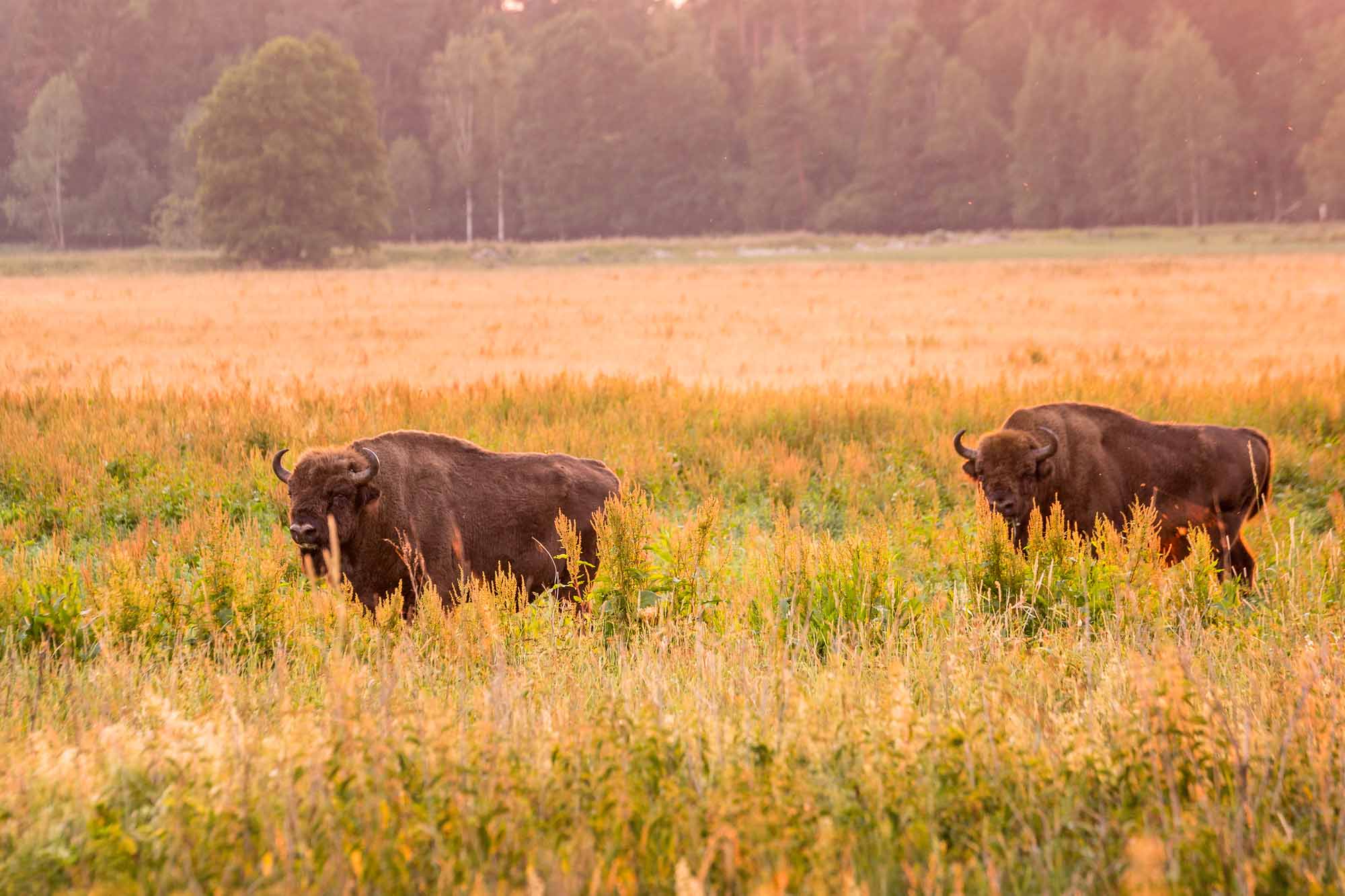
Not far from city of Brest the Białowieża Forest (the Belavezhskaya Pushcha) National Park is located. In 1945 the National Park originally established on the territory of Poland in 1932 was devided between Poland and the USSR. Protected area is the largest remnant of a relict old-growth lowland forest which grew in prehistoric times on the territory of Europe (so called Sarmatic mixed forests). Gradually it was cut down and its large massif in a relatively intact state was preserved only in the Bialowieza region on the territory of modern Belarus and Poland. This unique ecoregion has no equal in Europe in biodiversity. The forest is home to 800 European bisons, Europe’s heaviest land animal.
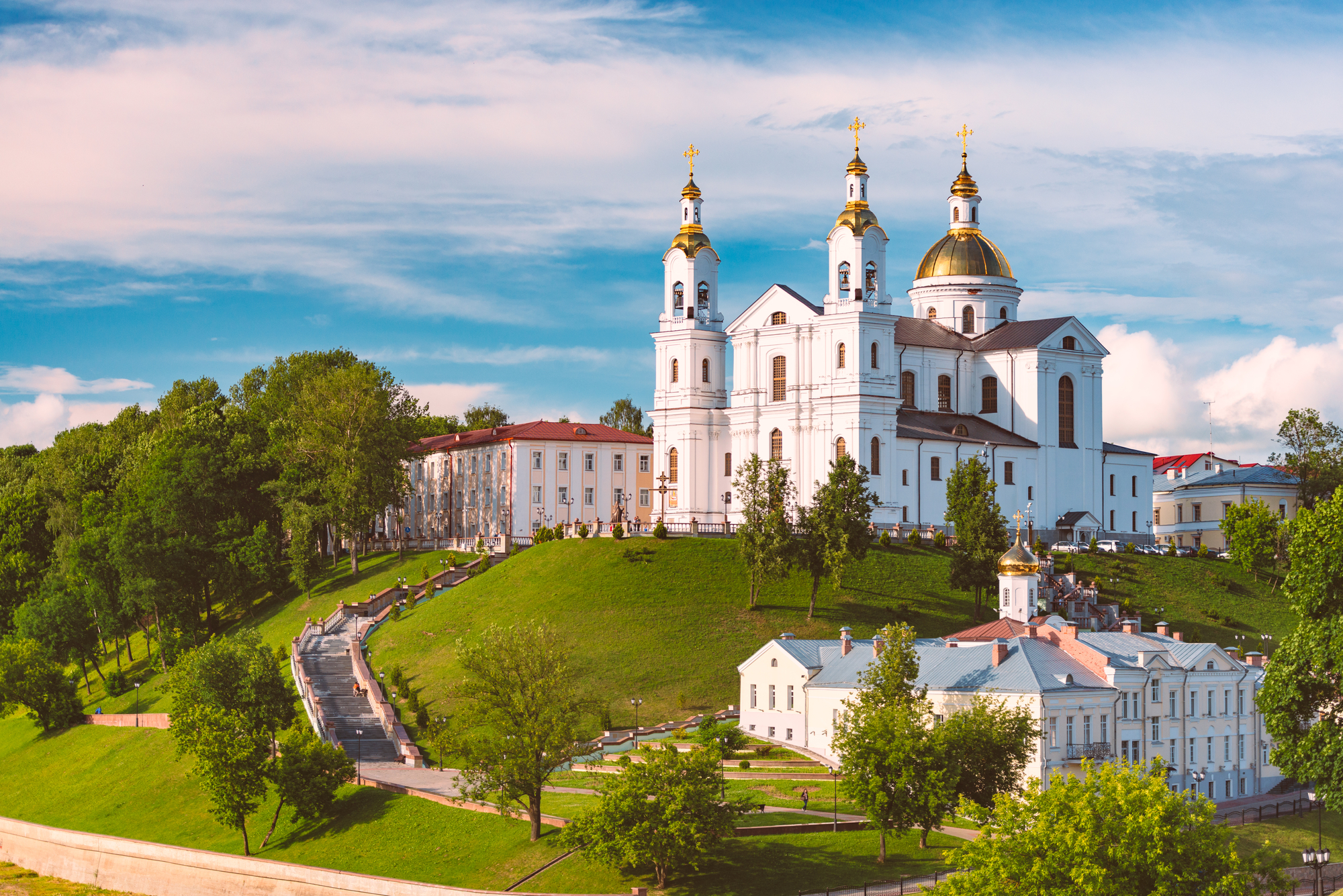
Founded on the high banks of the Western Dvina and the Vitba Rivers city of Vitebsk was known since 974 as a point on the trade route from the Baltic to the Black Sea (in ancient Russia this path was called the Way from the Varangians to the Greeks). Historical development area is partially survived in the center of Vitebsk. Here you can see the Rathaus (City Hall) building in the Baroque style, the Catholic Church of St. Barbara (formerly Cathedral of St. Barbara and St. Paul built in 1785 and rebuilt in 1884 in the neo-Romanesque style), the Holy Trinity Monastery of Mark founded in XIV-XV centuries, the Assumption Cathdral of the XVIII century blown up by the Bolsheviks in 1930s and restored in the XXI century, the Intercession Cathedral rebuilt in the middle of the XIX century from the Polish Catholic church of the former Trinitarian Order monastery, the Dormition Cathedral built in 1858 in the Russian Revival style, the Annunciation Church of the XII century which was several times rebuilt, heavily destroyed during the WW II, blown up for the device of a tram u-turn circle in 1961 and restored in 1990s in the shape of the XII century with the preservation of original masonry fragments. Vitebsk is known as a native land of the great XX century painter Marc Shagall. Since 1992 the Marc Shagall Museum is held in Vitebsk at the Marc Shagall childhood house built by artist’s father at the Pokrovskaia Str. in the early XX century. Chagall tells about this period of his life in the My Life autobiography. The Museum presents articles of the Jewish family life in late XIX – early XX centuries as well as copies of archival documents and works by Chagall relating to the artist’s and his family’s life in Vitebsk. The series of illustrations to Nikolai Gogol’s poem «Dead Souls» (1923–1925), the series of colour lithographs on the theme of the Bible (1956-1960), the cycle of colour lithographs titled The 12 Tribes of Israel (1960) and other Chagall’s works are presented at the Marc Shagall Art Center located at another building of the Shagall Museum.
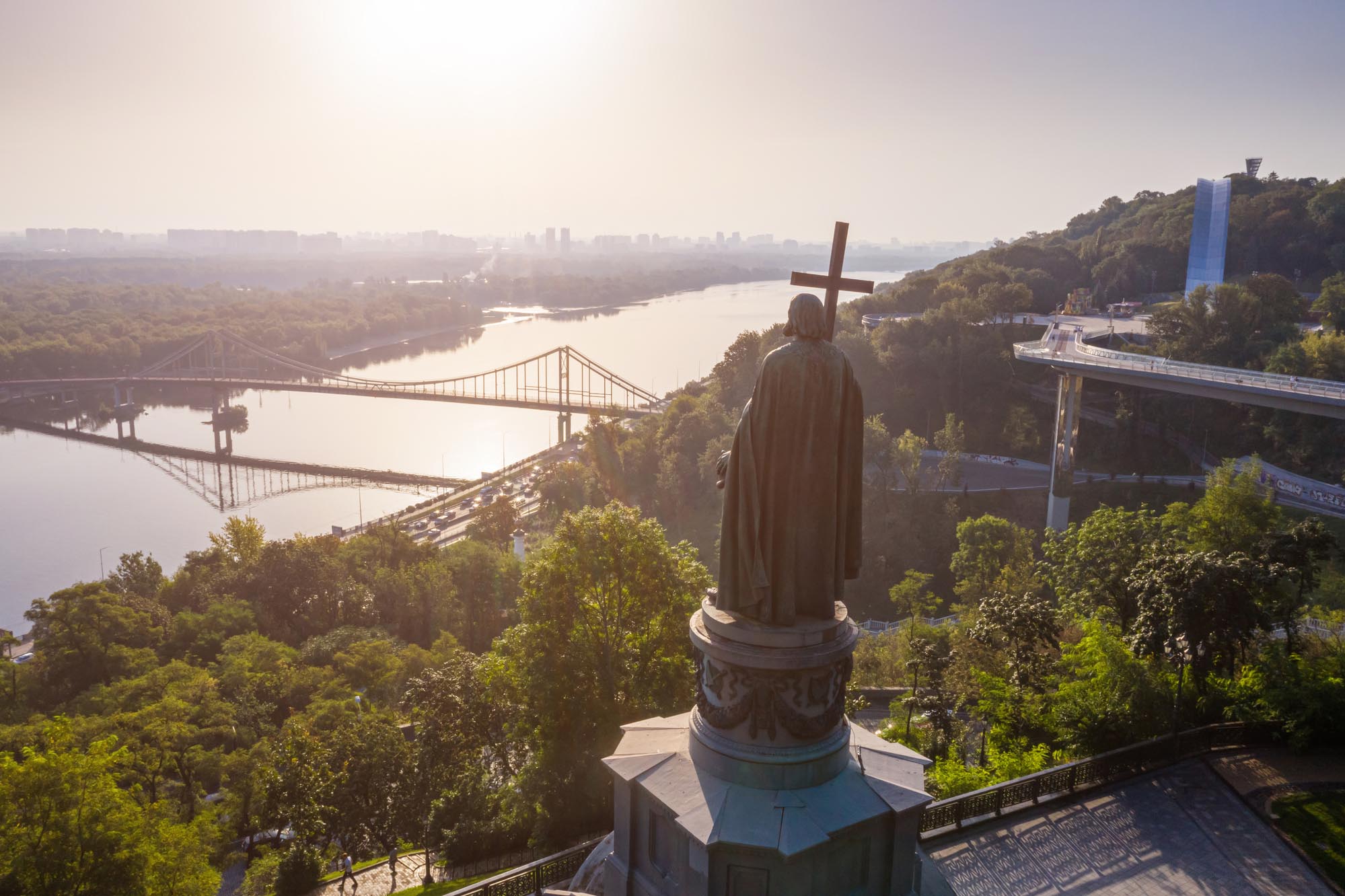
The capital of Ukraine Kiev is located on the Dnieper River, one of the largest rivers in Europe. Kiev used to be called the Mother of Russian cities. The first East Slavic state called Kievan Rus originated here. During 15 centuries of its existence (the city was mentioned for the first time in the chronicles of the VI century) Kiev was involved in many historic events. Numerous monuments, the names of the city streets and squares remind of them. Today Kiev is a city of wonderful architectural ensembles, new avenues and ancient cathedrals. It is especially attractive because of the majestic Dnieper, picturesque high banks, numerous gardens and parks covering more than half of its area. One can get the most beautiful view of the city from its highest point, St. Vladimir Hill where St. Vladimir Monument, the oldest sculptural monument in Kiev (1853) and one of the main symbols of Kiev rises.
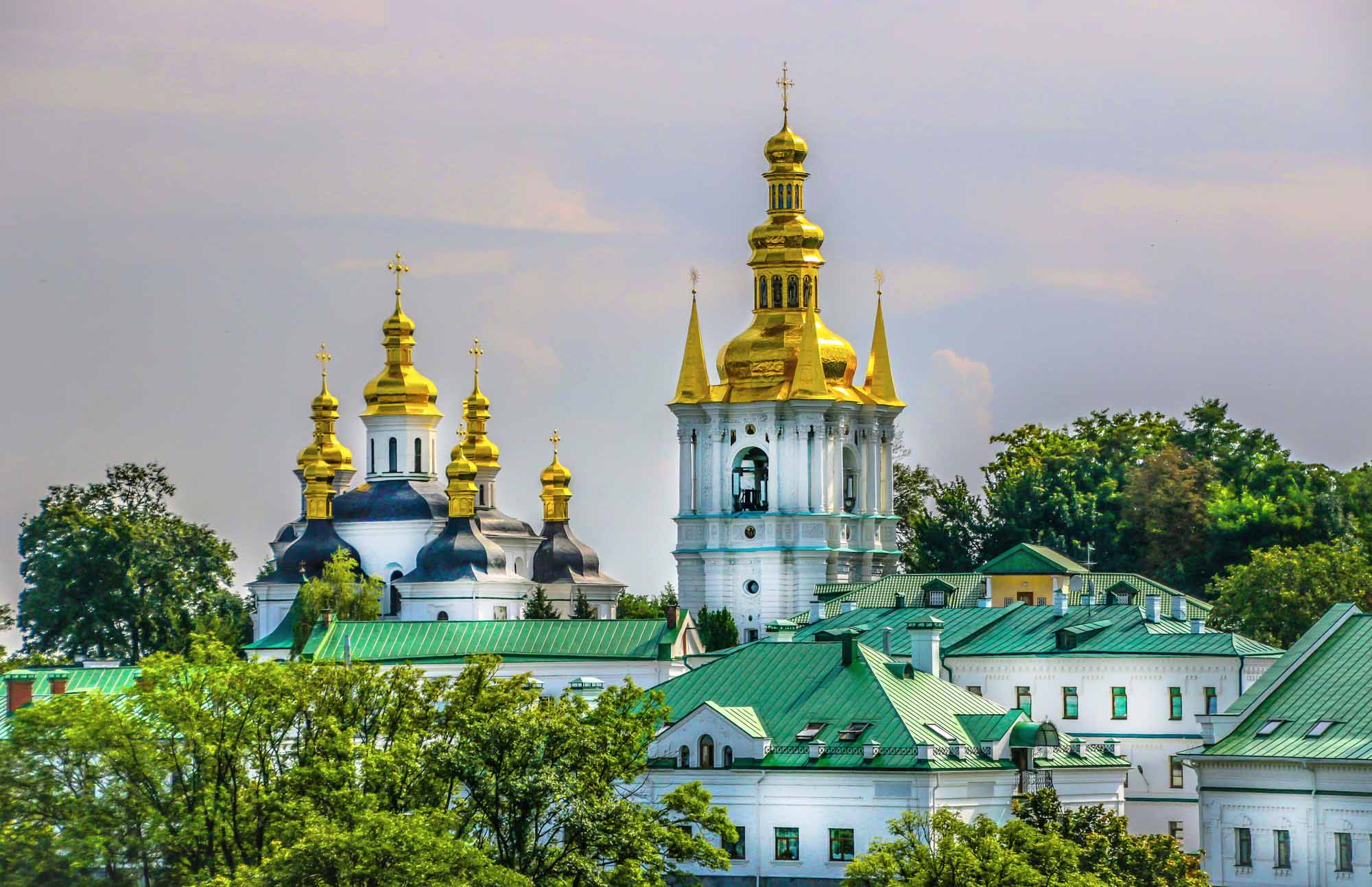
Kiev’s landmarks are famous all over the world. Among them the Kiev-Pechersk Monastery of the XI-XII centturies, the first Christian Monastery of Kievan Rus, St. Sophia Cathedral founded in the XI century and externally rebuilt in the Ukrainian Baroque style in the late XVII – early XVIII centuries with its unique collection of frescoes and mosaics, St. Andrew Church (mid-XVIII century), the creation of the great Bartolomeo Francesco Rastrelli. We kindly recommend you not only to walk around city center but also to take the Dnieper River motor boat trip and to look at the Kiev places of interest from an unexpected angle. We are sure that visiting some of the local museums will be very interesting and informative for you.
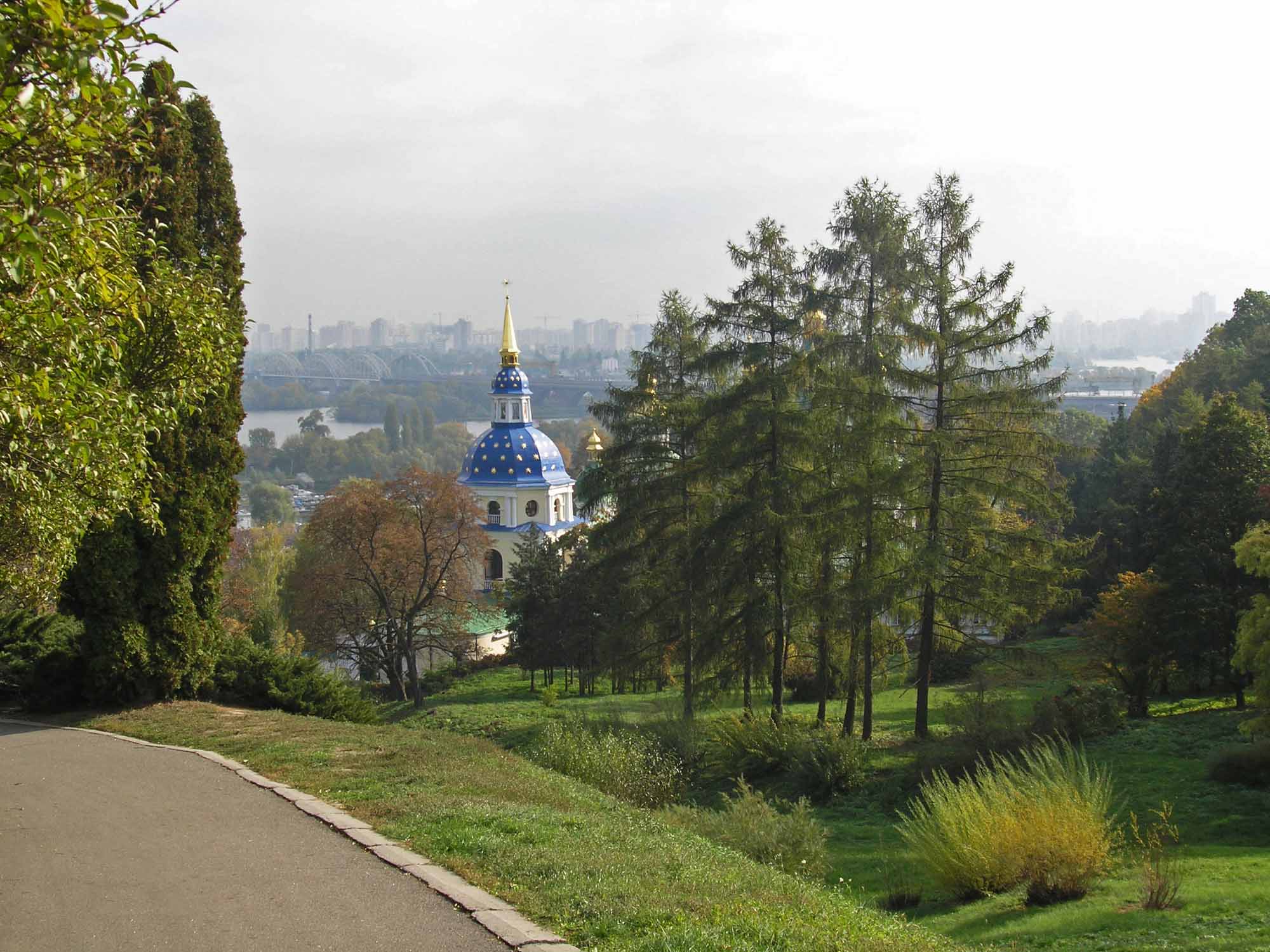
The Hryshko National Botanical Garden is not only fantastic recreation area. The Botanical Garden in Kiev occupies one of the leading places among the largest Botanical gardens in Europe with the variety of its collections of living plants, the scale of the territory and the level of scientific research.
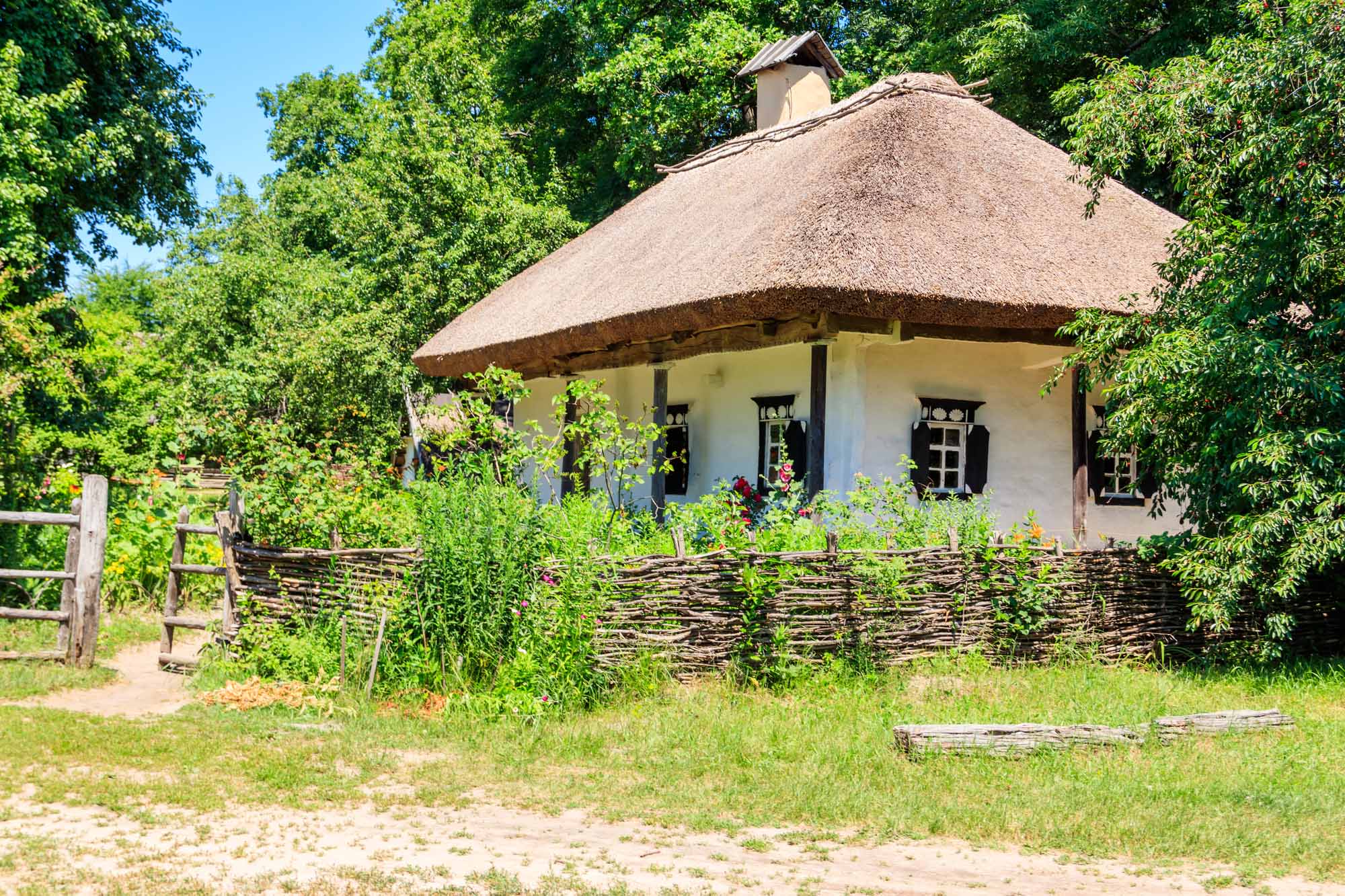
Open-air Museum of Folk Architecture and Life of Ukraine located at Pirogovo (Pirohiv) area in the southern outskirts of Kiev has more than 300 exhibits collected throughout the country. The center of the exhibition is a group of windmills located on a hill. The territory of the Museum divided into sectors presents the folk architecture and life of villages and small towns in different Ukrainian regions. There are samples of housing for farmers and craftsmen, the building of the village Council, wooden churches. In the Museum you have a chance to purchase products of modern folk art masters often made on spot using tools similar to items exposed in the Museum.
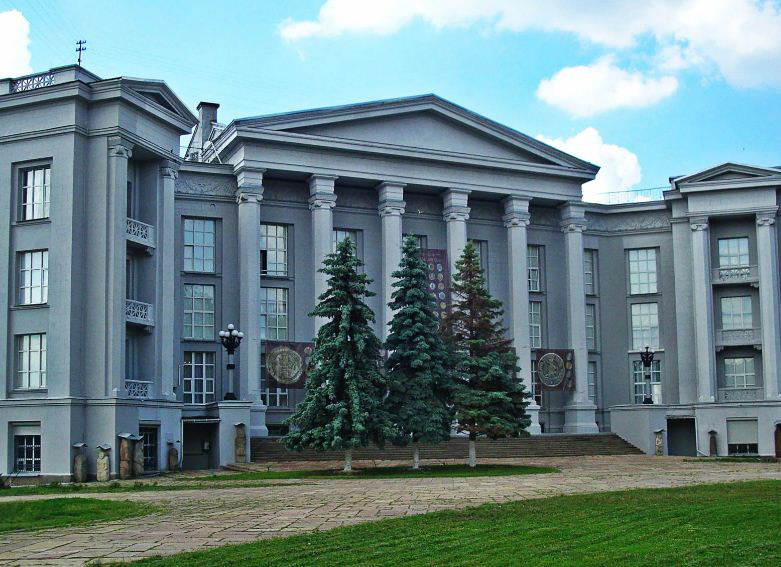
National Museum of the History of Ukraine located at the monumental building of Stalinist architecture is one of the lagest museums in Ukraine. The Museum’s funds include more than 800 thousand unique historical and cultural exhibits. The Museum presents valuable collections of archeology, numismatics, side-arms and fire-arms, ethnography, glass and porcelain products. There is also a collection of the XV-XXI centuries documents, Cossack attributes, universals, hetmans’ and Cossack elders’ letters, paintings, graphics and sculptures.
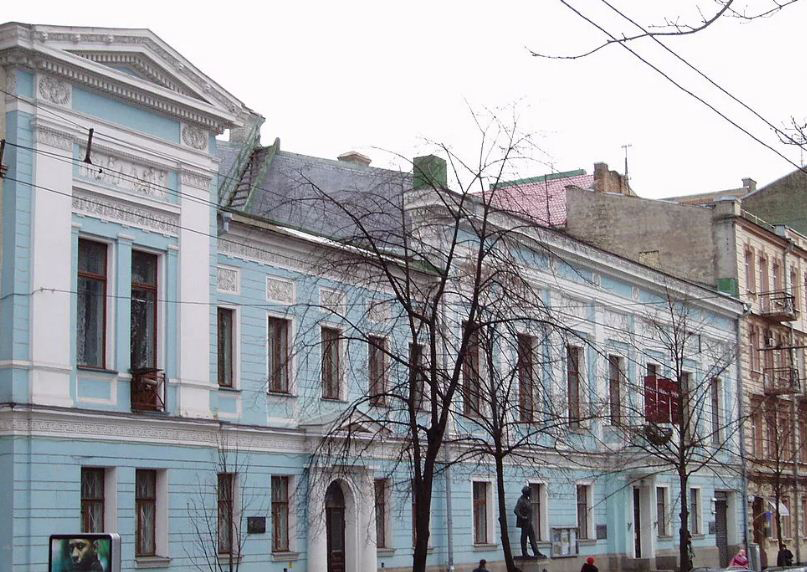
Kiev Art Gallery (formerly Russian Art Museum) presents Russian art since ancient icons till works of Soviet and Post-soviet periods. “Boris and Gleb» icon created in Velikiy Novgorod in the late XII — first half of the XIII century is unique sample of the the pre-Mongol period Russian art. Here you can see paintings by Dmitry Levitzky, Vasily Tropinin, Valentin Serov, Vasily Perov, Vladimir Makovsky, Viktor Vasnetsov, Ilya Repin, Mark Antokolsky, Vasily Vereshchagin, Mikhail Vrubel, Nikolai Ge, Ivan Shishkin, Arkhip Kuindzhi, Nikolai Yaroshenko (including one of two author’s versions of his famous painting “Young lady attending courses” (1883)).
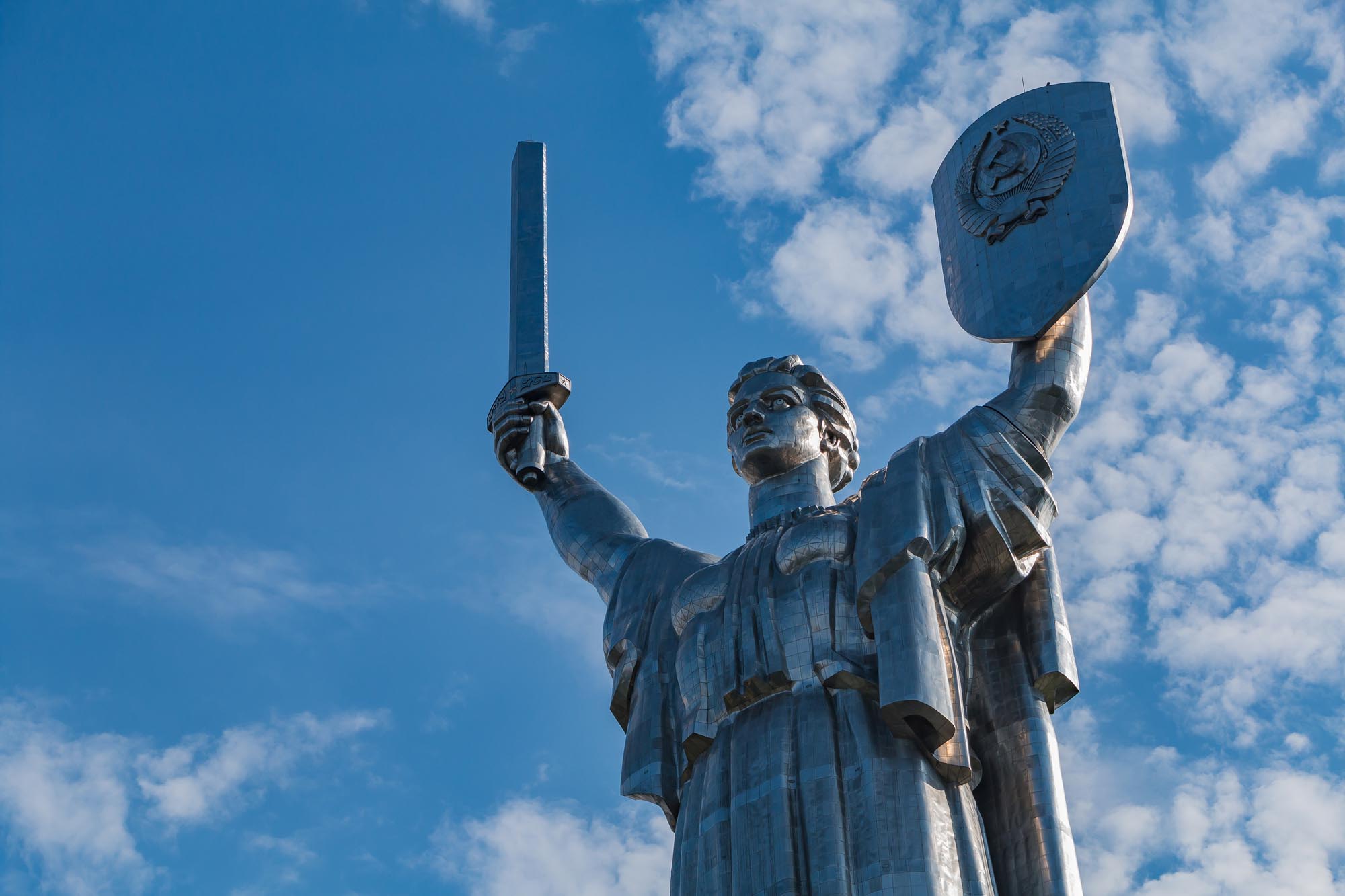
The National Museum of the History of Ukraine in the Second World War (formerly Museum of the Great Patriotic War) completed in 1981 is grandiose military memorial of the Soviet period located on the slopes of the right bank of the Dnieper. It contains a giant bowl of Eternal flame, an exhibition of WW II and post-war military equipment, the alley of Hero Cities. The central construction of the Museum, The Motherland Monument (102 m stainless steel statue) is one of the well-known symbols of Kiev.
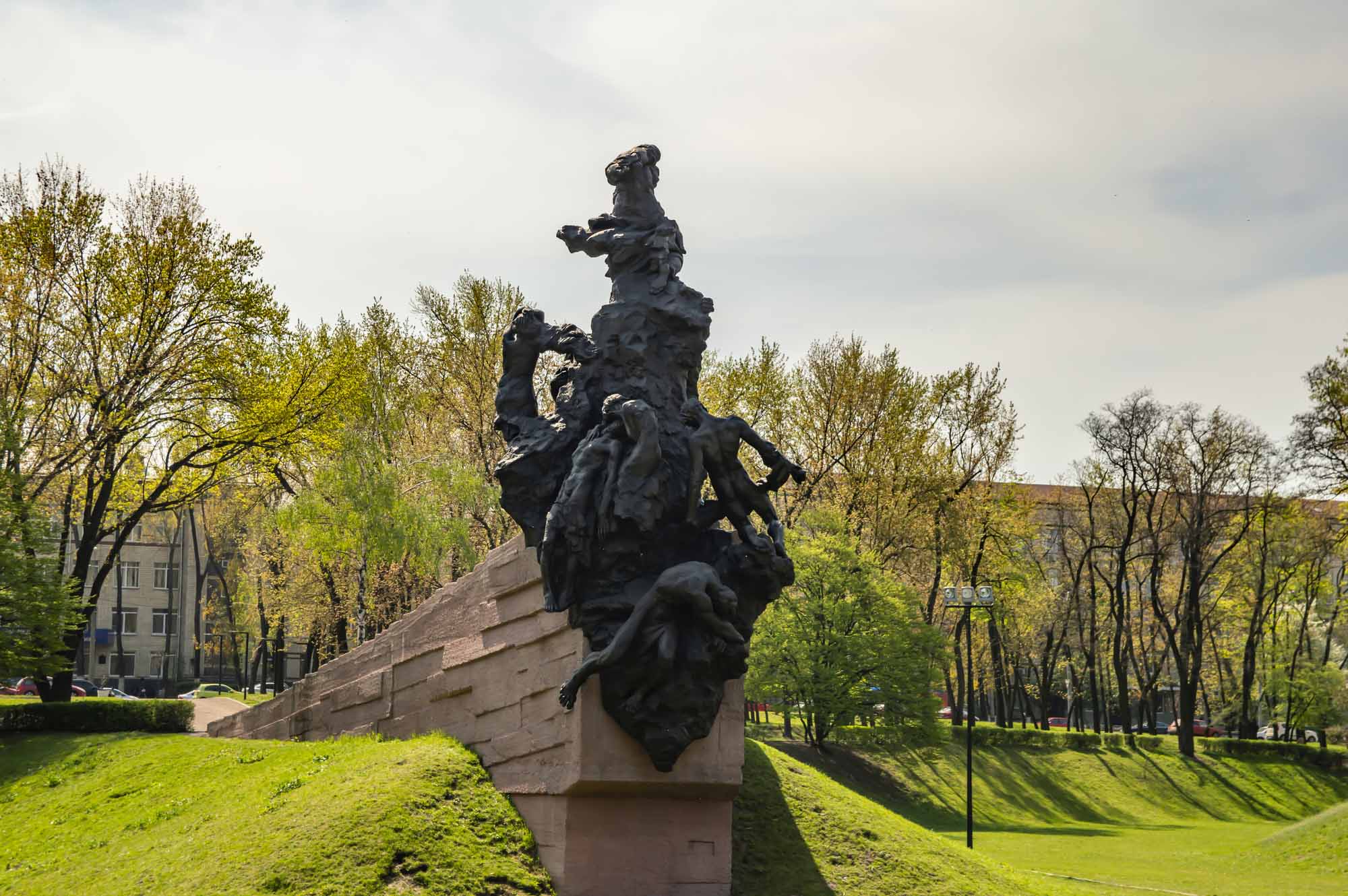
Another memorial site associated with WW II tragedy is the Babi Yar located the north-west part of Kiev. It became world-famous as the site of mass executions of civilians (mainly Jews and Gypsies) and Soviet prisoners carried out by the German occupation forces and their local collaborators. In total more than 100,000 people were shot. Any case the Babi Yar is the largest Holocaust-related site on the former USSR territory. There are several monuments, both to the victims of the Holocaust and to other victims of German occupation built in the Babi Yar in Soviet and post-Soviet period. Not far from the Babi Yar you can see the six-column, cross-domed St. Cyril’s Church of XII century, one of the oldest churches of ancient Kievan Rus preserved on the Ukrain territory.

Dnepr is the fourth name of this city located on the river of the same name (451 km to the south-east of Kiev). It was founded as city of Ekaterinoslav in 1776 during active Russian colonization of Novorossiya (New Russia), vast areas in the Northern Black Sea region, under Empress Catherine II. In 1796 new Russian Emperor, Catherine’s son Paul I who hated his mother renamed the city to Novorossiysk, but Paul’s son Alexander I who promised that “everything would be just like when grandma was here” returned original name to the city in 1802. In 1926 Bolsheviks renamed Ekaterinoslav to Dnepropetrovsk after one of their local leaders Grigory Petrovsky. In 2016 during the decommunization campagne the city received its modern name: Dnepr. Now you can see here many interesting buildings of different eras (some of them are actual architectural monuments), modern pedestrian boulevards in the city centre, the longest embankment in Europe along the right bank of the Dnieper River (its length is about 32 km). We recommend to visit some of museums in Dnepr. Among the unique exhibits of the Dmytro Yavornytsky National Historical Museum of Dnipro City: Polovtsian (Cuman) stone «women», the idol of Kernosovka (the III Millenium B.C.) and a collection of Cossack antiquities. The Battle of the Dnieper Diorama devoted to one of the most important WW II battles (1943) is the largest diorama in Ukraine and the second largest in Europe. On the grounds in front of the diorama building a collection of Soviet military equipment of 1940s is exhibited. The Art Museum presents very good collection of the Russian, Ukrainian, European and Soviet art.
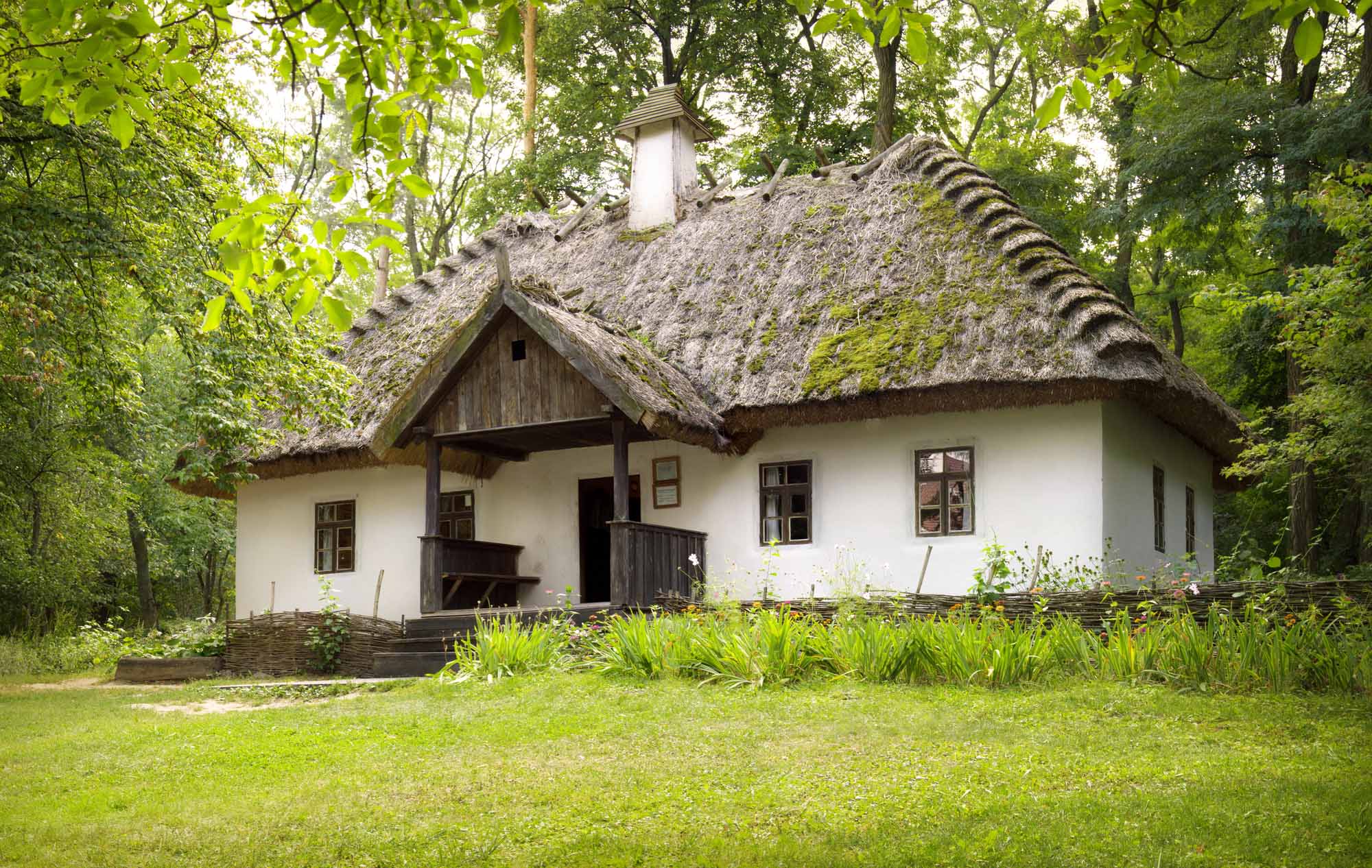
Small town of Kanev (132 km to the south-east of Kiev down the Dnieper River) is well-known as the place where great Ukrainian patriot and Russian democrat Taras Shevchenko was buried in 1861. A granite monument by sculptor Matvey Manizer (1939) stands above the grave. The Museum is located at the building of 1935-1937 designed at Ukrainian national style. Exposition devoted to life and work of outstanding Ukrainian poet, novelist, thinker, painter, graphic artist, ethnographer, public figure includes more than 20 thousand unique items: memorabilia and etchings by Taras Shevchenko, rare editions of his works, highly artistic works of Ukrainian and foreign artists, masterpieces of folk art, valuable archival documents, photos and films, audio and video recordings of famous folk singers.
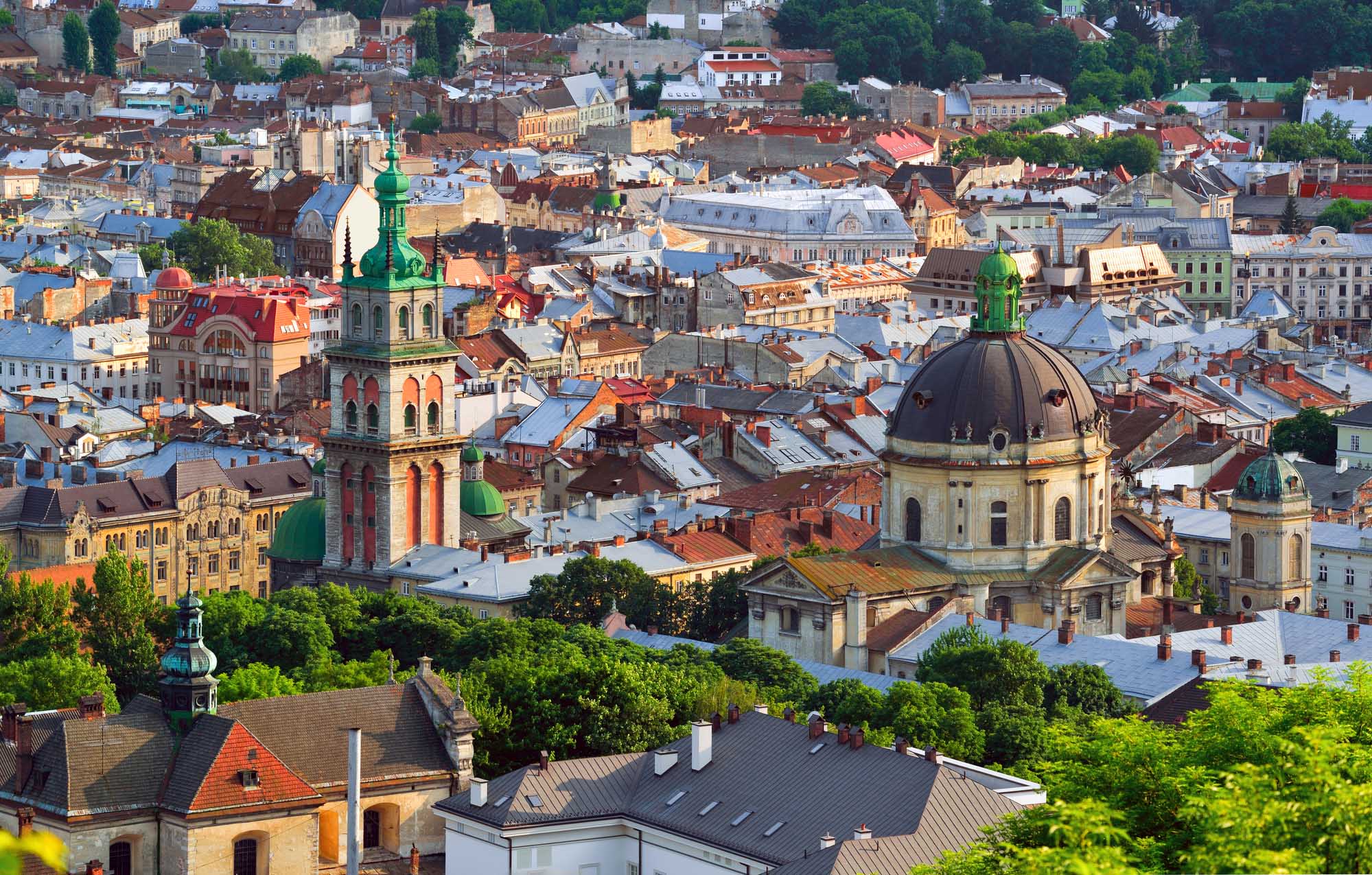
Situated in the western part of Ukraine Lvov is one of the most interesting Ukrainian cities. It was founded in 1256, when Kievan Rus already ceased to exist after the Mongol invasion. During very long time Lvov was a part of Poland, the Habsburg Monarchy and Poland again. In 1939-1991 it was part of the USSR. The symbol of the city is lion. One can see the depiction of lions on the emblem of the city, on the facades of buildings, in parks. Dozens of talanted architects left their autographs in the architecural appearance of the city. Many buildings of the XIV-XVI centuries have come down to our times. Alongside with a beautiful Gothic cathedral you can see a splendid Baroque Catholic church, buildngs in eclectic and modern styles. The ancient city center with the Market Square is a historical and architectural reserve.

Lvov National Museum was founded in 1905 by the Greek-Catholic Metropolitan Andrey Sheptytsky as the Ecclesiastical Museum. Among items of the Museum are icons of the XIV—XVIII centuries, wood carvings, manuscripts of the XI-XVI centuries, rare folk sacred sculptures, engravings of the XVII—XVIII centuries, paintings and sculptures of the XVIII-XIX centuries, folk art of the XVII-XX centuries: ceramics, bone, metal, fabric, embroidery, wood carving, folk clothing, pysanka (Easter eggs inscribed with beeswax), drawing on glass. Lvov City Hisory Museum founded in 1893 covers history of western regions of Ukraine. The collection of the Museum presents archaeological finds, tools, products of Lvov workshop masters, works of art, ancient coins, orders and medals, weapons. Lvov National Art Gallery founded in 1902 is one of largest art museums in Urkaine. During the German occupation 225 works of art were confiscated and sent to the Reich including a unique collection of Albrecht Durer drawings. A lot of paintings by Russian artists (Ilya Repin, Isaac Levitan, Ivan Aivazovsky, Vasily Vereshchagin, Konstantin Korovin and others) were given to the Lvov Art Gallery from the Russian Museum in St. Petersburg (Leningrad) and the Tretyakov Gallery in the late 1940s. In the Department of Western European Art you can see paintings by Pieter Paul Rubens, Tiziano Vecellio, Francisco Goya, Hubert Robert and other great masters. In the Museum of Folk Architecture in Shevchenkivskyi Hay (Shevchenkivskyi Grove) located in the picturesque hills of the Znesinnia Landscape Park (the north-east part of the city; 20-minute walk from the City Hall and the Market Square) you can see more than 120 samples of the XVII-XX century folk architecture presenting different colorful ethnographic groups of Western Ukraine.
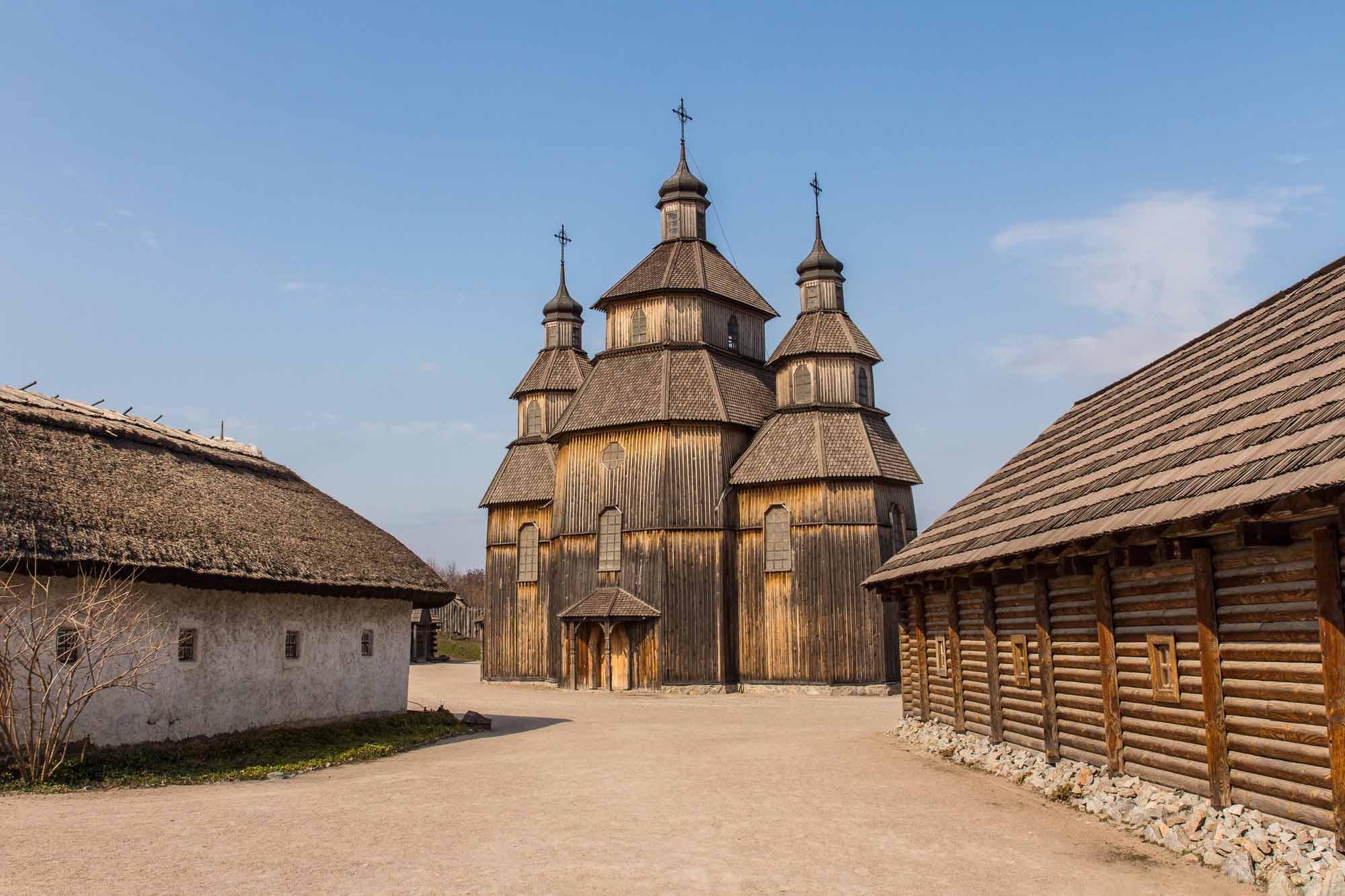
City of Zaporozhye (514 km to the south of Kiev) was founded as Alexandrovskaya Fortress in 1770, during active Russian colonization of Novorossiya (New Russia), vast areas in the Northern Black Sea region, under Empress Catherine II. In late 1920s-1930s the city became large and important industrial center. Construction of the Dnieper Hydroelectric Station became a symbol of Stalin’s industralization in the USSR. The Khortytsia Island located within the city limits is the largest island on the Dnieper. At the nearly located the Malaya (Small) Khortytsia Island there is tree-and-earth town considered the prototype of the Sich, military and administrative center of the Dnieper Cossacks. The Northern part of the Khortytsia offers a panoramic view of the Dnieper Hydroelectric Station dam. The island with the surrounding rocks and small islands are included to the Khortytsia National Reserve. We recommend you to visit the Museum of the History of the Zaporozhye Cossacks located at the Khortytsia Island but now the Museum is closed due to process of complex re-exhibition.

City of Odessa founded in 1794 by Russian Field-Marshal Alexander Suvorov on the site of the Turkish fortress Khadjibey soon became an actual pearl of the Russian South with unique “Odessa” flavor mainly created by large local Jewish community. Many holiday makers admire its beautiful sites. The most famous of them are the Opera Theater, the Primorsky Blvd., the Potemkin Stairs. Odessa is a famous Black Sea port with a unique climate, sun beaches and bays with mineral muds.
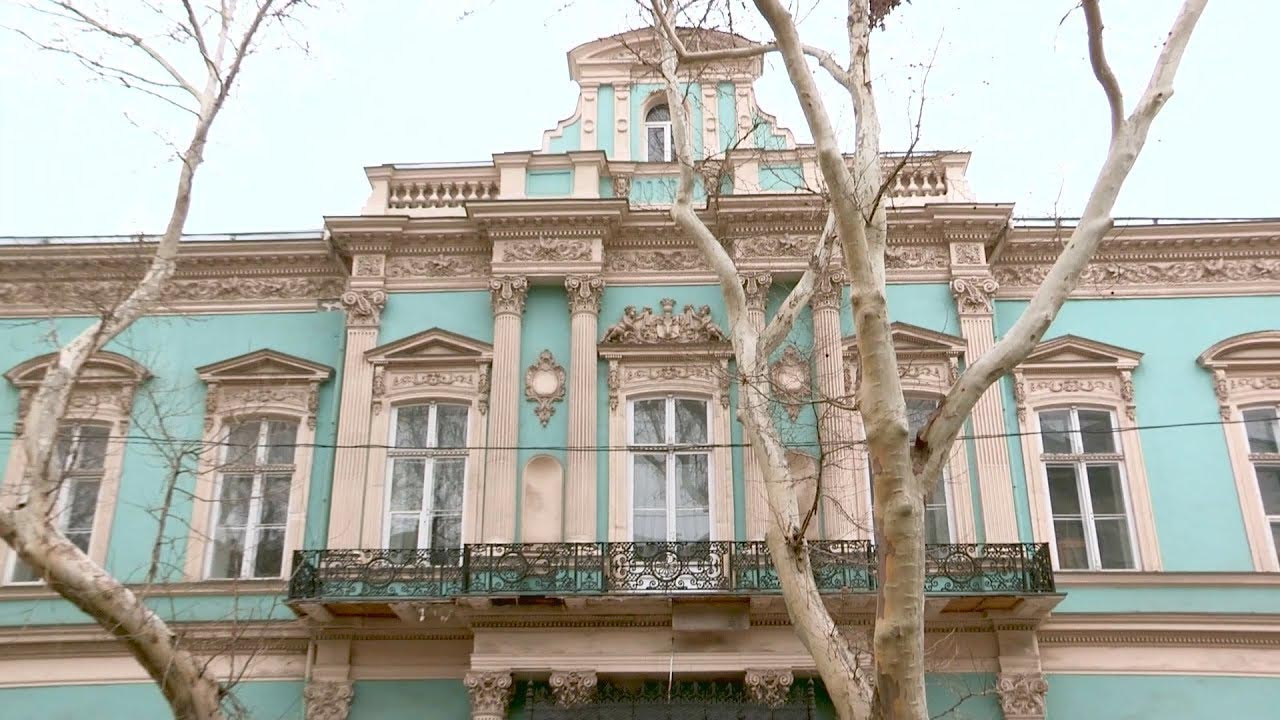
Collection of the Odessa Museum of Western and Oriental Art contains masterpieces of different cultures and eras. Exhibition of Western European art which completely occupies the second floor of the Museum is the most extensive and full-fledged. Works of painting, drawing, sculpture and decorative arts since the Renaissance to the first half of the XXth century are exhibited there. The Oriental Dept. acquinted visitors with Persian book miniatures, Turkmen jewelry, Indian ivory products, Buddhist cult plastics and paintings, Japanese Ukiyo-e prints, Chinese porcelain and many other masterpieces of Oriental masters.
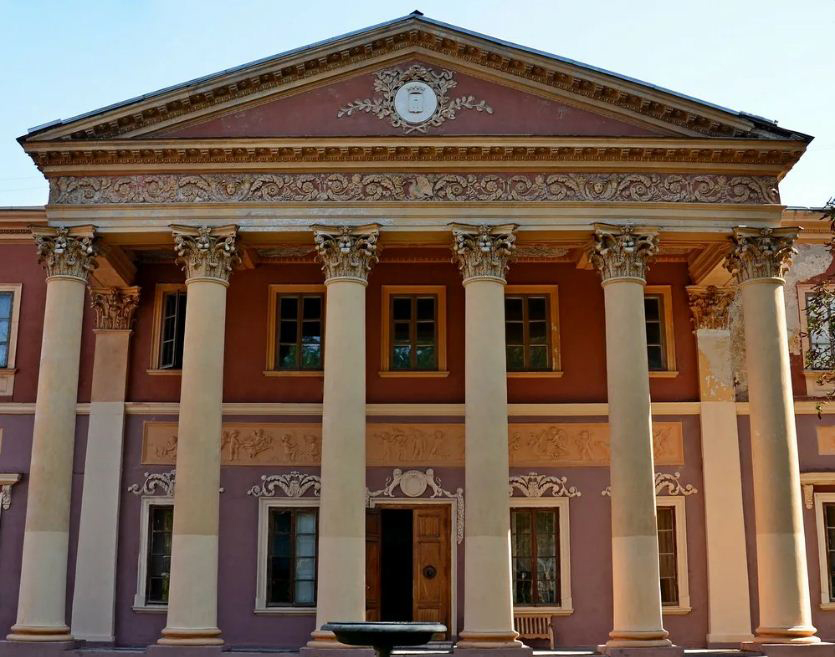
Odessa Art Museum presents icons of the XVI-XVII centuries, secular portraits of the XVII century and numerous works by great Russian painters of the second half XIX – early XX centuries: Ivan Aivazovsky, Ivan Kramskoi, Alexei Savrasov, Isaac Levitan, Ivan Shishkin, Archip Kuindzhi, Ilya Repin, Vasily Surikov, Valentin Serov, Mikhail Vrubel, Nikolai Roerich, Boris Kustodiev, Alexander Benois, Konstantin Somov, Vasily Kandinsky, Pyotr Nilus.
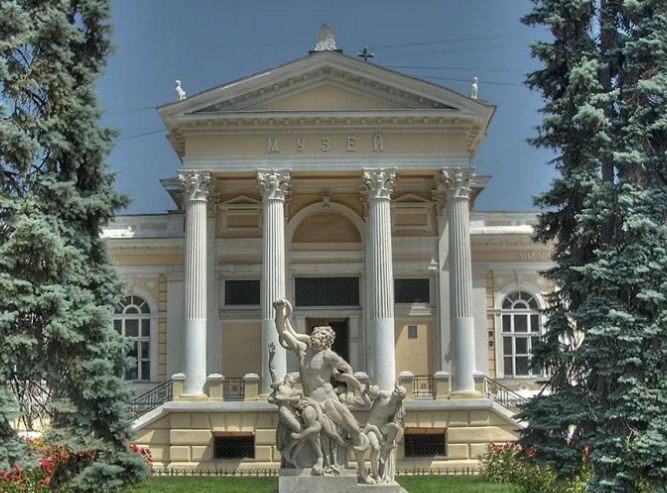
Odessa Archeological Museum contains rich exposition of items on the ancient history of the Northern Black Sea region since the Stone Age to the Middle Ages. Collection of Egyptian antiquities is the third largest in the former USSR. Here you will also see jewelry from the Scythian and Sarmatian burial grounds, medieval burials of nomads, the product of Slavic craftsmen, rare gold and silver coins since Ancient Greece till the Soviet period, payment bars of the coin-free period in Kievan Rus (grivna). The most unique items exhibited are two-handed gold bowl of the XV-XIII century B.C. and zlatnik of Prince Vladimir (first ancient Russian coin), one of 11 known in the world.
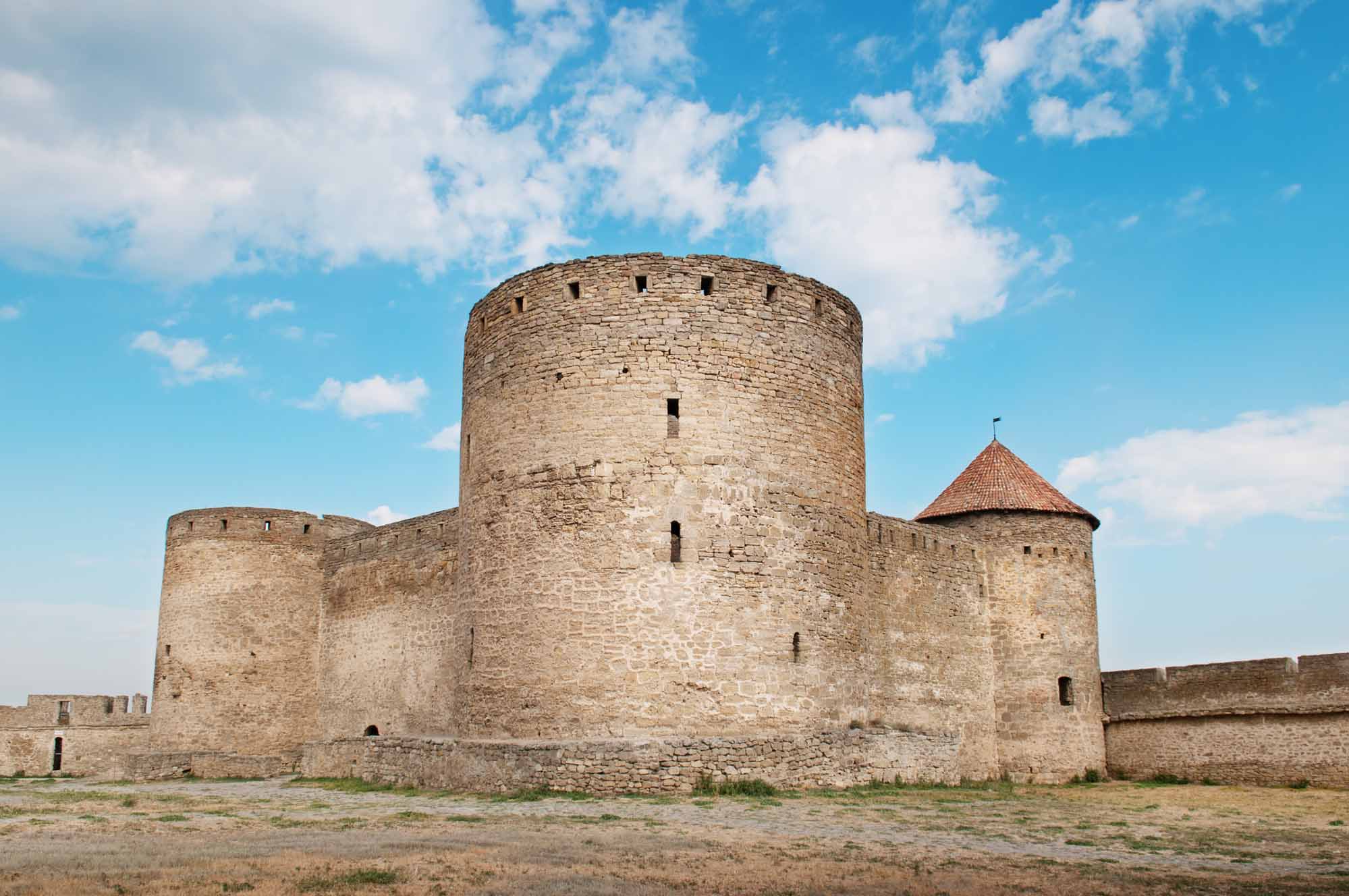
We recommend you a fullday tour to town of Belgorod-Dnestrovskiy (79 km to the south-west from Odessa) known thanks to its medieval Akkerman Fortress built on the coast of the Dniester Estuary during the periods of Genoese and Moldavian rule in this area (XIII-XV centuries) and also with its archaeological sites of ancient city Tyras founded by Greek colonists from Miletus about 600 B.C..

The name of this city means “clean” in the Latvian language. Riga took this name from spring which ran through the city in 1201. At that time Archbishop Albert came here with the Teutonic Order knights. Soon the city turned into an important commercial center on the Baltic Sea. The Church of St. Peter with the ancient bell-tower on which a guilded rooster perches proundly became the symbol of the city. In the XIV century the Order Castle was built in Riga which for centures served as the residence of the city rulers. The Dome Monastery built during several centuries boasts one of the best organs in the world. The cathedral of the Monastery is the largest church in the Baltics. We recommend you to visit some museums in Riga.
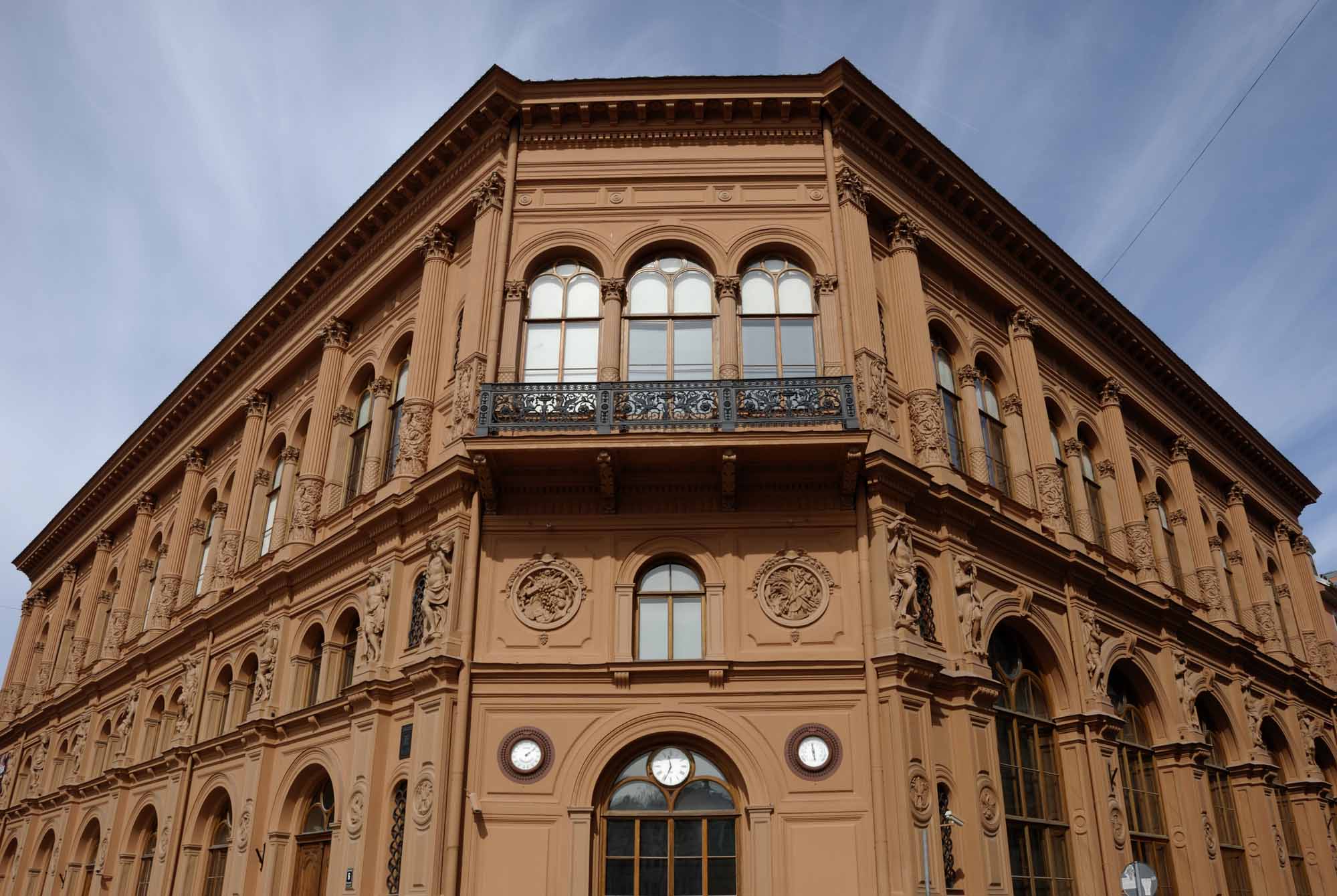
The Ethnographic Open-Air Museum of Latvia founded in 1924 is one of the largest open-air museums in Europe. It is located in a picturesque place on the Yugla Lake bank, just outside Riga, away from city buildings. There are more than 100 residential, commercial and public wooden constructions of the XVII-XX centuries presenting different historical regions of Latvia collected on the territory of 84 hectares. The exposition of the founded in 1773 Museum of the History of Riga City and Navigation covers the history of Riga from the city founding in 1201 to the first half of the XX century. The Museum building is a part of the Dome Cathedral architectural ensemble. The Latvian National Museum of Art founded in 1869 presents two extensive collections: the Latvian and the foreign art. The Latvian art collection reflects the development of painting, drawing and sculpture in Latvia from the middle of the XVIII century to the present. Works by foreign authors are collected at the separate Art Museum Riga Bourse located in the historical building of the Riga Stock Exchange where the extensive collection of world art since Ancient Egyptian and Ancient Middle Eastern items dating back to 5000 B.C. is presented.
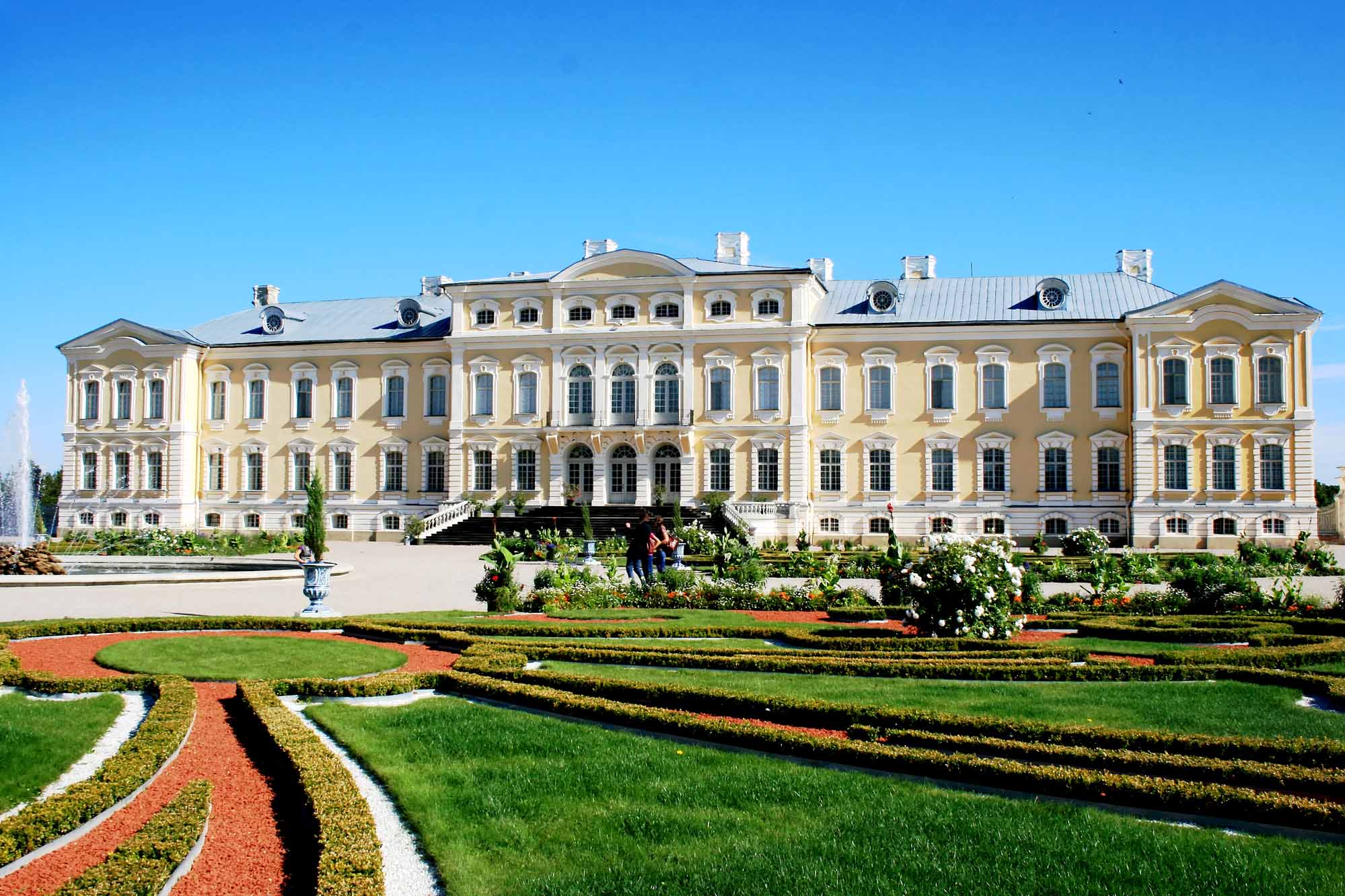
Rundale Palace (about 65 km to the south of Riga), the former country residence of the Dukes of Courland is one of the most significant architectural monuments and one of the most famous sights in Latvia. The Palace was built in the Baroque style after the project of Bartolomeo Francesco Rastrelli for Ernst Johann Biron, Duke of Courland, favorite of the Russian Empress Anna Ioannovna. Now the Palace and its surrounding garden are not museum only. It is also used by the President of Latvia for receiving high-ranking foreign guests.

The territory of the Kemeri National Park located west of the resort city Jurmala (about 40 km to the west of Riga) is mostly occupied by forests with some inclusion of meadows and areas not covered in forest and mires, the most significant of them is the Great Kemeri Bog. There are also several lakes formering picturesque lagoons. The famous natural mineral springs and muds used for centuries because of their therapeutic nature are also protected in the Park. The springs led to development of many resorts, spas, and sanatorias in the XIX century. The National Park has short (1.4 kilometres (0.87 mi)) and long (3.4 kilometres (2.1 mi)) boardwalk trails with an observation platform popular with photographers for sunrise and sunset scenes.
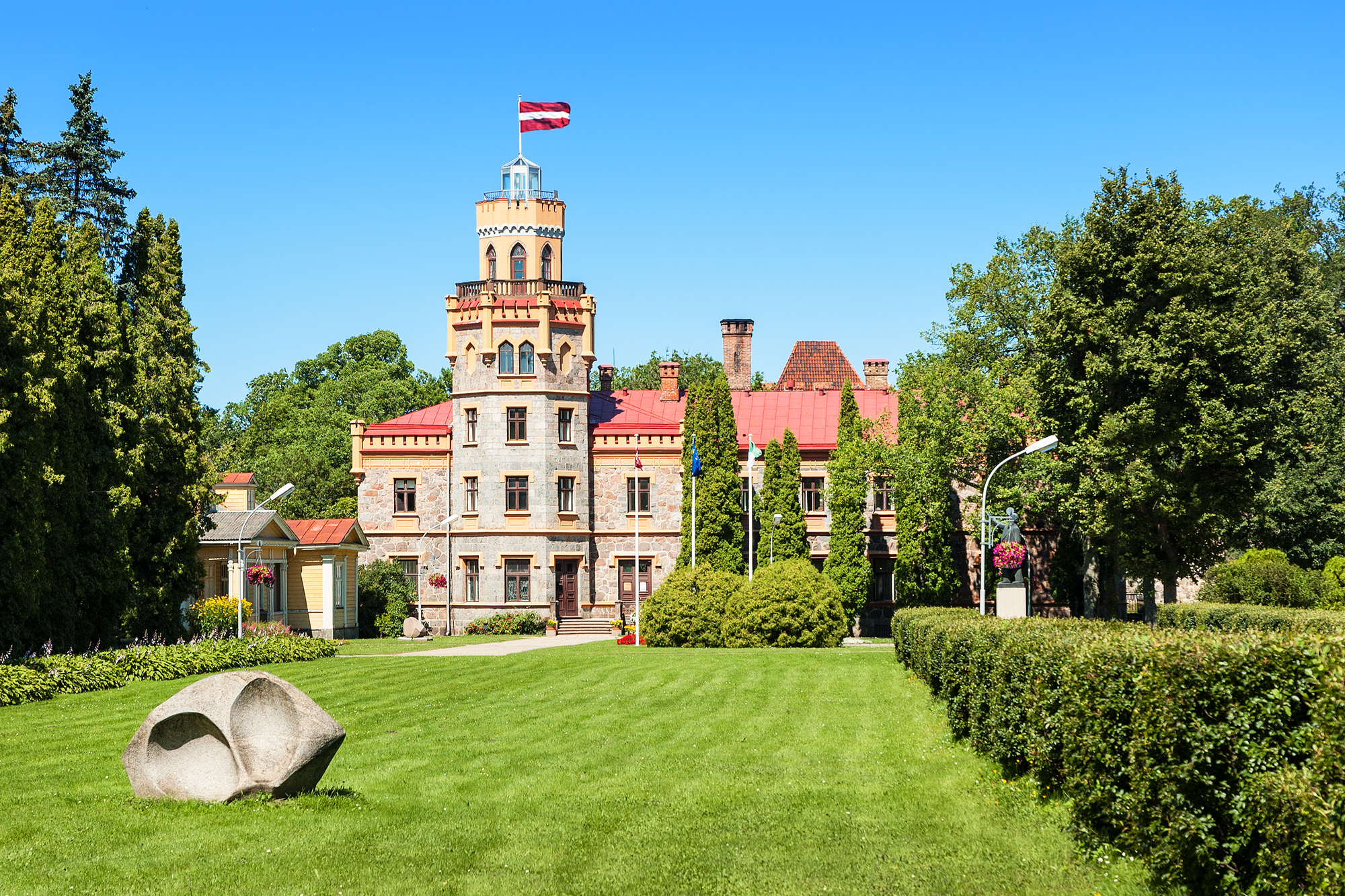
Small town of Sigulda (50 km to the north-east of Riga) is very popular tourist center known with romantic ruins of medieval constructions built at an early period of the conquest of the Baltic lands by the German crusaders (early XIII century). Some of them have been restored to date. The most interesting architectural monuments of Sigulda are the Turaida Castle and the Sigulda (Segewold) Castle.
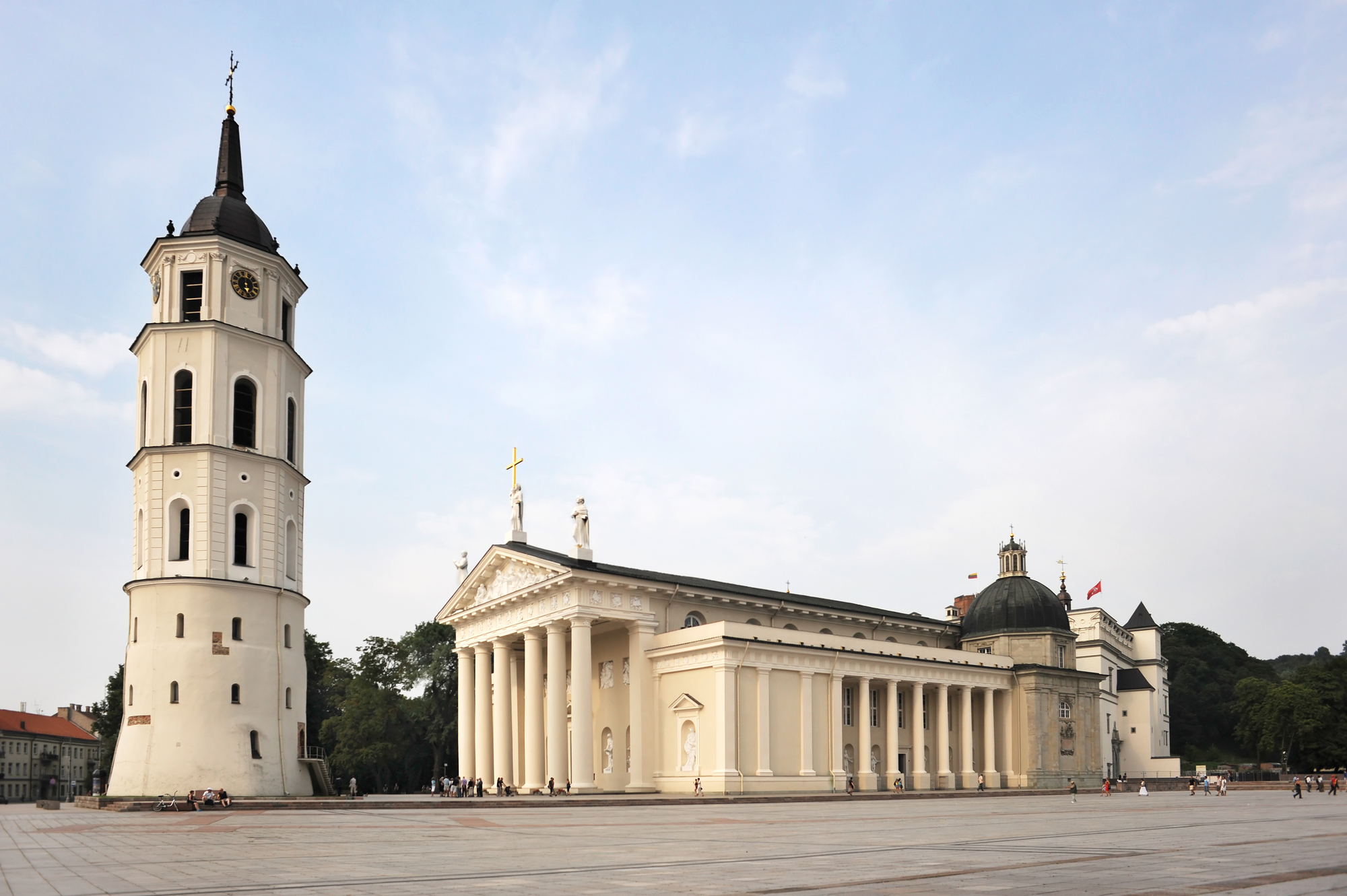
Vilnius is the capital of Lithuania, the “country of rains”. It is sutuated on the Neris River. The first written reference to Vilnius was made in 1323 when Lithuanian Prince Gediminas moved the capital here from Trakai but archaeological excavations show that the city had been built long before. Walking at the Vilnius Old Town you can see architectural monuments of many centurries built in Gothic, Renaissance, Baroque and Classical styles kept with great care. Among them the Church of St. Peter and St. Paul (XVII century), an actual masterpiece of the Baroque style. Today Vilnius is a harmonious combination of elegant style of the past and the present-day life.
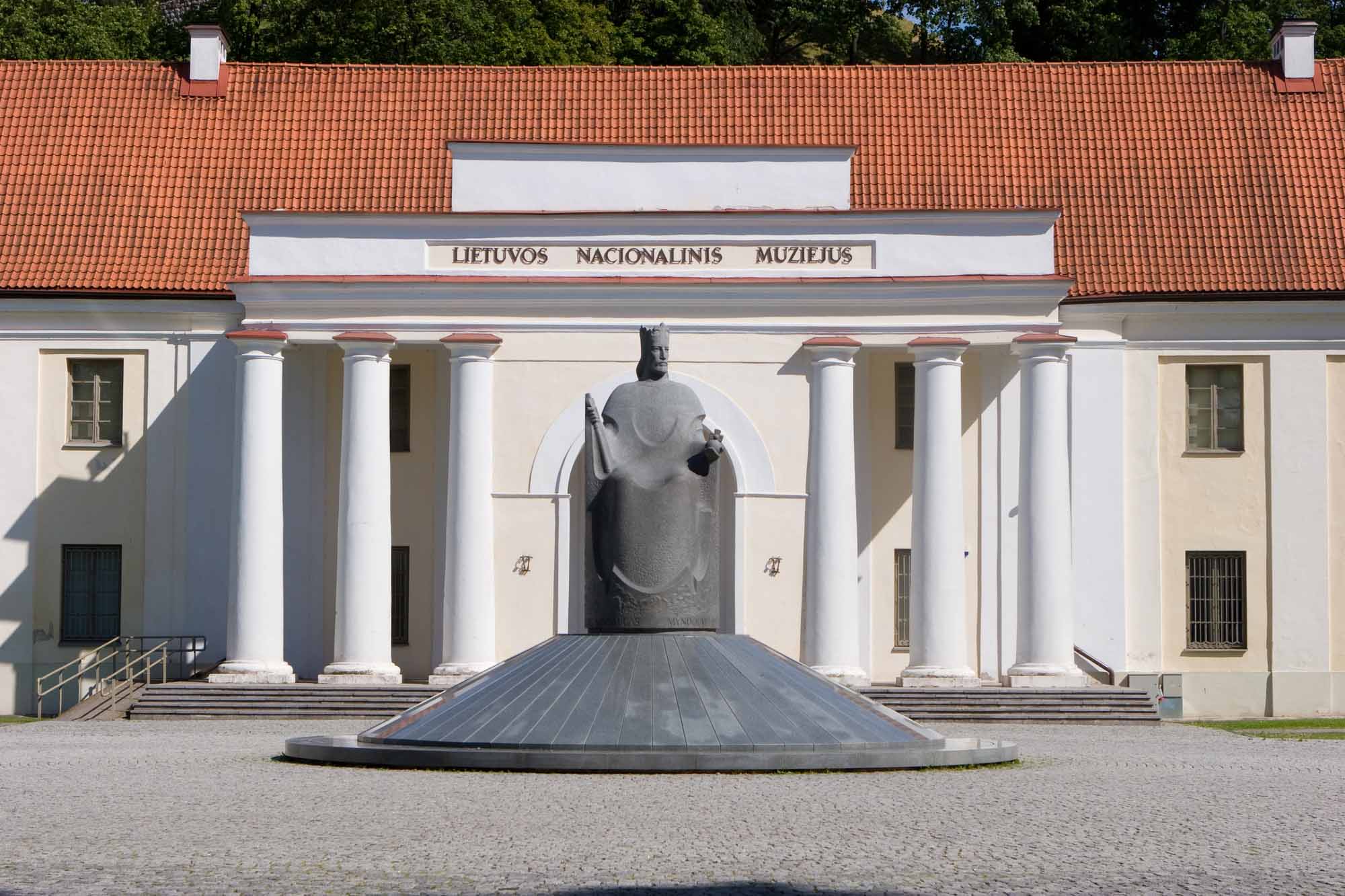
The main exposition of The National Museum of Lithuania located at the New Arsenal building of the Vilnius Castle Complex on the bank of the Vilia River presents the history of Lithuania since the XIII centuriy including artifacts of the Museum of Antiquities which existed in Vilnius in1855-1915 in its authentic original windows of the XIX century, folk art homespun wool and linen canvases of the late XVIII — early XX centuries, bedspreads, tablecloths, towels, peasant clothes, household culture of Lithuanian peasants and the old local traditional craft of crosses making.
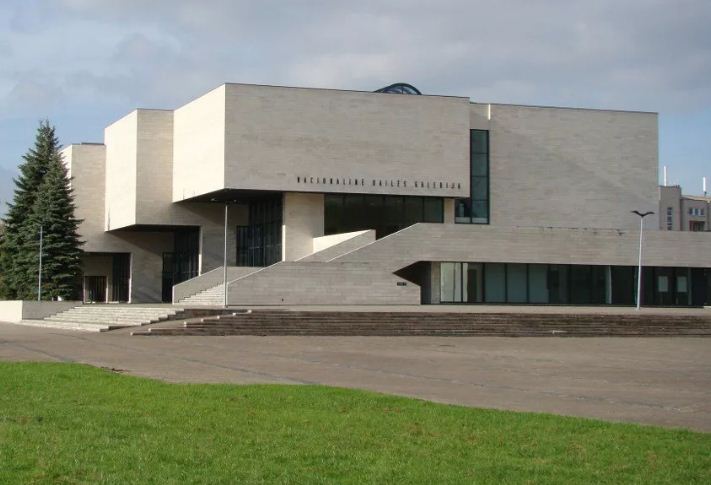
The Vilnius Art Gallery located in the spacious palace of the Chodkiewicz counts is interesting not only with its exhibition presenting the development of fine art in Lithuania since the XVI century to the early XX century but also with the Chodkiewicz Palace late classicism interior.
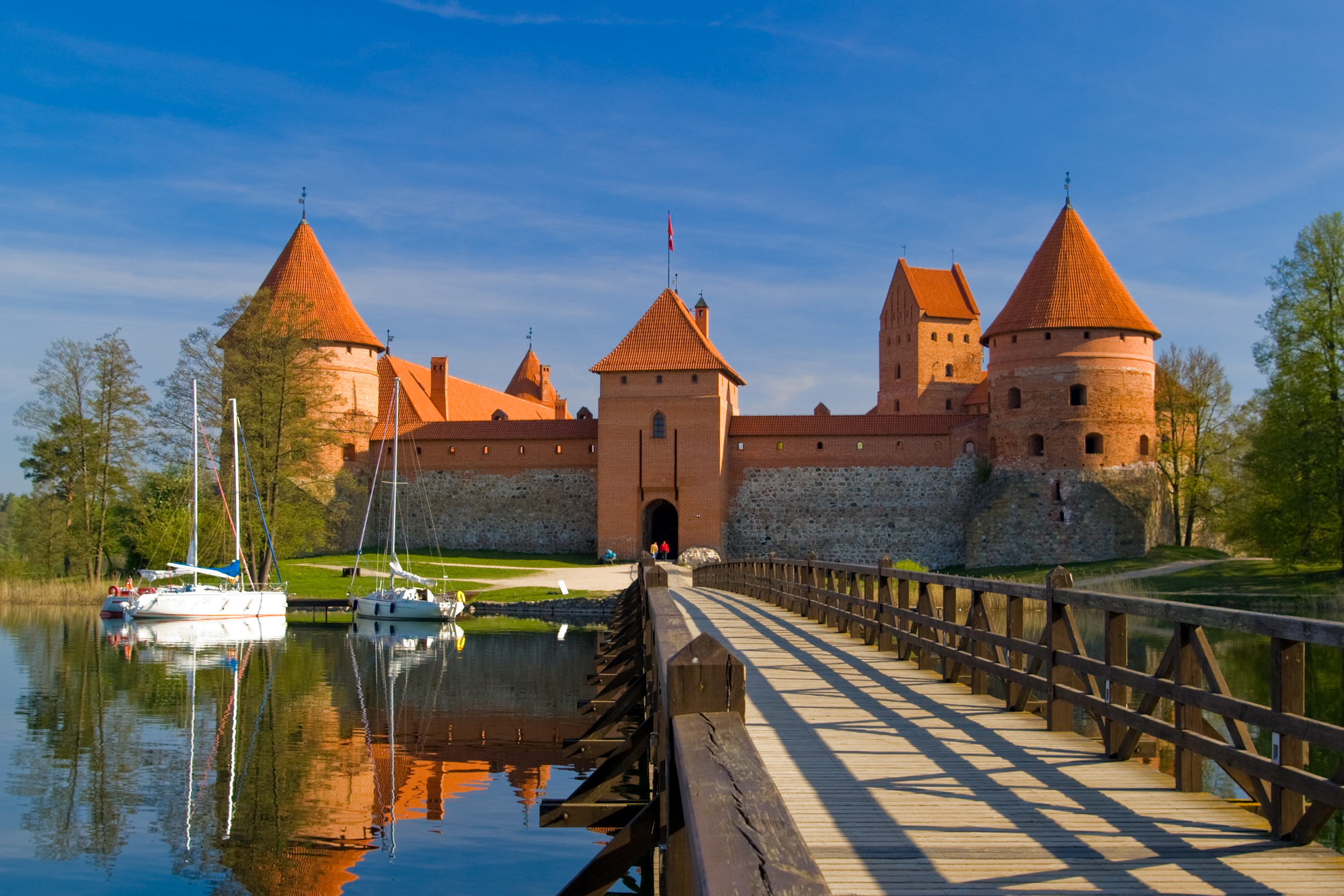
Trakai (26 km to the west of Vilnius) is the former capital of Lithuania known with its castle of the XV century. The castle is located on an island in Lake Galvė. In Soviet times the Trakai History Museum was established in the castle.
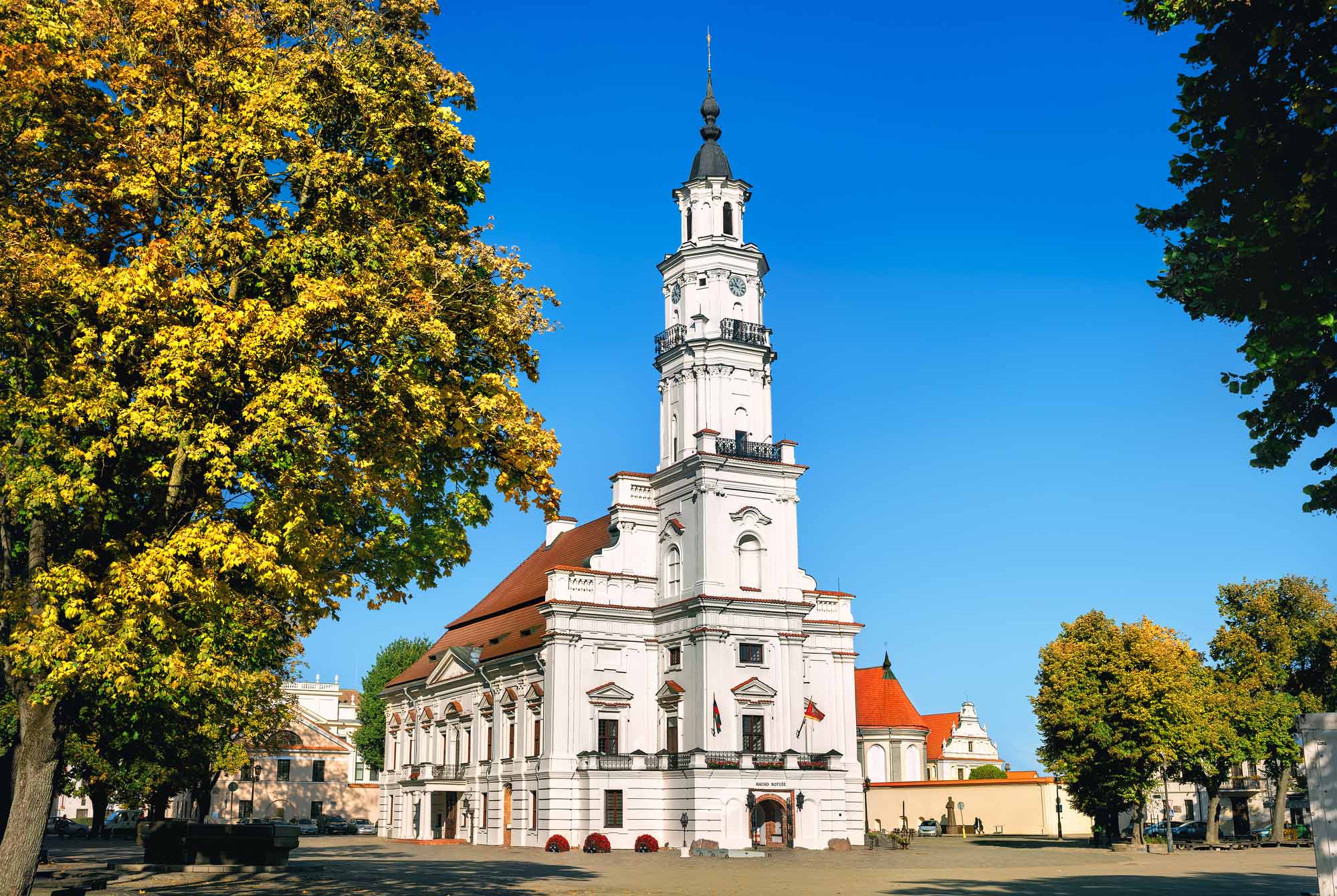
Kaunas (102 km to the west of Vilnius) is one of the oldest cities of Lithuania where you can see architectural monuments of different styles and epochs and where charm of small European provincial town is kept. This small city is also well-known with two its famous museums located just opposite each other and devoted to two painters of local origin. Mikalojus Konstantinas Ciurlionis National Art Museum presents life and work of the greatest genius of the XX century, discoverer of “new spiritual continent” (Romain Rolland). Another famous museum in Kaunas is the only in the world The Devil’s Museum arranged on base of unique collection of local painter Antanas Žmuidzinavičius. Now it is about 3000 masks and small sculptures of different sizes and scales devils (including Hitler and Stalin) brought from all over the world.
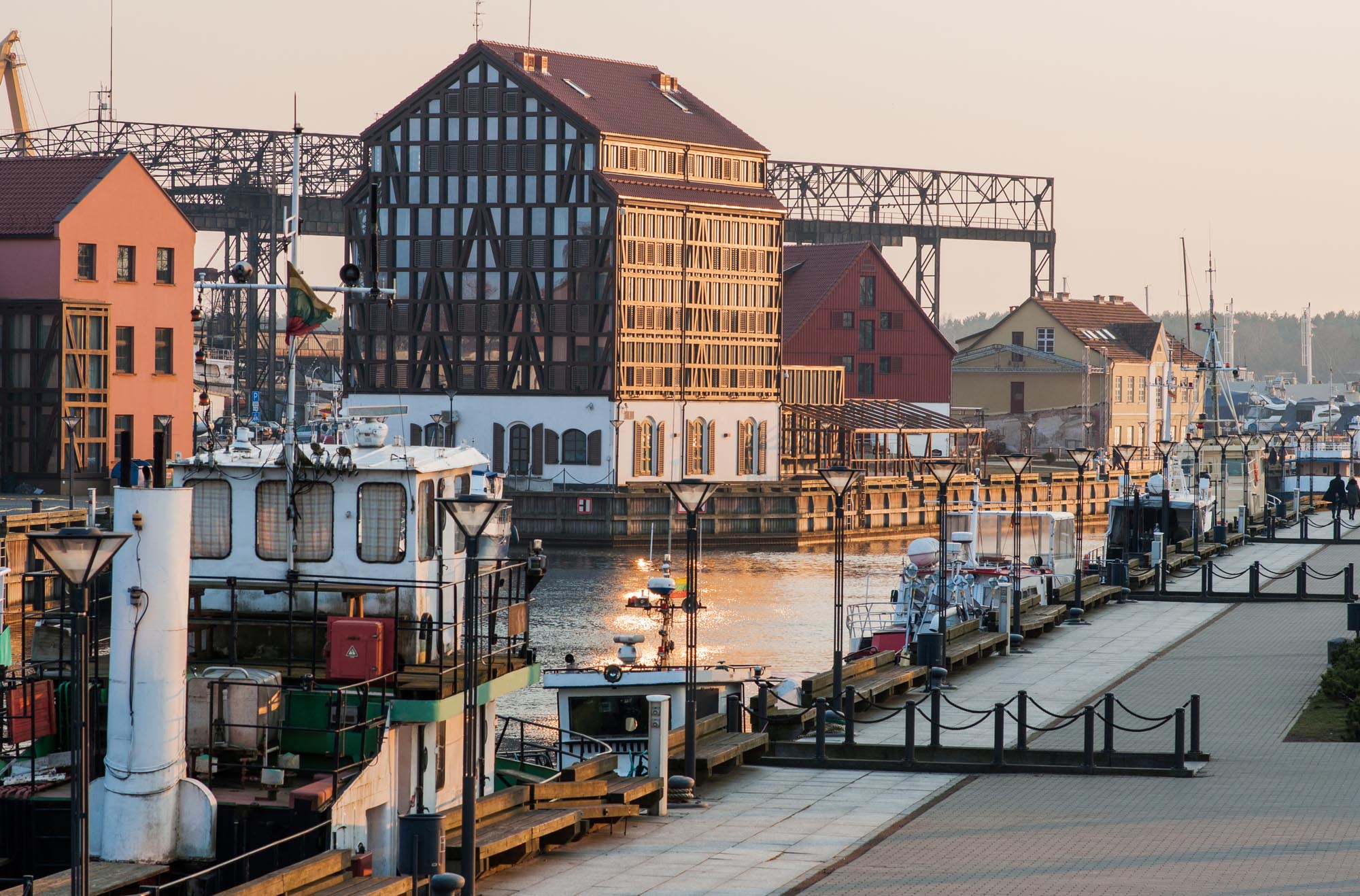
Klaipeda (315 km to the north-west of Vilnius) is the third largest city in Lithuania after Vilnius and Kaunas, the largest port in the Baltic States by cargo turnover and one of the largest ice-free seaports on the Baltic Sea shores. City of Klaipeda and the surrounding region have a special history which is differs from the rest of Lithuania. Until 1525 Memel (German name of the city) belonged to the Teutonic Order and until 1923 to Germany. Long and close relationship with Germany was reflected in the architectural appearance of the city. The exposition of the Museum of the History of Lithuania Minor is devoted to the history of German-Lithuanian relations. Here you will see archaeological finds including collection of unique numismatics (Roman coins, medieval coins of European countries), old maps, postcards, letters, photos, envelopes. The Museum has an interesting and rich iconography of East Prussia and the Klaipeda region. The Clock and Watch Museum presents a variety of devices with which people tried to measure time in different historical epochs. The Museum displays solar, starry, fire, water and hourglass clocks. There is a unique collection of mechanical watches of the XVI-XIX centuries. Modern clocks: electromechanical, electromagnetic, electronic and quartz are also presented here as well as a collection of ancient lunar and lunar-solar calendars.
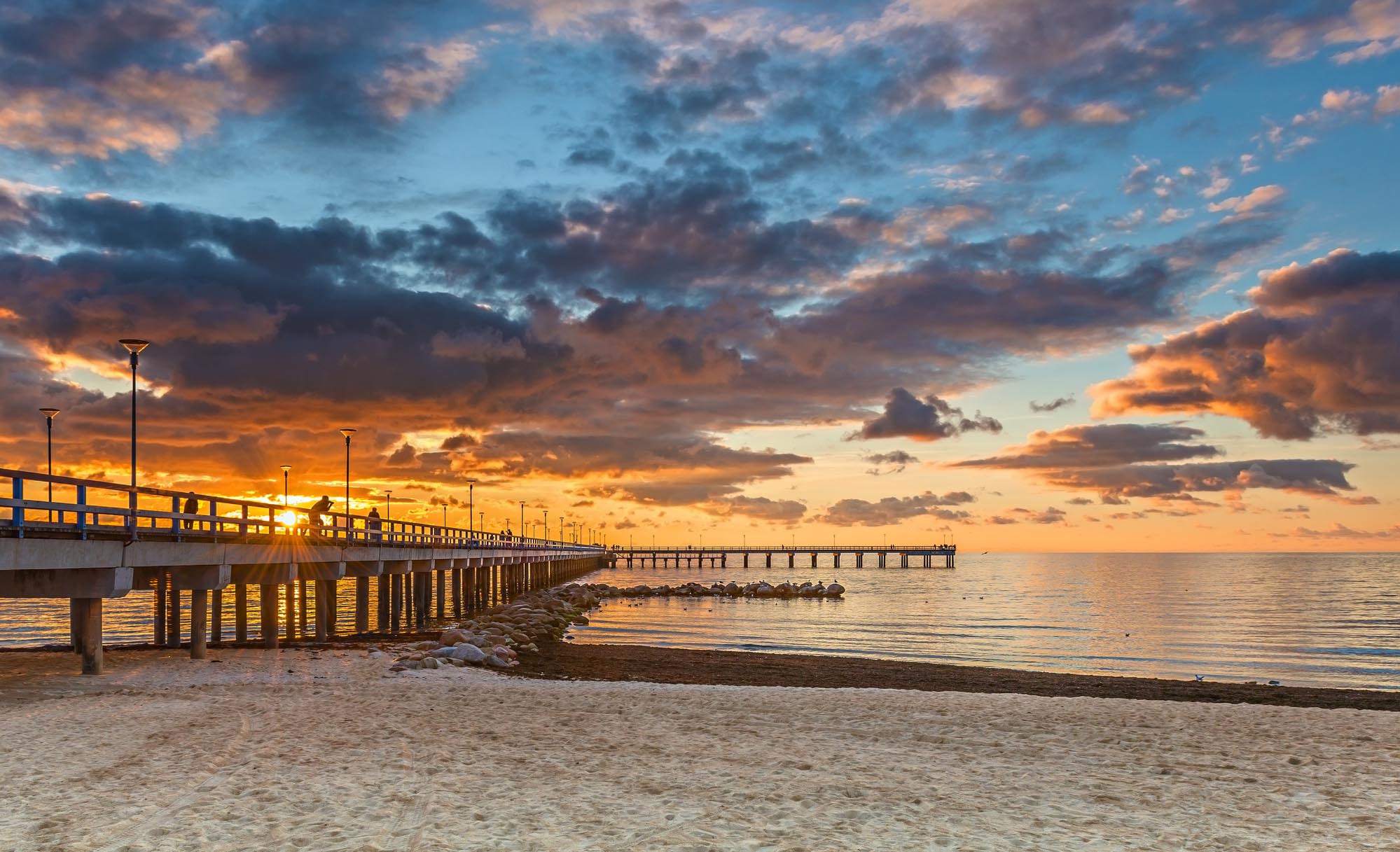
Palanga (340 km to the north-west of Vilnius, 25 km to the north of Klaipeda) is a resort town in the Western part of Lithuania located on the Baltic Sea coast. The main local places of interest are the Botanical Garden and the Amber Museum. The Amber Museum is located in the former Tyszkiewicz Palace (1893-1897) in the center of picturesque Botanical Garden. The Museum devoted to the favorite Lithuanian stone was opened in 1963. Now it has about 4,500 exhibits: amber stones and amber products. Among them inclisions, amber ring of the XV century, amber cross of the XVI century, jewelry, jewelry boxes, cigar holders and rosaries of the XVI-XIX centuries. The collection demonstrates both the formation of amber in the process of evolution and its role in the history and culture. The Palanga Botanical Garden (1897) laid out around the Tyszkiewicz Palace by the famous French landscape architect and botanist Edouard Francois Andre has about 300 species of plants, a lot of interesting sculptures, chapel with stained glass windows and grotto with Virgin Mary statue.
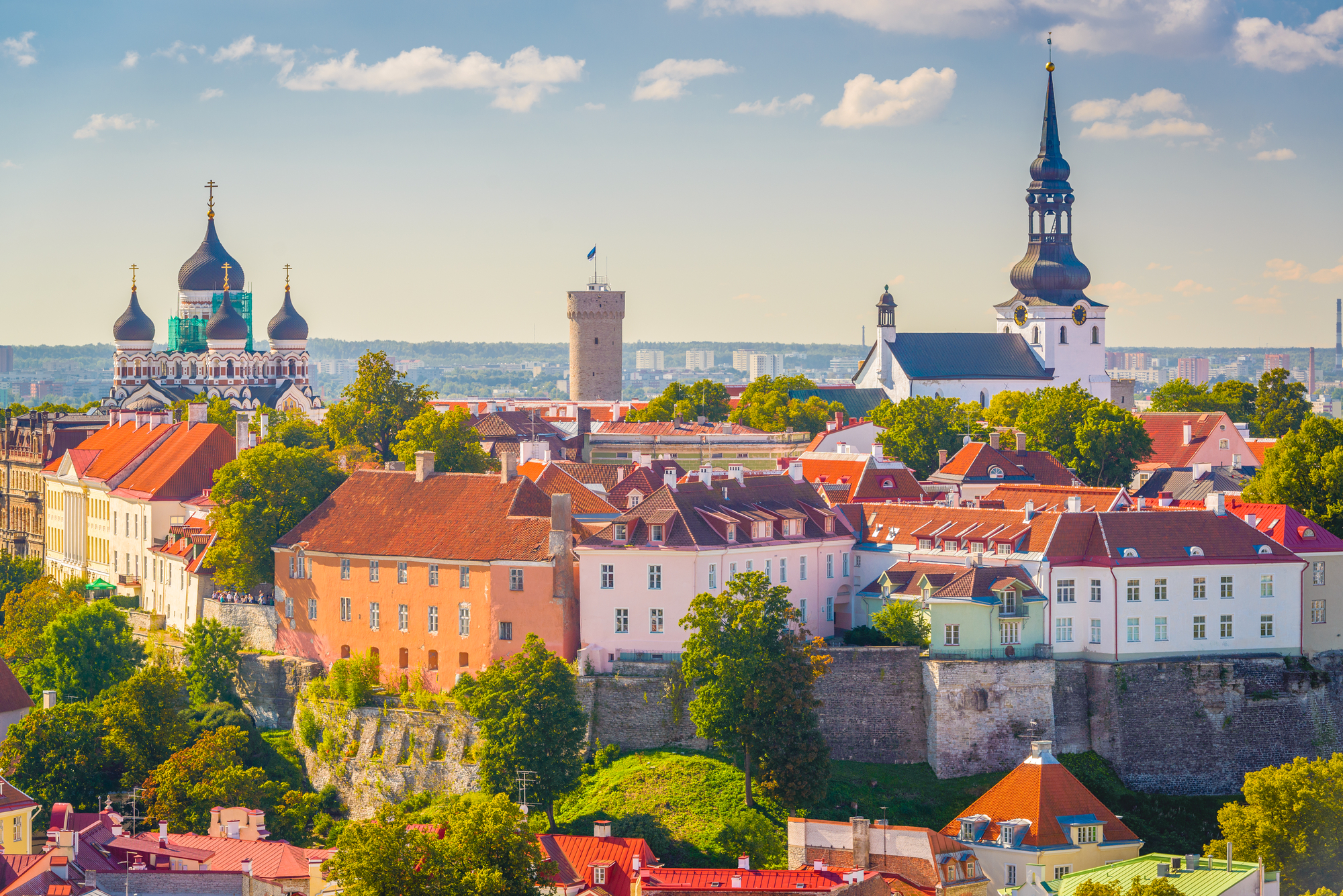
Tallinn lies on the Baltic Sea coast. It first appeared on the map in the XII century. At that time it was called Koluvan in honour of the Estonian national epic hero Kalev. The centre of Tallinn has preserved its charming medieval atmosphere: narrow cobble stone streets, massive city walls, the Town Hall Square and weathercocks. Many fashionable shops return you to the reality of this time. The Old Town is the main sight but not the only one in Tallinn.
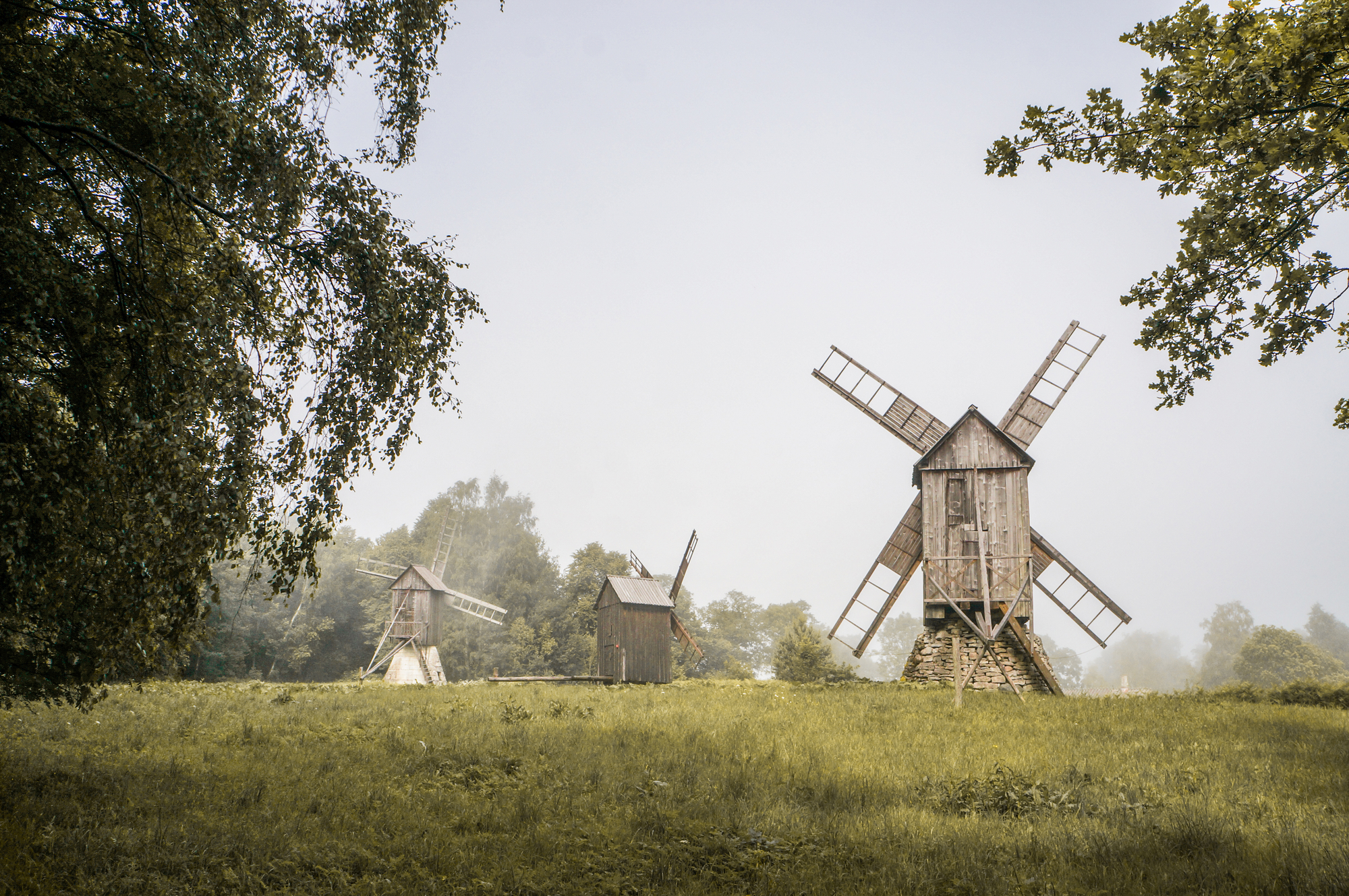
Old peasant farmhouses have been reconstructed at the ethnographic Estonian Open Air Museum (Rokka al Mare) located on the sea coast at the west part of city. The Museum presents the Estonian national architecture of the last two centuries as well as to the traditional way of life of Estonian peasants. It includes about 70 buildings grouped into 11 farmsteads presenting all regions of Estonia and also some public buildings (chapel, village store, school). Inside some buildings you can see items of peasant use, tools, furniture, dishes, etc.
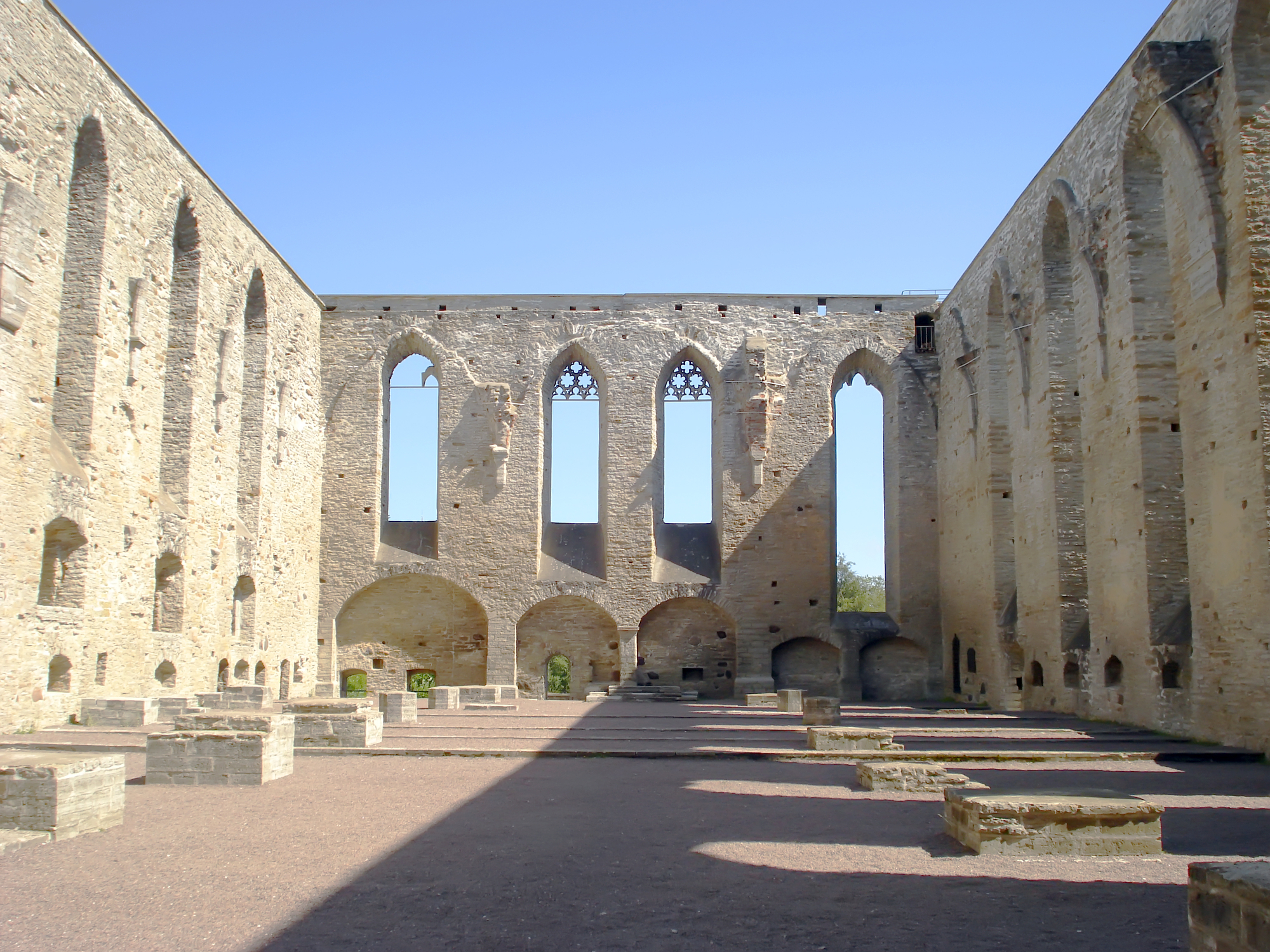
There are the St. Brigitta Convent (XV century) ruins in the picturesque place of Pirita. The Convent was destroyed by the troops of Ivan the Terrible in 1575 during the Livonian War. In Soviet period a comprehensive restoration of the buildings was carried out. The original parts found during the excavations have been returned to their places. The foundations of the lost walls were cleared, strengthened, and opened to view. Small shrub plantings fixed the masonry and created the picturesqueness of the place.

Next to Pirita is the the Kadriorg Park with picturesque ponds. Now it is used as an open-air stage for the Tallinn Song Festival which attracts an audience of 100,000 every year. The Park was laid out near the Baroque Kadriorg Palace founded in 1718 during the Great Northern War as a residence of Peter the Great and his wife Catherine. According to legend Peter I personally put three bricks in its wall. Later, when the outer surface of the walls began to be covered with plaster, the builders left the «Tsar’s» bricks unpainted. These three bricks, in the corner pilaster of the Palace North wing remain unpainted to this day.
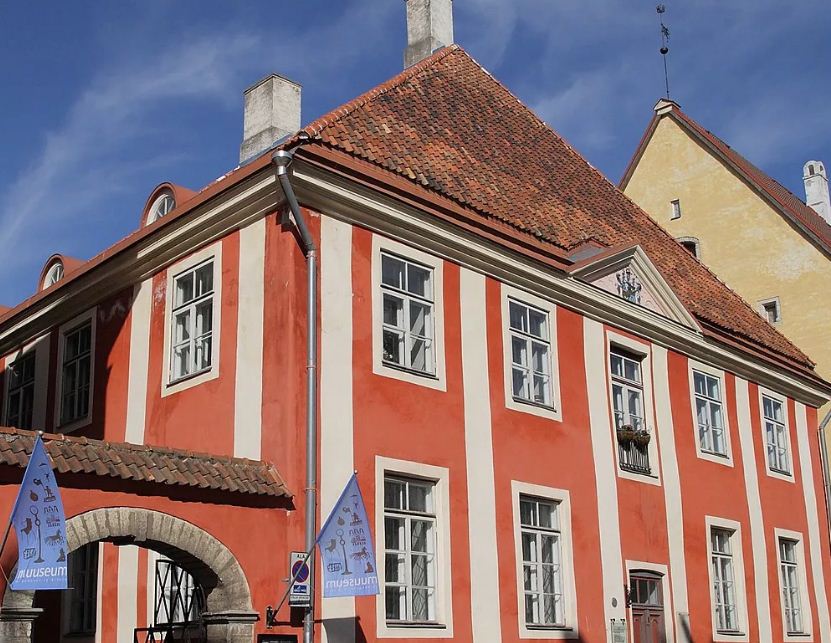
The Estonian Museum of Applied Art and Design located at the building of the former granary built in 1683 presents Estonian professional applied arts from the early XX century to the present: ceramics, books, jewelry, metal and glass products.
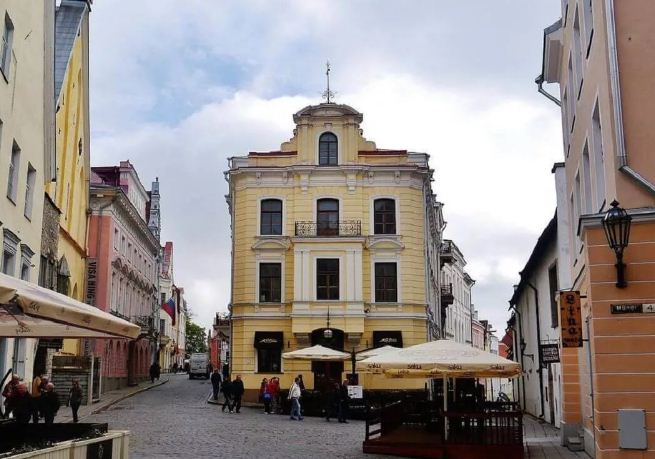
The Museum is not quite correct name for this place. For the first time marzipan selling was started in a small cafe on Pikk Str. at the Old Town, outside the Town Hall chemist’s shop in the XVIII century. This place still exists today: guests can still have traditional dinner with carrot soup and lamb knuckle and for dessert drink coffee with marzipan. Cafe has a marzipan room where you can learn history of this product. The exhibits of this small Museum are figures made of almond dough. There are more than 200 of them. An artist works in the marzipan room. Marzipan painting is a Christmas tradition like drawing snowflakes on gingerbread. On the request of visitors artist can add drawings and inscriptions on marzipan chosen by visitor.
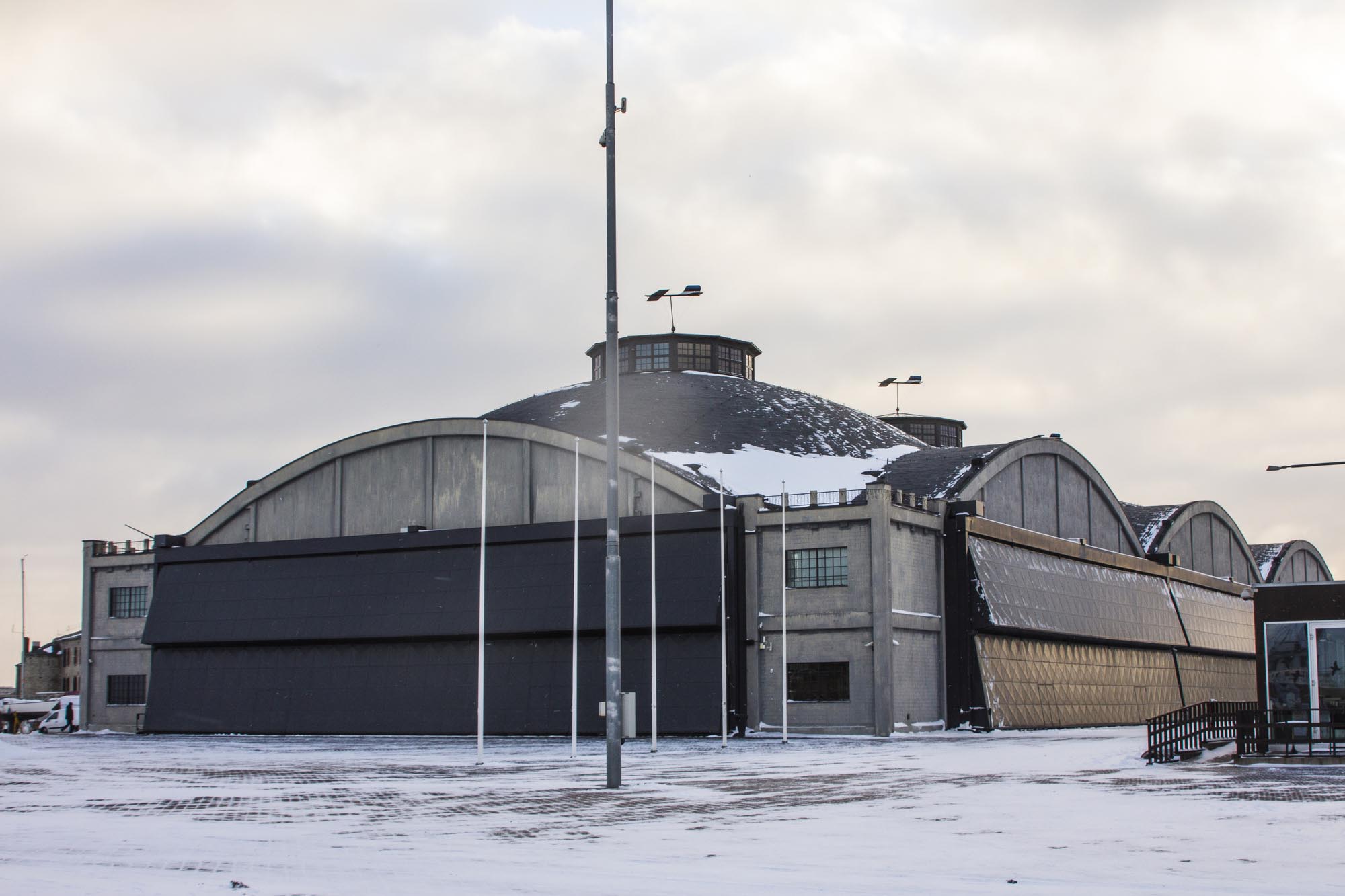
The Estonian Maritime Museum introduces the history of Estonian maritime culture and affairs. Two esteemed permanent exhibitions of the museum are located in the historic Fat Margaret tower and the Seaplane Harbour. Fat Margaret’s interactive exhibition is exhibited in the extensively renovated Great Coastal Gate complex. It tells the history of Estonian seafaring from the Middle Ages to modern times. The Seaplane Harbour, including the Seaplane Hangar, was built to become part of Peter the Great’s naval fortress 100 years ago on orders from the Russian emperor Nicholas II. The building was used for seaplanes until the Second World War. Now the Seaplane Harbour hosts an extremely interactive and large-scale exhibit on the maritime technology of the twentieth century. You will see the authentic submarine Lembit from the 1930s, the century-old steam-powered icebreaker Suur Tõll, a Short 184 seaplane replica, mines, cannons and many other life-sized exhibits.
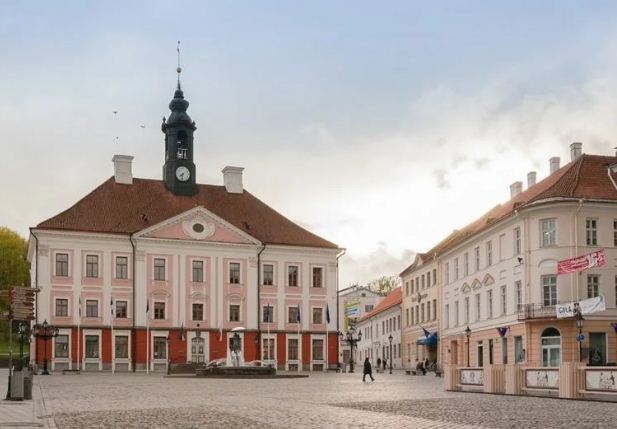
Tartu (187 km to the south-east of Tallinn) is known as city where one of the first in Europe Universities was founded (1632). All interesting architectural monuments of Tartu are located at the small and cozy Old Town. Here you can see the Town Hall (1789) located at the Town Hall Square developed in the early classicism style, charming residential houses, St. John Church (XIV century), the main building of the Tartu University (1804-1809). At the Toomemägi Hill (in the Toome Park) you can see the old University Anatomicum (1803-1805) and the Observatory, the ruins of the Tartu Cathedral (XIII—XV centuries). The choir part of the Cathedral was rebuilt in 1804-1807 into the University Library (there is a museum now). Among XX century constrructions we recommend you to look at the Bank buildings (1936) and the Vanemuine Theater (1967).
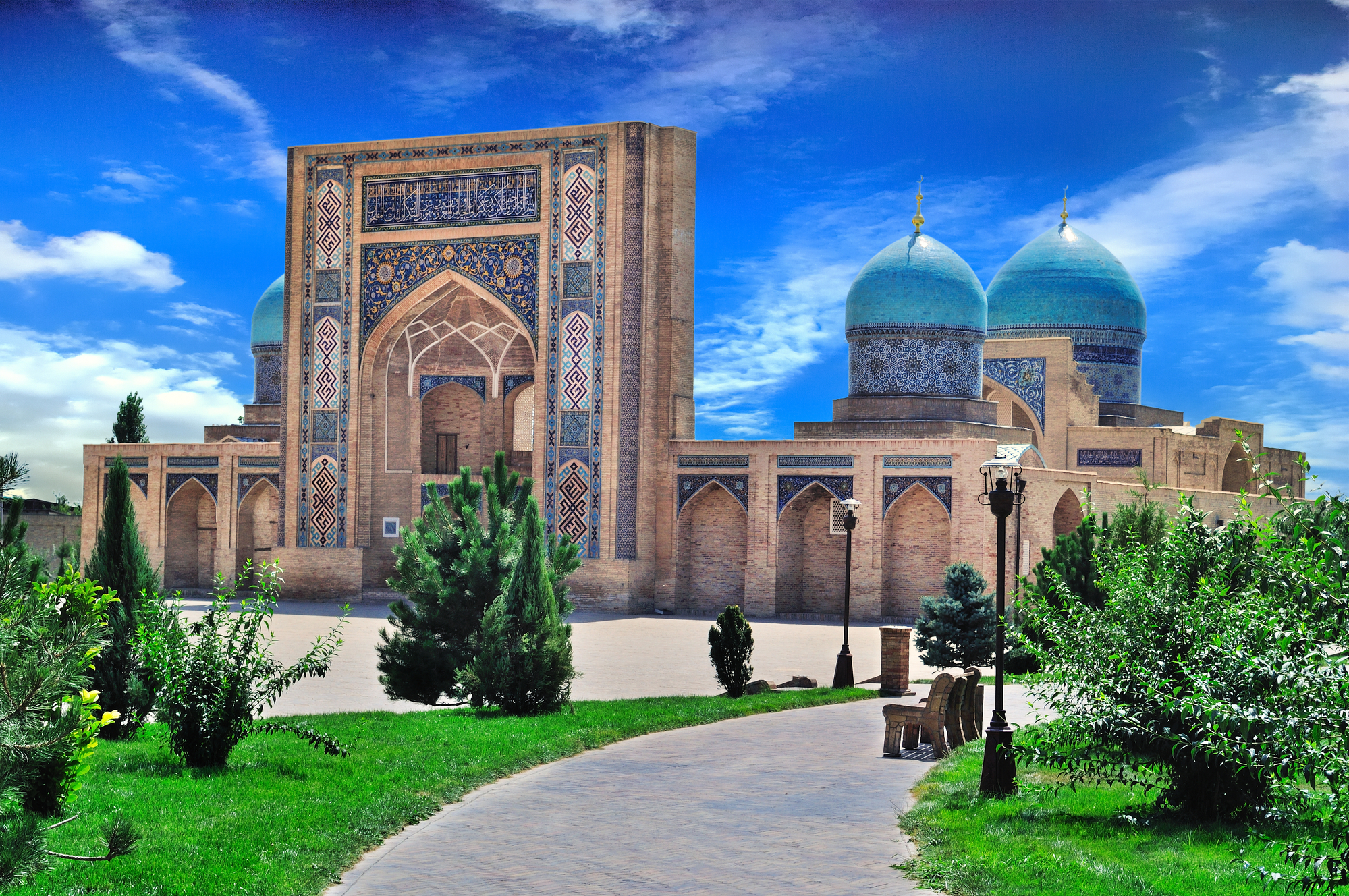
Tashkent, the capital of Uzbekistan, is one of the most beautiful and ancient cities in Central Asia. It is located in the fertile Fergana Valley on the banks of the Chirchiq River. Founded more than 2,000 years ago Tashkent developed rapidly in the Middle Ages due to its advantageous location on the site where different trade routes from Europe to China and India as well as from Siberia to the Middle East were crossed. Caravans going by the Great Silk Road always passes Chach (the ancient name of Tashkent). Tashkent today is city with wide streets, numerous squares, parks, gardens, fontains and multistory apartment houses with more than 2 million population. The most interesting extant architectural monuments are the Kukeldash Madrasah, Barak-Khan Madrasah and the Kaffal-Shoshi Mausoleum (XVI century), the Dzhuma Mosque (XV century).

Museum of History of Uzbekistan founded by Russian scientists in 1876 presents items allowing us to trace the historical development of the peoples who inhabited Central Asia in the past since the Stone Age to the present day. The Museum exhibits include a large bronze Saka cauldron decorated with animal figurines of the IV-V century B.C. and a sculpture of Buddha of the I century which was found by archaeologists during excavations. The Museum’s exhibits devoted to the Timurid Dynasty period allow us to see flourishing of the great medieval civilization with all its achievements in science and poetry, in the art of book miniatures, in architecture and various crafts. More detailed and complete information devoted to Mongol warlord Timur (Tamerlane) and representatives of the dynasty he founded is presented at the Amir Timur Museum. Museum of Applied Arts of Uzbekistan illustrates the history of decorative art in Uzbekistan: wood carving, ceramics, coinage, the art of jewelers, goldsmiths, embroiderers, samples of mass production of local industry.
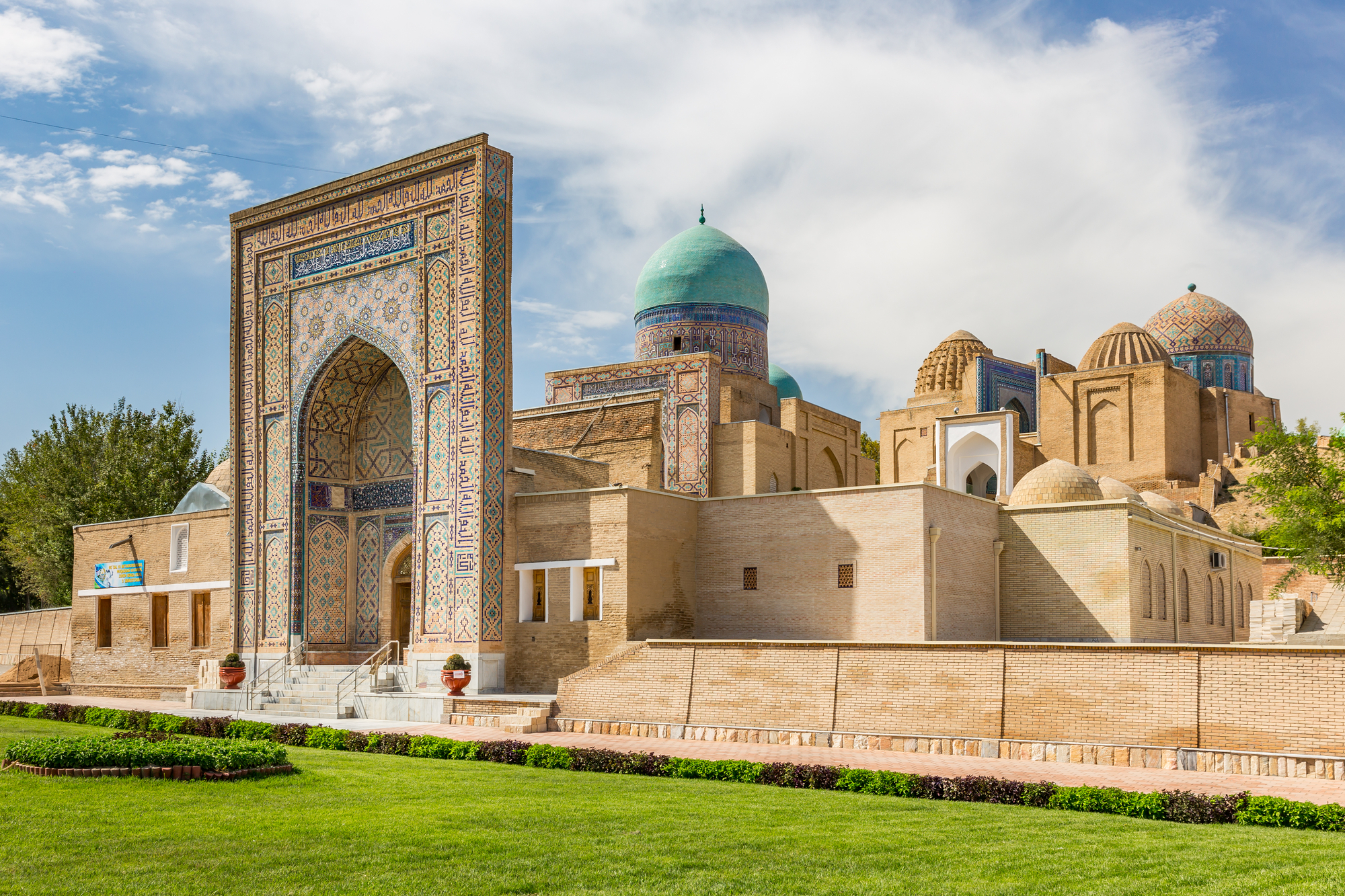
Samarkand founded in the VIII century B.C. is one of the oldest cities in the world. The excavations on the outskirts of Samarkand revealed the mystery of its foundations. The Great Silk Road passed through Samarkand. It is actual city-museum well-known for its famous splendors of medieval Moslem architecture. During very long period Samarkand was the capital of powerful state of Sogdiana. In 1369 conqueror Timur (Tamerlane) made Samarkand the capital of his vast empire. The unique beauty of the monuments created by Timur and his successors still evokes admiration and wonder. One of the most famous architectural monuments of Samarkand is Shah-i-Zinda, masterpiece of unequalled craftsmanship placed on the slope of the Afrasiyab Mount like a blue necklace. It is chain of small mausoleums dating from different centuries. Close to the ancient bazaar the magnificent ruins of the XIV century huge Bibi-Khanym Mosque rise. The XV century Gur-e-Amir Mausoleum, the tomb of Timur is decorated with turquoise-coloured dome shaped as a tulip bud faced with glazed tiles. There is a famous observatory of the great astronomer and scholar Ulugbek in Samarkand (XV century).
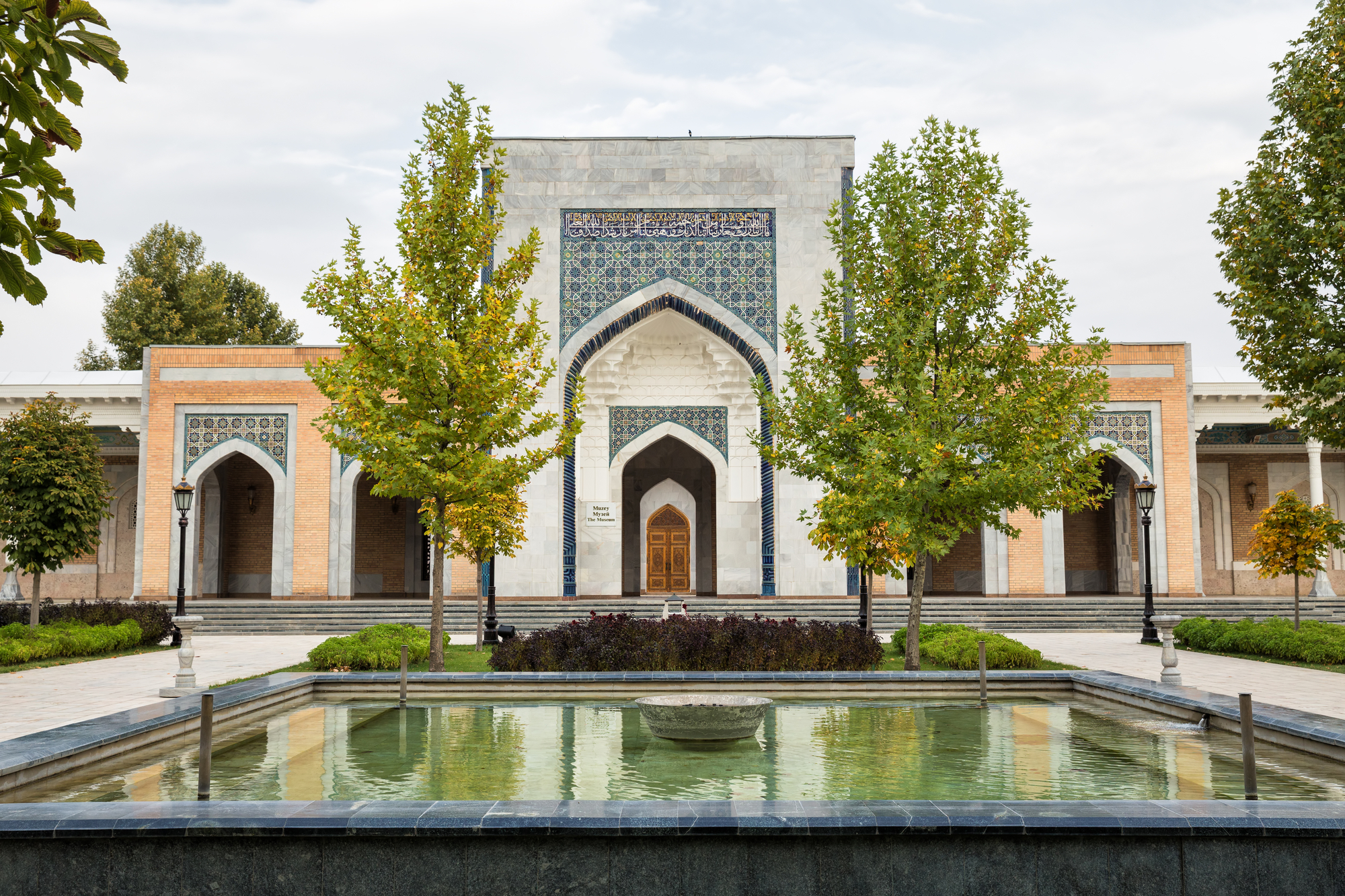
Mausoleum of Muhammad al-Bukhari located at qishlaq Hartang (16 km to the north of Samarkand) built in 1997-1998 on place where famous Islamic scientist and religious figure Muhammad al-Bukhari (IX century) was buried is one of the most revered shrines of Islam in Central Asia. In the XVI century a small mausoleum and mosque were built there. At the same time plane trees were planted near the mausoleum. They can still be seen on the modern complex grounds.
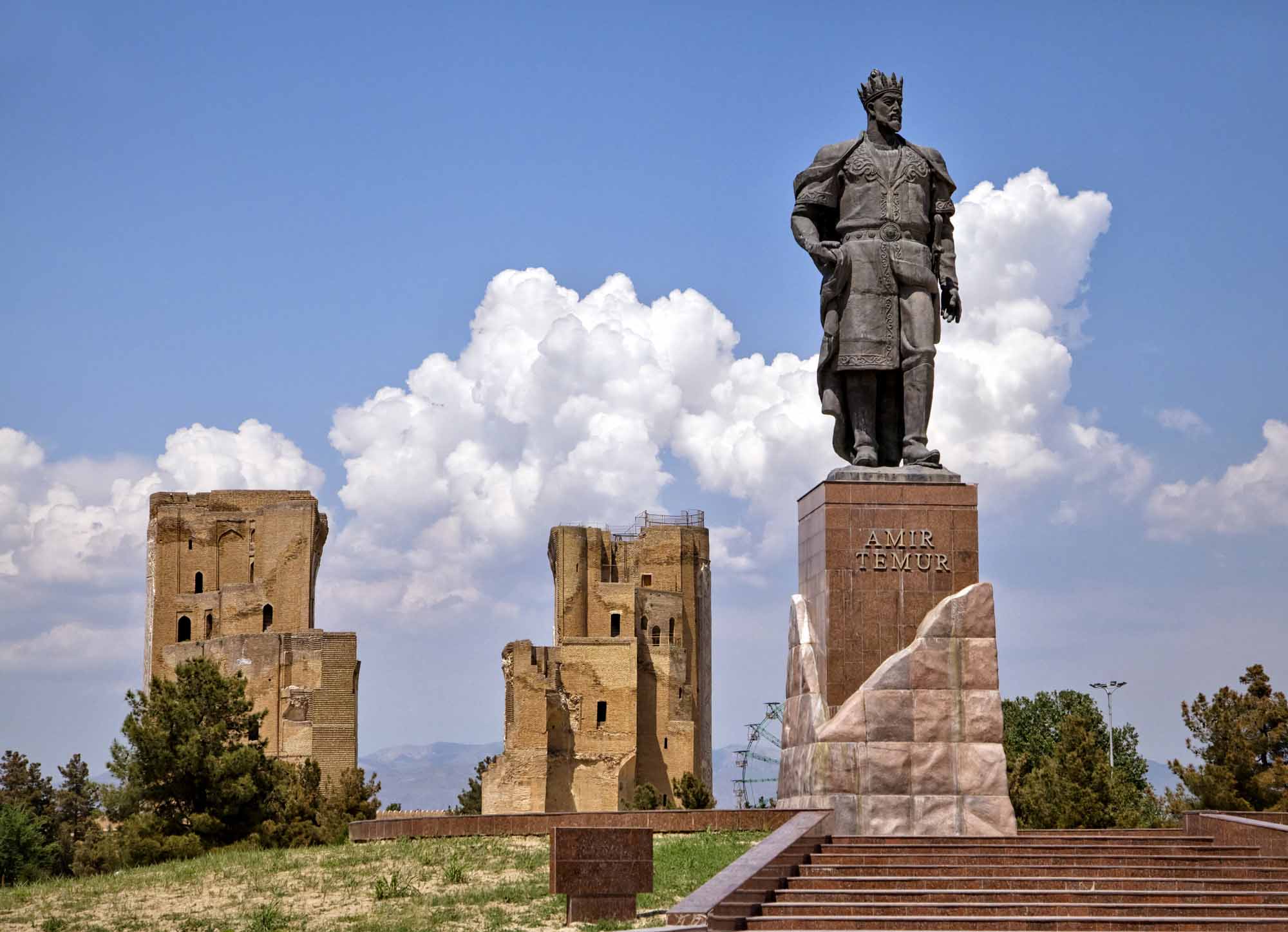
Full day tour to ancient city of Shahrisabz (90 km to the south of Samarkand) is recommended. The most famous monument of Shakhrisabz is grandiose ruins of Aksaroy Palace (late XIV – early XV centuries) built by Timur in his homeland. In 2000 the historical center of the city with its archaeological, architectural, religious and cultural monuments was included in the UNESCO World Heritage List.
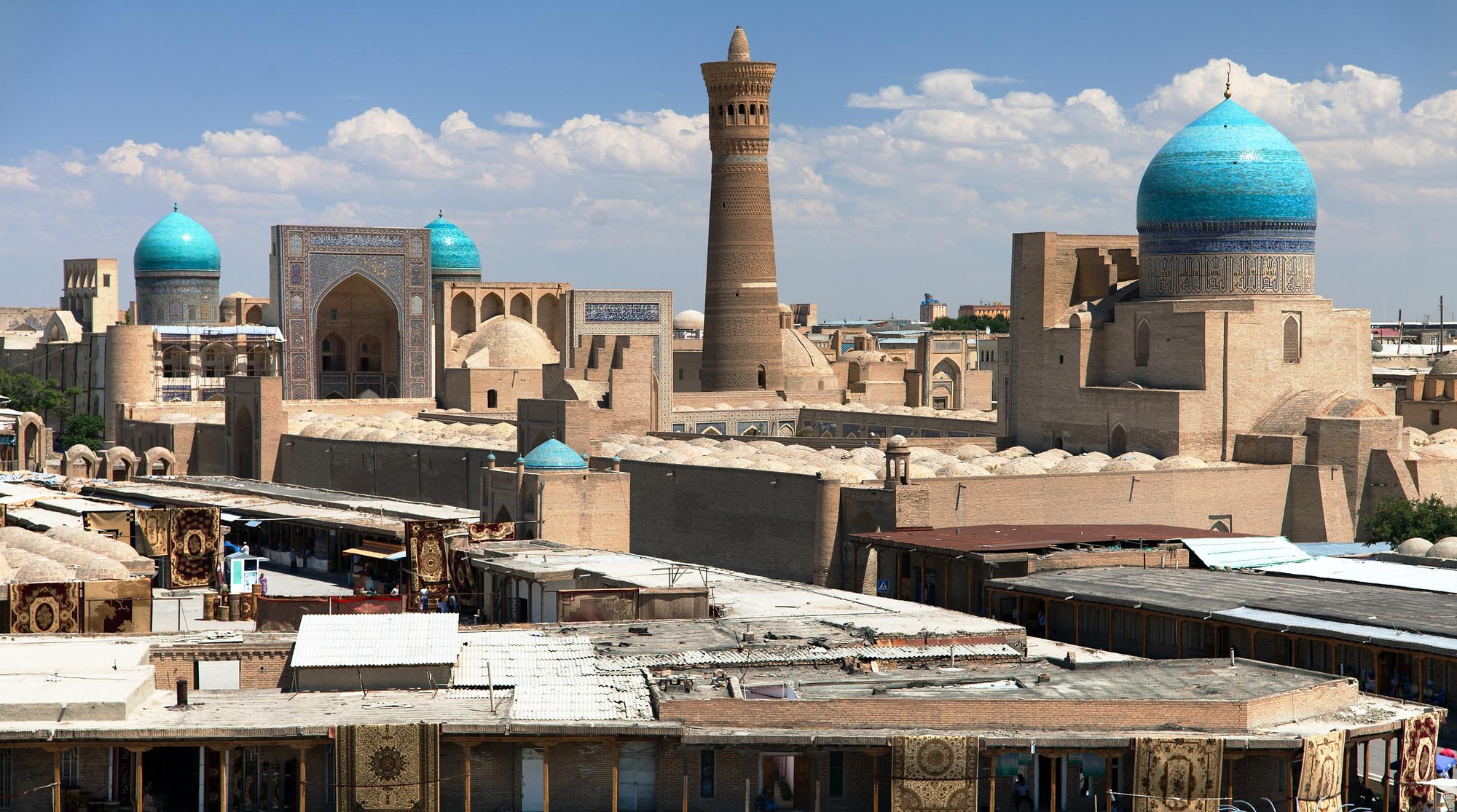
Bukhara is one of the most ancient cities of Central Asia, very important checkpoint in the Great Silk Road. Name “Bukhara” is derived from the word “Vikhara” which means “monastery”. In the VI-IX centuries the city was the capital of the Bukhara Khanate. There about 140 historical and architectural monuments in Bukhara. The oldest are the Ark Fortress associated with names of Rudaki, Ibn Sina (Avicenna), Omar Khayyam who worked there and Ismail Samani Mausoleum (IX-X centuries). The Kalyan Minaret of the Po-i-Kalyan Mosque (XII century) is the highest building of the city and its well-known architectural symbol. We recommend you to visit two country residences of the last Bukhara Emirs. One of them was built in 1895-1898 at town of Kogon (12 km to the east of Bukhara). The eclectic construction of the Palace with many towers, domes and columns was built in neo-Moorish style combined with Baroque and Empire styles. Located near the railway station the Palace was used as a residence for dignitaries whj came to Bukhara. The second one, the Sitorai Mokhi Khosa (4 km to the north of Bukhara) was completely rebuilt in 1912-1920 in the European style but it is traditionally divided into male and female parts and its interior is decorated in Oriental style.
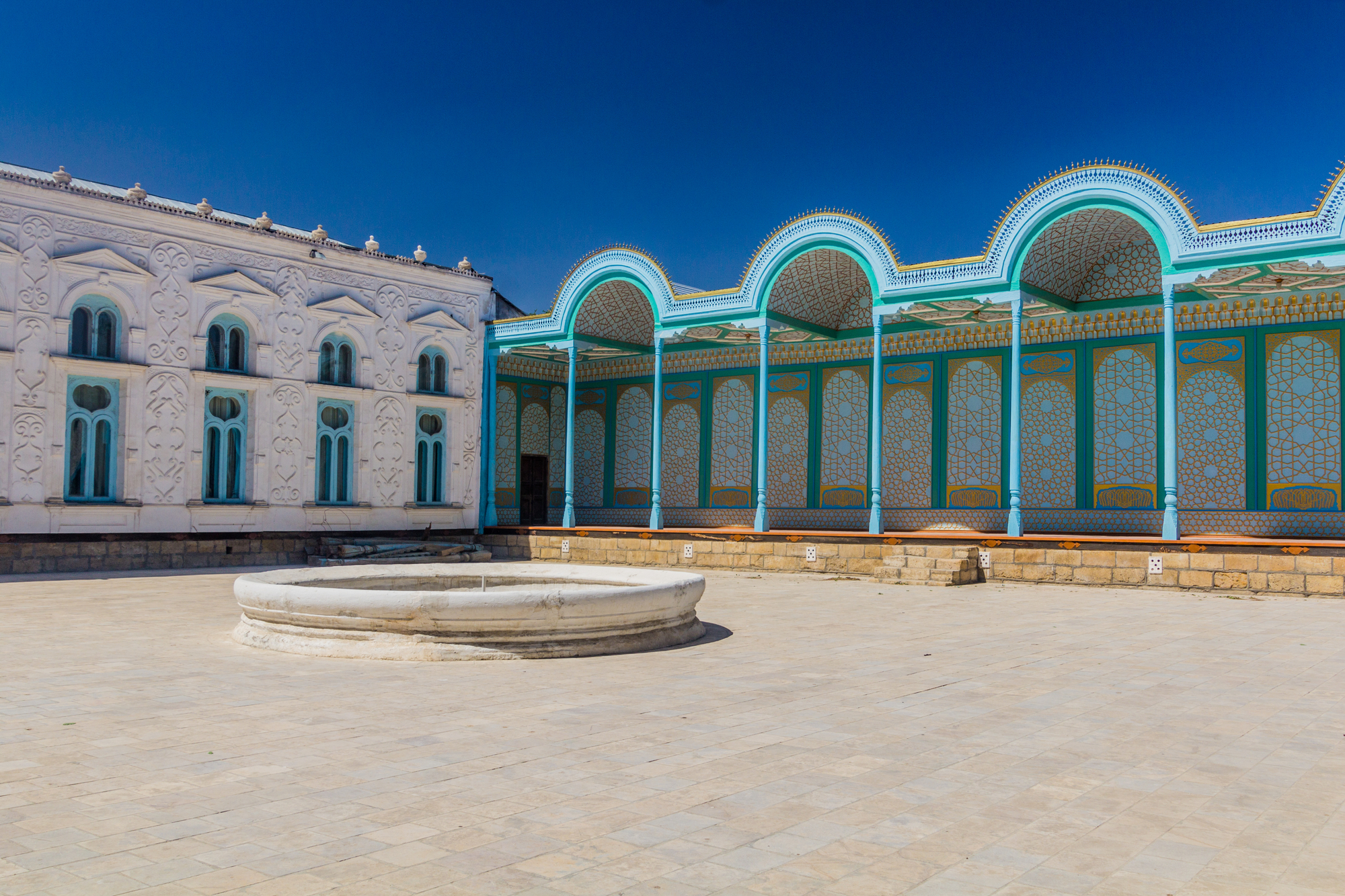
The Museum of Applied Art presently located at the Sitorai Mokhi Khosa presents the interior of the former Emir residence (furniture of the XIX-XX centuries, Chinese and Japanese porcelain of the XIV-XX centuries, art objects from Russia, jewelry of famous Bukhara masters, gold-embroidered panels and blankets); decorative embroidery (panel suzani, prayer rugs, covers for pillows, curtains chimildiq); gold-embroidered clothing, belts, shawls, shoes; interior of Bukhara city ordinary residents house.
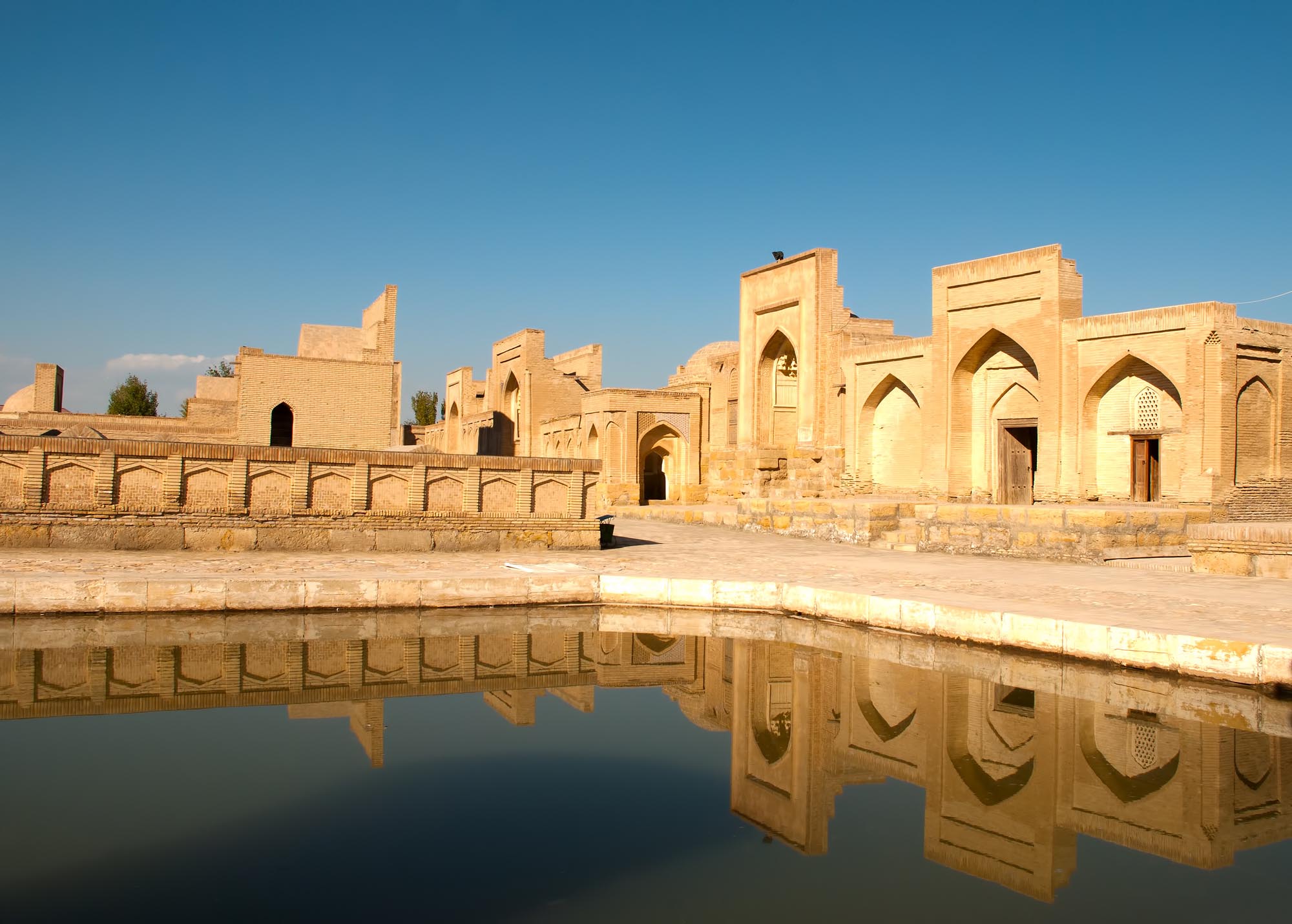
Chor-Bakr (City of the Dead) located in the Bukhara west outskirts of (8 km to the west) was mostly built in the XVI century. It is actually a kind of city with mosque, khanqah and madrasah in its center, with streets, courtyards, gates but with family dakhmas and tombstones erected instead of houses everywhere.
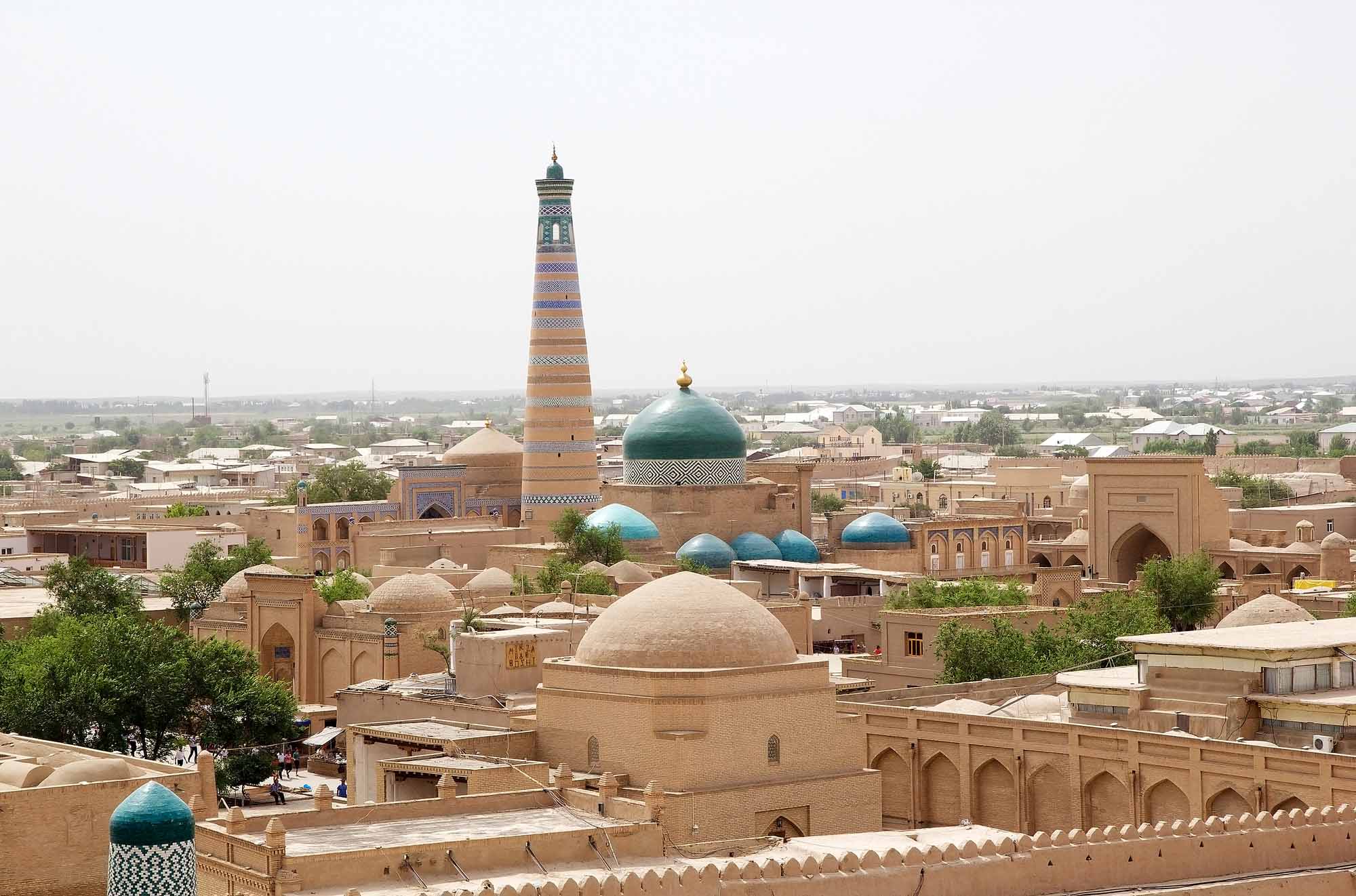
The first record of Khiva was made in the X century. In XVI century it became the capital of the Khiva Khanate. Khiva is a city from a fairy-tale. It still retained the exotic flavor of a medieval Oriental town in the Itchan Kala (Internal City), the old part of Khiva where all architectural monuments are located. Today Khiva is museum city. There are no high bildings and wide streets. It is very hard to enumerate all historic sites of Khiva. There are palaces decorated with colorful mosaics, adobe houses, many madrassahs, minarets, mosques in Khiva. The most impressive and unique monuments are: the Madrassah of Muhammad Amin Khan (mid-XIX century), the Kunya-Ark (old fortress of the XVIII century, one of the Khiva Khans’ residence), the Mausoleum of Said Allaudin (a monument of the Mongol period, XIV century), the Dzhuma Mosque, Caravanserai and covered market of Allaculi Khan (1835), gates of the Dishan Kala (External City), high and beautiful Islam-Khoja Minaret (1908-1910). The distinctive feature of Khiva is the location of museums in ancient historical buildings which allows having not only informative tour but also do real time travel. Museum of Applied Art and Life situated in the building of former madrasah (early XX century) is one of the most interesting museums in Uzbekistan. Here visitors can get acquainted with the works of the XVIII-XIX centuries craftsmen as well as with some samples of XX century: jewelry, wood and stone carving, ceramics, carpet weaving and various household items.